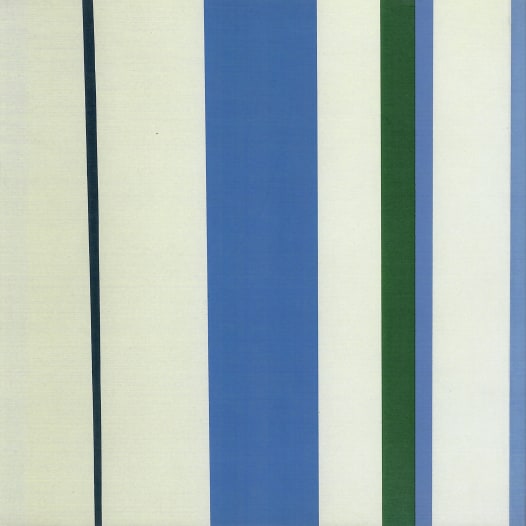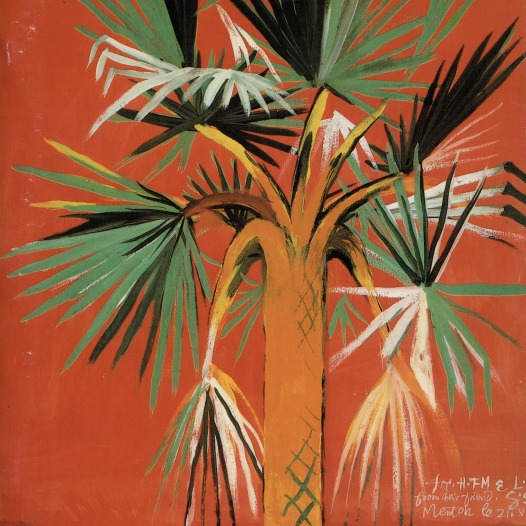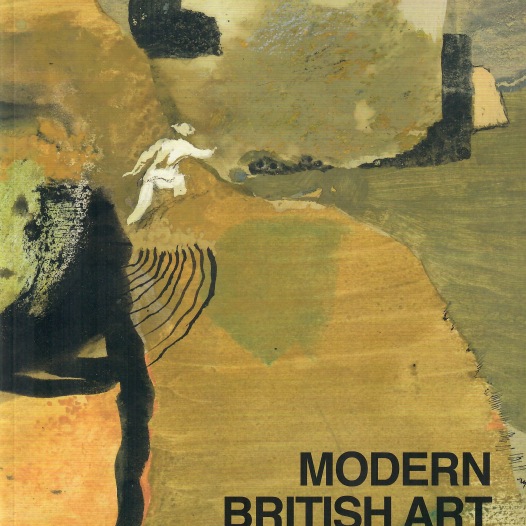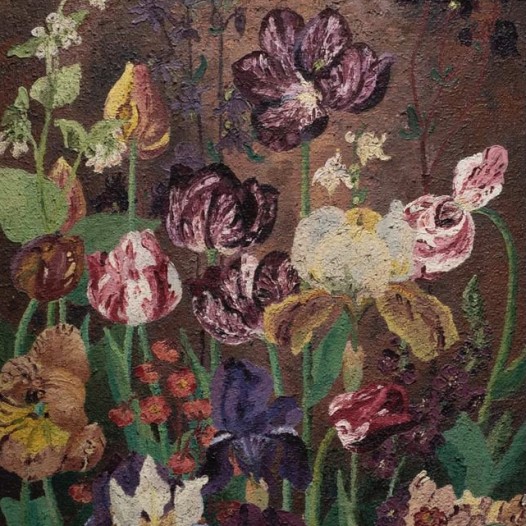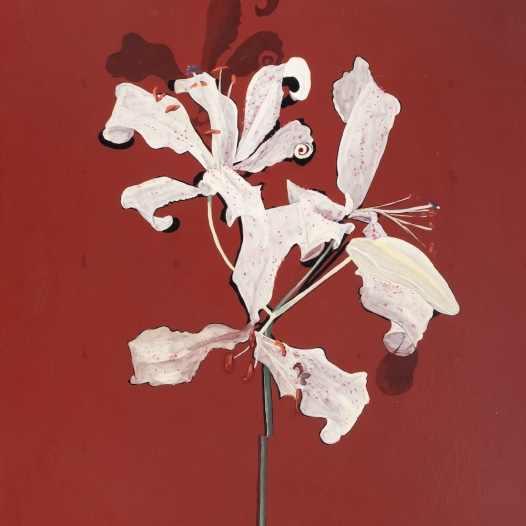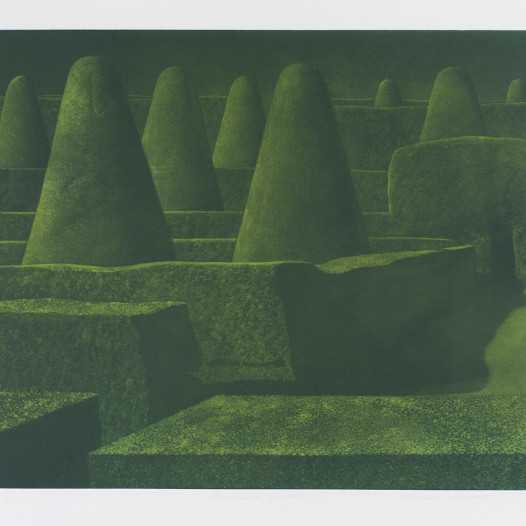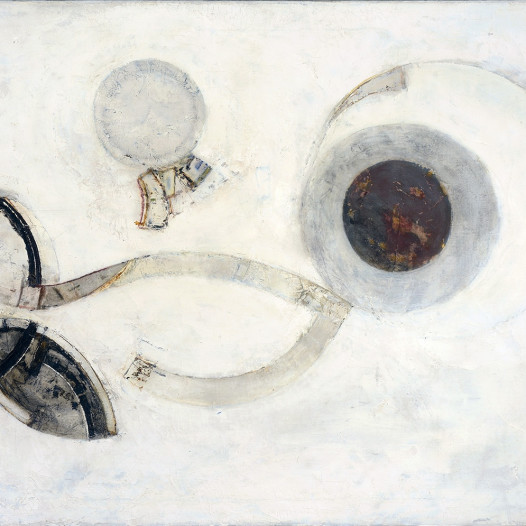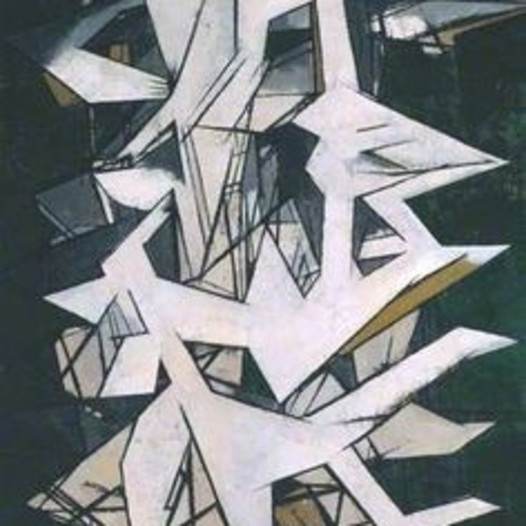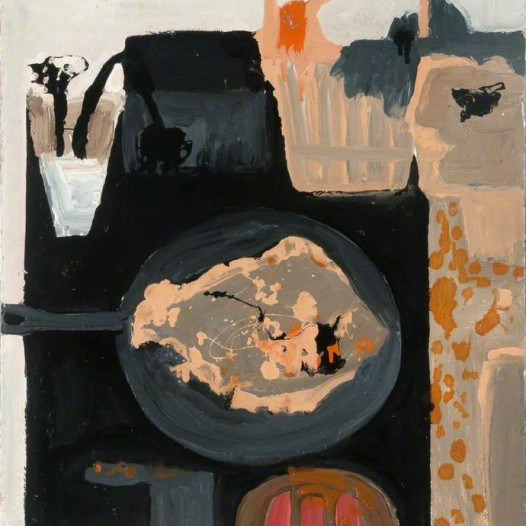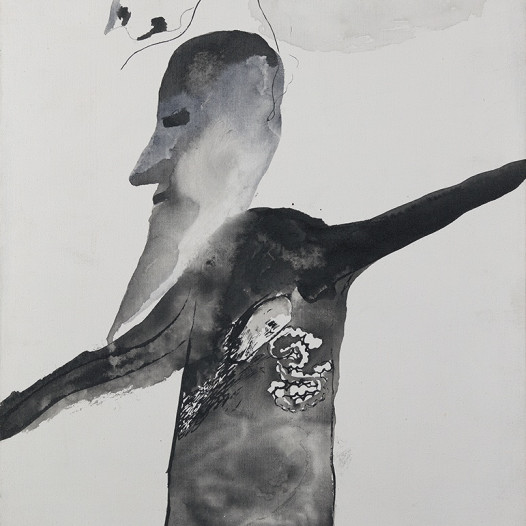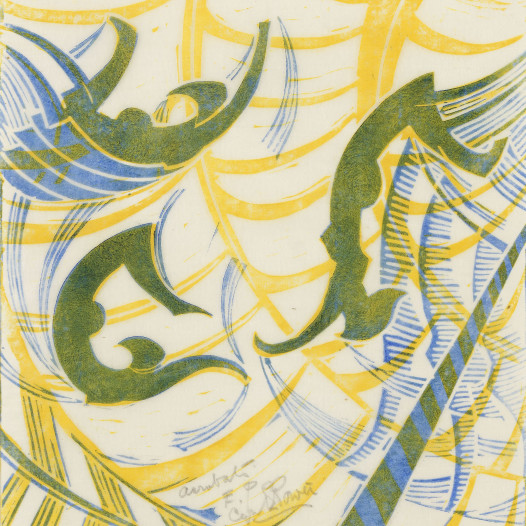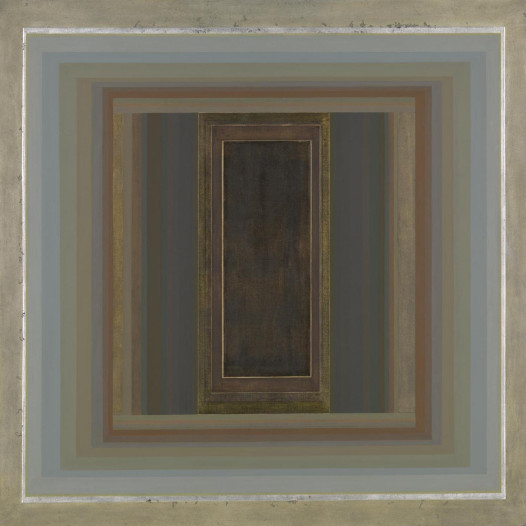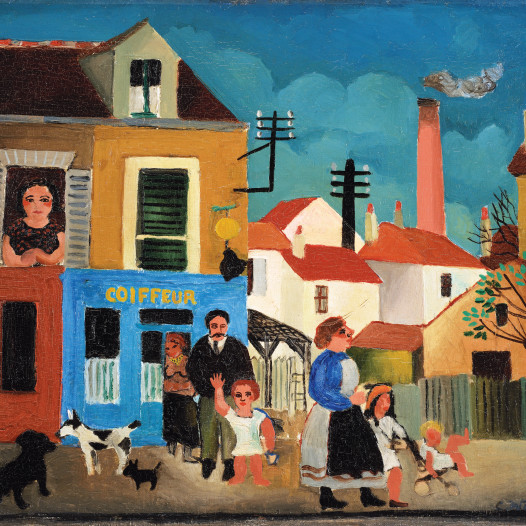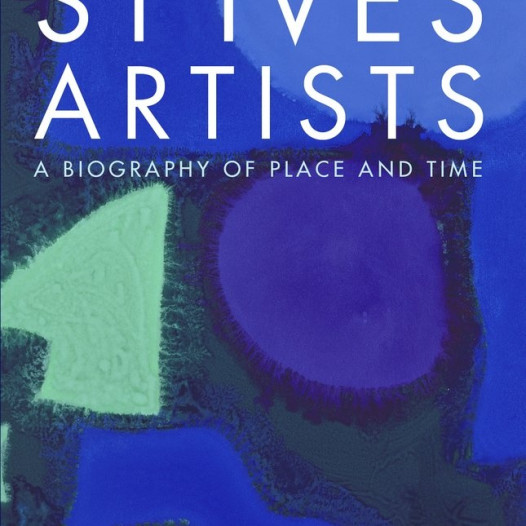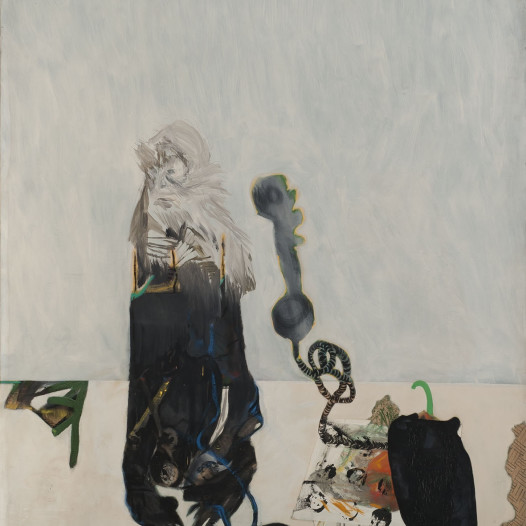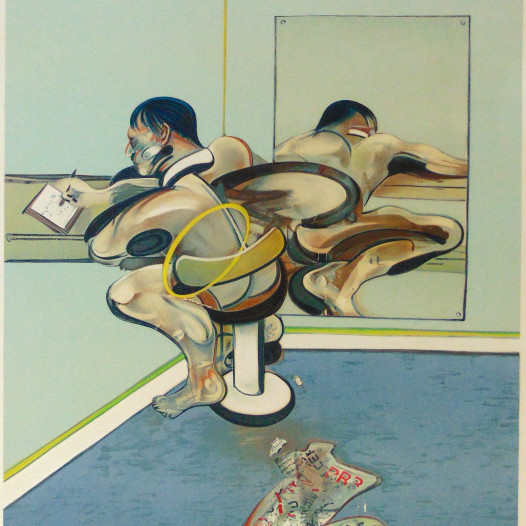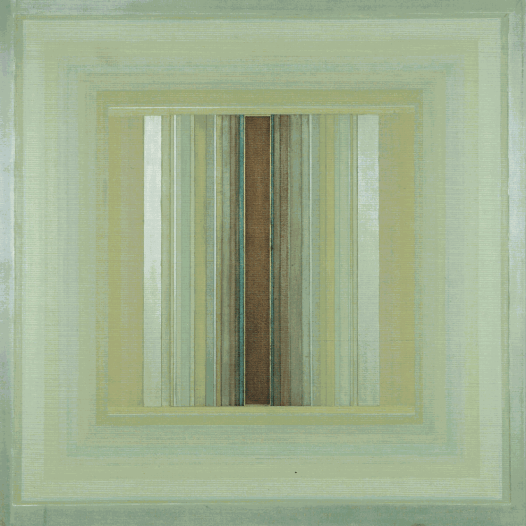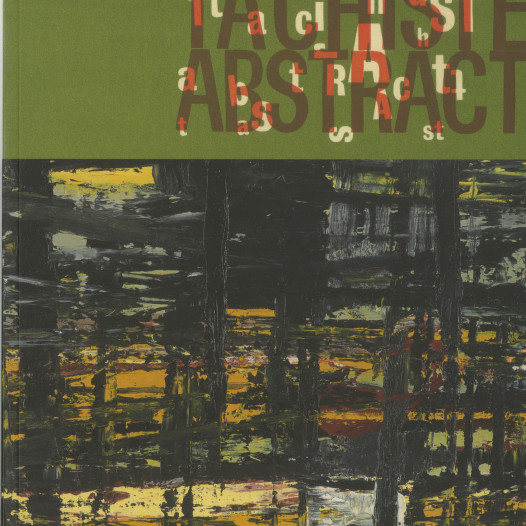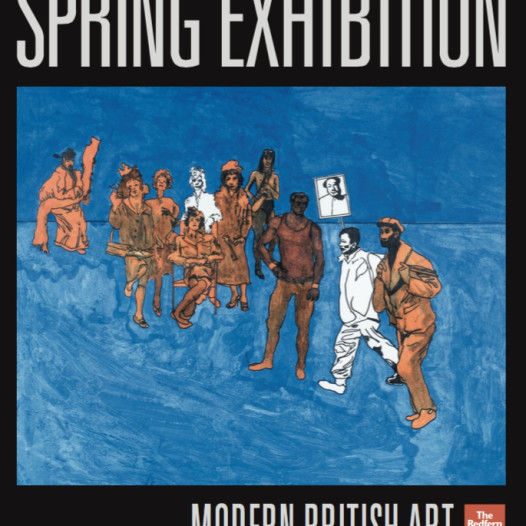Paul Feiler
1918–2013Paul Feiler was part of the influential second generation of St Ives artists, which included Terry Frost, Patrick Heron, Roger Hilton, Peter Lanyon and Bryan Wynter, who enjoyed much success during the 1950s and '60s. He was particularly close friends with Frost and Lanyon, with whom he famously welcomed Mark Rothko to his studio one afternoon in 1958. For Lanyon, Feiler's paintings stirred in him "a sense of pause ... to achieve that repose in the landscape I know one has to suffer the opposite", while his later series of shrine-like paintings were described by Alan Davie as "some of the most mystical pictures I have ever seen".
Born in Frankfurt-am-Main in 1918, Feiler fled to England from Nazi rule in 1933, studying at the Slade School of Art alongside Patrick Heron and Bryan Wynter. During the war, Feiler was interned, and received his diploma from the Slade in absentia. In 1941, he was employed as an art master at Eastbourne College, and in 1946 began teaching at the Royal West of England College of Art. In 1949, Feiler visited Cornwall, a trip which inspired minimal, painterly abstractions of the local landscape. Here he met up with schoolmates Heron and Wynter - with whom he exhibited at Bristol Art Gallery - and was introduced to William Scott and Peter Lanyon, who became lifelong friends. After a successful solo show at the Redfern Gallery in 1953, Feiler moved to Kerris, near Penzance, buying a disused chapel. He began teaching at the St Ives summer school started by Terry Frost, and his work was included in group shows alongside that of Wynter, Lanyon and Scott. His abstracted, heavily encrusted landscapes, likened by Scott to the paintings of Nicolas de Staël, immediately distinguished Feiler's work from that of his St Ives contemporaries. Examples were soon bought by major museums; for example, Large Welsh Bay was purchased by the Arts Council of Great Britain, from his Redfern show, in 1953. The paintings became more abstract by the end of the decade, and the Redfern selected Feiler for its seminal show, Metavisual Tachiste Abstract, in 1957. He was also part of the British Council's British Abstract Painting, which toured Paris, Milan, Montreal and Melbourne, and British Painting in the 1960s at the Tate, in 1961. In 1964, Feiler showed alongside Lanyon, Roger Hilton and Alan Davie at the Arnolfini Gallery, Bristol. His paintings during the early 1960s grew more abstracted, consisting of heavily painted, subtle modulations of white, as Feiler sought to evoke the chalk cliffs, wind and sea-spray of the Cornish coast.
However, Feiler was uncomfortable with the idea of being part of a group, and so by the late 1960s, his work had taken a quite different turn; inspired by the lunar landings, he began making simplified compositions of circles and vertical bars, reminiscent of Malevich's pure Supremacist studies. Feiler was inching ever closer in his quest to capture what he termed 'elusive space'. This fascination with 'elusive space' had been inspired by several childhood experiences, notably when seeing the effects of light and shifting perspectives when mountaineering in the Alps, and when visiting the Market Gate of Miletus in the Pergamon Museum. In 1969, he painted a series of concentric squares, at the centre of which a circle was enclosed. This was the first of his so-called 'shrine' paintings, which he spent the next four decades developing and refining, taking inspiration from early sights of classical architecture. The delicate colour gradations also hark back to his Cornish landscapes, even if the paint by this time was applied in flat, meticulous strokes. Examples of these new paintings were unveiled as part of a solo exhibition organised by the Scottish Arts Council; curated by Bryan Robertson, it toured the UK and Germany from 1980 to 1981.
From 1995 to 1997, Feiler worked on the 'Janus' series, which took on the patterns of his earlier 'Sekos' and 'Aduton' series, but were painted in dark colours; some were painted entirely in subtle modulations of black. The following series, 'Janicon', saw the introduction of gold and silver leaf, and gessoed board. In 1995, Feiler was given the first of two retrospectives at Tate St Ives; in the second, The Near and The Far, of 2005, Feiler juxtaposed his own paintings with those he had chosen from the Tate's permanent collection, including works by Cézanne, Lanyon, Malevich and de Staël. From 2008 until his death in 2013, Feiler broke new ground with a series of 'Square Reliefs', where the collaged composition incorporated both painted and Perspex elements, before being enclosed under a Perspex frame. This was partly inspired by his amusement at the palindrome of his surname (FEILER-RELIEF), and so the use of collage, in which he cut out and overlayed vertical strips of gessoed board onto the painted surface, allow a more advanced exploration of pictorial space. For his centenary, a large-scale retrospective was held at the Jerwood Gallery, Hastings, while Janicon LXII was presented to the Tate. Examples of his work are currently on show at Tate Britain, as well as at Tate St Ives.
Paul Feiler's estate is represented by The Redfern Gallery.
Works
-
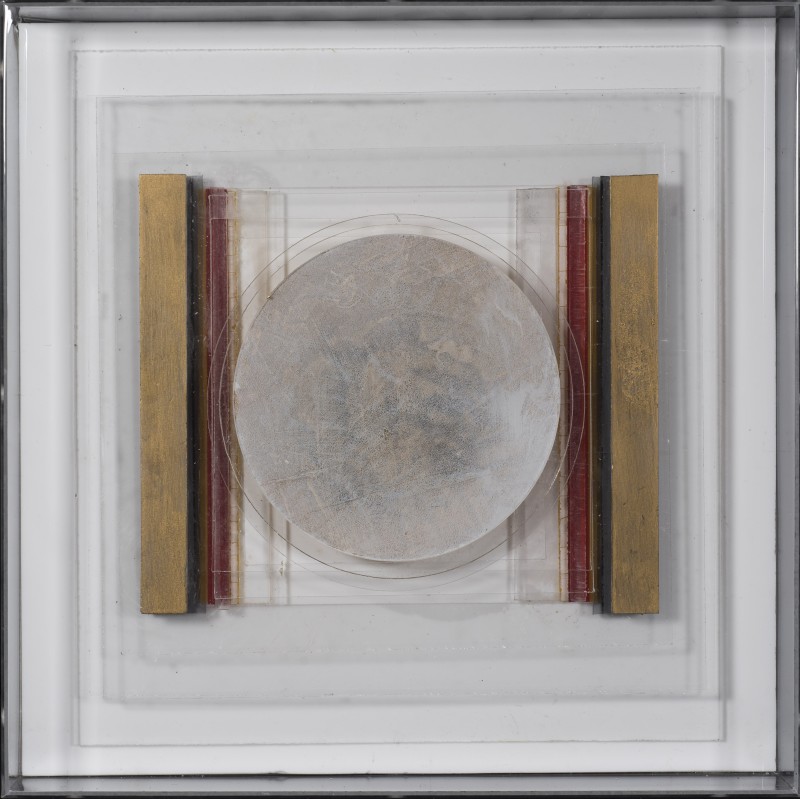 Paul FeilerSquare Relief LVIII, 2012Gold leaf, gouache and perspex on perspex30 x 30 cmSigned, dated and titled verso%3Cdiv%20class%3D%22artist%22%3E%3Cspan%20class%3D%22artist%22%3E%3Cstrong%3EPaul%20Feiler%3C/strong%3E%3C/span%3E%3C/div%3E%0D%3Cdiv%20class%3D%22title%22%3E%3Cem%3ESquare%20Relief%20LVIII%3C/em%3E%2C%202012%3C/div%3E%0D%3Cdiv%20class%3D%22signed_and_dated%22%3ESigned%2C%20dated%20and%20titled%20verso%3C/div%3E%0D%3Cdiv%20class%3D%22medium%22%3EGold%20leaf%2C%20gouache%20and%20perspex%20on%20perspex%3C/div%3E%0D%3Cdiv%20class%3D%22dimensions%22%3E30%20x%2030%20cm%3C/div%3E
Paul FeilerSquare Relief LVIII, 2012Gold leaf, gouache and perspex on perspex30 x 30 cmSigned, dated and titled verso%3Cdiv%20class%3D%22artist%22%3E%3Cspan%20class%3D%22artist%22%3E%3Cstrong%3EPaul%20Feiler%3C/strong%3E%3C/span%3E%3C/div%3E%0D%3Cdiv%20class%3D%22title%22%3E%3Cem%3ESquare%20Relief%20LVIII%3C/em%3E%2C%202012%3C/div%3E%0D%3Cdiv%20class%3D%22signed_and_dated%22%3ESigned%2C%20dated%20and%20titled%20verso%3C/div%3E%0D%3Cdiv%20class%3D%22medium%22%3EGold%20leaf%2C%20gouache%20and%20perspex%20on%20perspex%3C/div%3E%0D%3Cdiv%20class%3D%22dimensions%22%3E30%20x%2030%20cm%3C/div%3E -
 Paul FeilerSquare Relief LX, 2012Gold and silver leaf, gouache and perspex on perspex31 x 31 cmSigned, dated and titled verso%3Cdiv%20class%3D%22artist%22%3E%3Cspan%20class%3D%22artist%22%3E%3Cstrong%3EPaul%20Feiler%3C/strong%3E%3C/span%3E%3C/div%3E%0D%3Cdiv%20class%3D%22title%22%3E%3Cem%3ESquare%20Relief%20LX%3C/em%3E%2C%202012%3C/div%3E%0D%3Cdiv%20class%3D%22signed_and_dated%22%3ESigned%2C%20dated%20and%20titled%20verso%3C/div%3E%0D%3Cdiv%20class%3D%22medium%22%3EGold%20and%20silver%20leaf%2C%20gouache%20and%20perspex%20on%20perspex%20%3C/div%3E%0D%3Cdiv%20class%3D%22dimensions%22%3E31%20x%2031%20cm%3C/div%3E
Paul FeilerSquare Relief LX, 2012Gold and silver leaf, gouache and perspex on perspex31 x 31 cmSigned, dated and titled verso%3Cdiv%20class%3D%22artist%22%3E%3Cspan%20class%3D%22artist%22%3E%3Cstrong%3EPaul%20Feiler%3C/strong%3E%3C/span%3E%3C/div%3E%0D%3Cdiv%20class%3D%22title%22%3E%3Cem%3ESquare%20Relief%20LX%3C/em%3E%2C%202012%3C/div%3E%0D%3Cdiv%20class%3D%22signed_and_dated%22%3ESigned%2C%20dated%20and%20titled%20verso%3C/div%3E%0D%3Cdiv%20class%3D%22medium%22%3EGold%20and%20silver%20leaf%2C%20gouache%20and%20perspex%20on%20perspex%20%3C/div%3E%0D%3Cdiv%20class%3D%22dimensions%22%3E31%20x%2031%20cm%3C/div%3E -
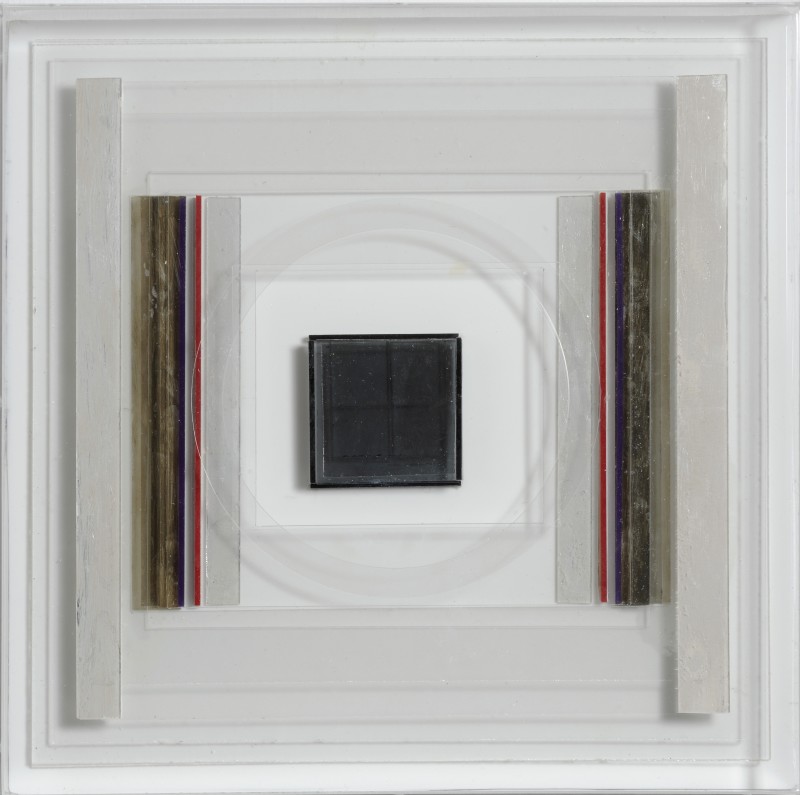 Paul FeilerSquare Relief LXIII, 2012Silver and gold leaf, gouache and perspex on perspex41 x 41 cmSigned, dated and titled verso%3Cdiv%20class%3D%22artist%22%3E%3Cspan%20class%3D%22artist%22%3E%3Cstrong%3EPaul%20Feiler%3C/strong%3E%3C/span%3E%3C/div%3E%0D%3Cdiv%20class%3D%22title%22%3E%3Cem%3ESquare%20Relief%20LXIII%3C/em%3E%2C%202012%3C/div%3E%0D%3Cdiv%20class%3D%22signed_and_dated%22%3ESigned%2C%20dated%20and%20titled%20verso%3C/div%3E%0D%3Cdiv%20class%3D%22medium%22%3ESilver%20and%20gold%20leaf%2C%20gouache%20and%20perspex%20on%20perspex%3C/div%3E%0D%3Cdiv%20class%3D%22dimensions%22%3E41%20x%2041%20cm%3C/div%3E
Paul FeilerSquare Relief LXIII, 2012Silver and gold leaf, gouache and perspex on perspex41 x 41 cmSigned, dated and titled verso%3Cdiv%20class%3D%22artist%22%3E%3Cspan%20class%3D%22artist%22%3E%3Cstrong%3EPaul%20Feiler%3C/strong%3E%3C/span%3E%3C/div%3E%0D%3Cdiv%20class%3D%22title%22%3E%3Cem%3ESquare%20Relief%20LXIII%3C/em%3E%2C%202012%3C/div%3E%0D%3Cdiv%20class%3D%22signed_and_dated%22%3ESigned%2C%20dated%20and%20titled%20verso%3C/div%3E%0D%3Cdiv%20class%3D%22medium%22%3ESilver%20and%20gold%20leaf%2C%20gouache%20and%20perspex%20on%20perspex%3C/div%3E%0D%3Cdiv%20class%3D%22dimensions%22%3E41%20x%2041%20cm%3C/div%3E -
 Paul FeilerSquare Relief XXXVII, 2010Silver leaf, gouache, aluminium and perspex on perspex18 x 18 cmSigned, dated and titled verso%3Cdiv%20class%3D%22artist%22%3E%3Cspan%20class%3D%22artist%22%3E%3Cstrong%3EPaul%20Feiler%3C/strong%3E%3C/span%3E%3C/div%3E%0D%3Cdiv%20class%3D%22title%22%3E%3Cem%3ESquare%20Relief%20XXXVII%3C/em%3E%2C%202010%3C/div%3E%0D%3Cdiv%20class%3D%22signed_and_dated%22%3ESigned%2C%20dated%20and%20titled%20verso%3C/div%3E%0D%3Cdiv%20class%3D%22medium%22%3ESilver%20leaf%2C%20gouache%2C%20aluminium%20and%20perspex%20on%20perspex%3C/div%3E%0D%3Cdiv%20class%3D%22dimensions%22%3E18%20x%2018%20cm%3C/div%3E
Paul FeilerSquare Relief XXXVII, 2010Silver leaf, gouache, aluminium and perspex on perspex18 x 18 cmSigned, dated and titled verso%3Cdiv%20class%3D%22artist%22%3E%3Cspan%20class%3D%22artist%22%3E%3Cstrong%3EPaul%20Feiler%3C/strong%3E%3C/span%3E%3C/div%3E%0D%3Cdiv%20class%3D%22title%22%3E%3Cem%3ESquare%20Relief%20XXXVII%3C/em%3E%2C%202010%3C/div%3E%0D%3Cdiv%20class%3D%22signed_and_dated%22%3ESigned%2C%20dated%20and%20titled%20verso%3C/div%3E%0D%3Cdiv%20class%3D%22medium%22%3ESilver%20leaf%2C%20gouache%2C%20aluminium%20and%20perspex%20on%20perspex%3C/div%3E%0D%3Cdiv%20class%3D%22dimensions%22%3E18%20x%2018%20cm%3C/div%3E -
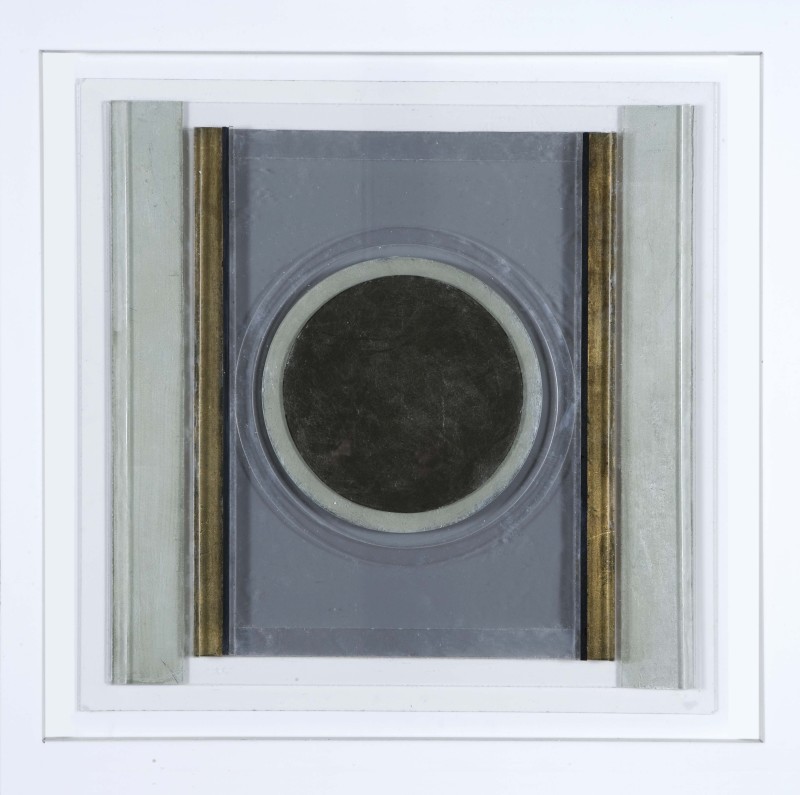 Paul FeilerSquare Relief VI, 2009Emulsion, silver and gold leaf, stainless steel and perspex on perspex61 x 61 cmSigned, dated and titled verso%3Cdiv%20class%3D%22artist%22%3E%3Cspan%20class%3D%22artist%22%3E%3Cstrong%3EPaul%20Feiler%3C/strong%3E%3C/span%3E%3C/div%3E%0D%3Cdiv%20class%3D%22title%22%3E%3Cem%3ESquare%20Relief%20VI%3C/em%3E%2C%202009%3C/div%3E%0D%3Cdiv%20class%3D%22signed_and_dated%22%3ESigned%2C%20dated%20and%20titled%20verso%3C/div%3E%0D%3Cdiv%20class%3D%22medium%22%3EEmulsion%2C%20silver%20and%20gold%20leaf%2C%20stainless%20steel%20and%20perspex%20on%20perspex%3C/div%3E%0D%3Cdiv%20class%3D%22dimensions%22%3E61%20x%2061%20cm%3C/div%3E
Paul FeilerSquare Relief VI, 2009Emulsion, silver and gold leaf, stainless steel and perspex on perspex61 x 61 cmSigned, dated and titled verso%3Cdiv%20class%3D%22artist%22%3E%3Cspan%20class%3D%22artist%22%3E%3Cstrong%3EPaul%20Feiler%3C/strong%3E%3C/span%3E%3C/div%3E%0D%3Cdiv%20class%3D%22title%22%3E%3Cem%3ESquare%20Relief%20VI%3C/em%3E%2C%202009%3C/div%3E%0D%3Cdiv%20class%3D%22signed_and_dated%22%3ESigned%2C%20dated%20and%20titled%20verso%3C/div%3E%0D%3Cdiv%20class%3D%22medium%22%3EEmulsion%2C%20silver%20and%20gold%20leaf%2C%20stainless%20steel%20and%20perspex%20on%20perspex%3C/div%3E%0D%3Cdiv%20class%3D%22dimensions%22%3E61%20x%2061%20cm%3C/div%3E -
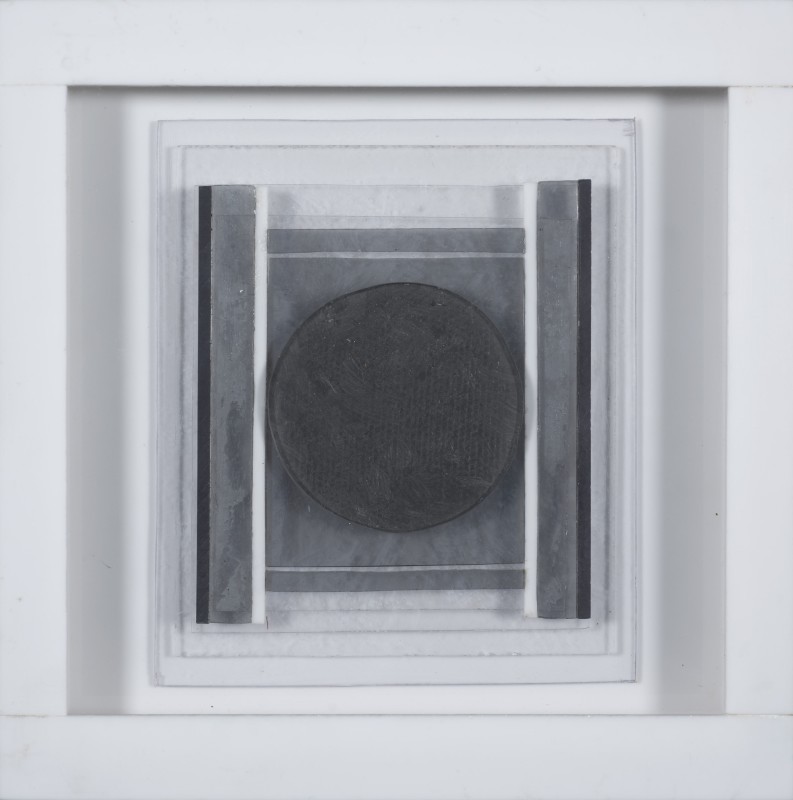 Paul FeilerSquare Relief XI, 2009Silver leaf, emulsion and perspex on perspex18 x 18 cmSigned, dated and titled verso%3Cdiv%20class%3D%22artist%22%3E%3Cspan%20class%3D%22artist%22%3E%3Cstrong%3EPaul%20Feiler%3C/strong%3E%3C/span%3E%3C/div%3E%0D%3Cdiv%20class%3D%22title%22%3E%3Cem%3ESquare%20Relief%20XI%3C/em%3E%2C%202009%3C/div%3E%0D%3Cdiv%20class%3D%22signed_and_dated%22%3ESigned%2C%20dated%20and%20titled%20verso%3C/div%3E%0D%3Cdiv%20class%3D%22medium%22%3ESilver%20leaf%2C%20emulsion%20and%20perspex%20on%20perspex%3C/div%3E%0D%3Cdiv%20class%3D%22dimensions%22%3E18%20x%2018%20cm%3C/div%3E
Paul FeilerSquare Relief XI, 2009Silver leaf, emulsion and perspex on perspex18 x 18 cmSigned, dated and titled verso%3Cdiv%20class%3D%22artist%22%3E%3Cspan%20class%3D%22artist%22%3E%3Cstrong%3EPaul%20Feiler%3C/strong%3E%3C/span%3E%3C/div%3E%0D%3Cdiv%20class%3D%22title%22%3E%3Cem%3ESquare%20Relief%20XI%3C/em%3E%2C%202009%3C/div%3E%0D%3Cdiv%20class%3D%22signed_and_dated%22%3ESigned%2C%20dated%20and%20titled%20verso%3C/div%3E%0D%3Cdiv%20class%3D%22medium%22%3ESilver%20leaf%2C%20emulsion%20and%20perspex%20on%20perspex%3C/div%3E%0D%3Cdiv%20class%3D%22dimensions%22%3E18%20x%2018%20cm%3C/div%3E -
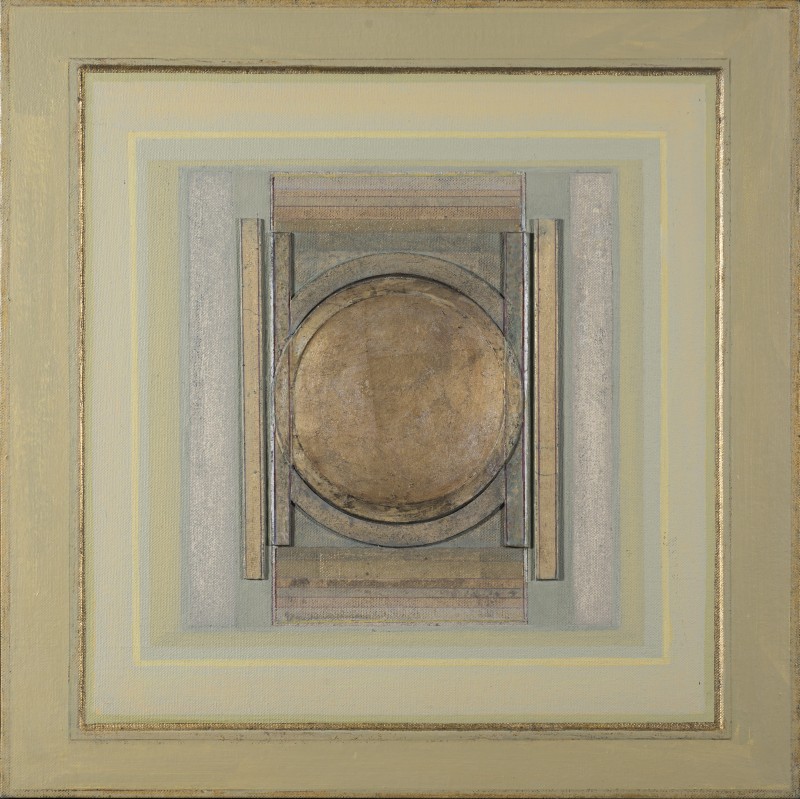 Paul FeilerZenicon XXVII, 2007Oil, gold and silver leaf and gessoed board on canvas laid on wood46 x 46 cmSigned, dated and titled verso%3Cdiv%20class%3D%22artist%22%3E%3Cspan%20class%3D%22artist%22%3E%3Cstrong%3EPaul%20Feiler%3C/strong%3E%3C/span%3E%3C/div%3E%0D%3Cdiv%20class%3D%22title%22%3E%3Cem%3EZenicon%20XXVII%3C/em%3E%2C%202007%3C/div%3E%0D%3Cdiv%20class%3D%22signed_and_dated%22%3ESigned%2C%20dated%20and%20titled%20verso%3C/div%3E%0D%3Cdiv%20class%3D%22medium%22%3EOil%2C%20gold%20and%20silver%20leaf%20and%20gessoed%20board%20on%20canvas%20laid%20on%20wood%3C/div%3E%0D%3Cdiv%20class%3D%22dimensions%22%3E46%20x%2046%20cm%3C/div%3E
Paul FeilerZenicon XXVII, 2007Oil, gold and silver leaf and gessoed board on canvas laid on wood46 x 46 cmSigned, dated and titled verso%3Cdiv%20class%3D%22artist%22%3E%3Cspan%20class%3D%22artist%22%3E%3Cstrong%3EPaul%20Feiler%3C/strong%3E%3C/span%3E%3C/div%3E%0D%3Cdiv%20class%3D%22title%22%3E%3Cem%3EZenicon%20XXVII%3C/em%3E%2C%202007%3C/div%3E%0D%3Cdiv%20class%3D%22signed_and_dated%22%3ESigned%2C%20dated%20and%20titled%20verso%3C/div%3E%0D%3Cdiv%20class%3D%22medium%22%3EOil%2C%20gold%20and%20silver%20leaf%20and%20gessoed%20board%20on%20canvas%20laid%20on%20wood%3C/div%3E%0D%3Cdiv%20class%3D%22dimensions%22%3E46%20x%2046%20cm%3C/div%3E -
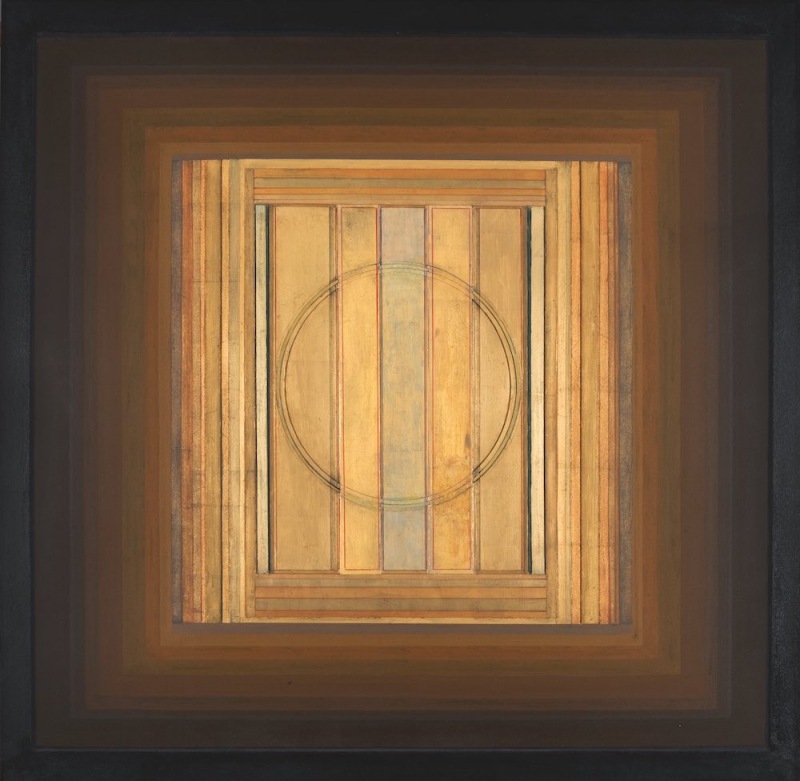 Paul FeilerZenicon XXVIII, 2007Oil, silver leaf, gold leaf and gessoed board on canvas laid on wood142.2 x 142.2cm%3Cdiv%20class%3D%22artist%22%3E%3Cspan%20class%3D%22artist%22%3E%3Cstrong%3EPaul%20Feiler%3C/strong%3E%3C/span%3E%3C/div%3E%0D%3Cdiv%20class%3D%22title%22%3E%3Cem%3EZenicon%20XXVIII%3C/em%3E%2C%202007%3C/div%3E%0D%3Cdiv%20class%3D%22medium%22%3EOil%2C%20silver%20leaf%2C%20gold%20leaf%20and%20gessoed%20board%20on%20canvas%20laid%20on%20wood%3C/div%3E%0D%3Cdiv%20class%3D%22dimensions%22%3E142.2%20x%20142.2cm%3C/div%3E
Paul FeilerZenicon XXVIII, 2007Oil, silver leaf, gold leaf and gessoed board on canvas laid on wood142.2 x 142.2cm%3Cdiv%20class%3D%22artist%22%3E%3Cspan%20class%3D%22artist%22%3E%3Cstrong%3EPaul%20Feiler%3C/strong%3E%3C/span%3E%3C/div%3E%0D%3Cdiv%20class%3D%22title%22%3E%3Cem%3EZenicon%20XXVIII%3C/em%3E%2C%202007%3C/div%3E%0D%3Cdiv%20class%3D%22medium%22%3EOil%2C%20silver%20leaf%2C%20gold%20leaf%20and%20gessoed%20board%20on%20canvas%20laid%20on%20wood%3C/div%3E%0D%3Cdiv%20class%3D%22dimensions%22%3E142.2%20x%20142.2cm%3C/div%3E -
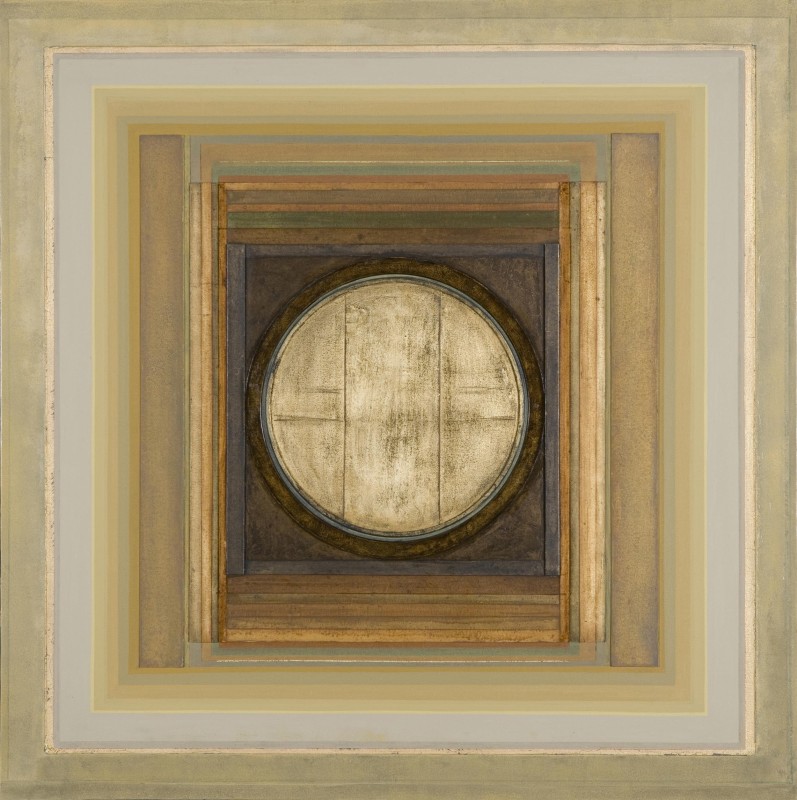 Paul FeilerZenicon IX, 2006Oil, gold leaf and gessoed board on canvas laid on wood102 x 102 cmSigned, dated and titled verso%3Cdiv%20class%3D%22artist%22%3E%3Cspan%20class%3D%22artist%22%3E%3Cstrong%3EPaul%20Feiler%3C/strong%3E%3C/span%3E%3C/div%3E%0D%3Cdiv%20class%3D%22title%22%3E%3Cem%3EZenicon%20IX%3C/em%3E%2C%202006%3C/div%3E%0D%3Cdiv%20class%3D%22signed_and_dated%22%3ESigned%2C%20dated%20and%20titled%20verso%3C/div%3E%0D%3Cdiv%20class%3D%22medium%22%3EOil%2C%20gold%20leaf%20and%20gessoed%20board%20on%20canvas%20laid%20on%20wood%3C/div%3E%0D%3Cdiv%20class%3D%22dimensions%22%3E102%20x%20102%20cm%3C/div%3E
Paul FeilerZenicon IX, 2006Oil, gold leaf and gessoed board on canvas laid on wood102 x 102 cmSigned, dated and titled verso%3Cdiv%20class%3D%22artist%22%3E%3Cspan%20class%3D%22artist%22%3E%3Cstrong%3EPaul%20Feiler%3C/strong%3E%3C/span%3E%3C/div%3E%0D%3Cdiv%20class%3D%22title%22%3E%3Cem%3EZenicon%20IX%3C/em%3E%2C%202006%3C/div%3E%0D%3Cdiv%20class%3D%22signed_and_dated%22%3ESigned%2C%20dated%20and%20titled%20verso%3C/div%3E%0D%3Cdiv%20class%3D%22medium%22%3EOil%2C%20gold%20leaf%20and%20gessoed%20board%20on%20canvas%20laid%20on%20wood%3C/div%3E%0D%3Cdiv%20class%3D%22dimensions%22%3E102%20x%20102%20cm%3C/div%3E -
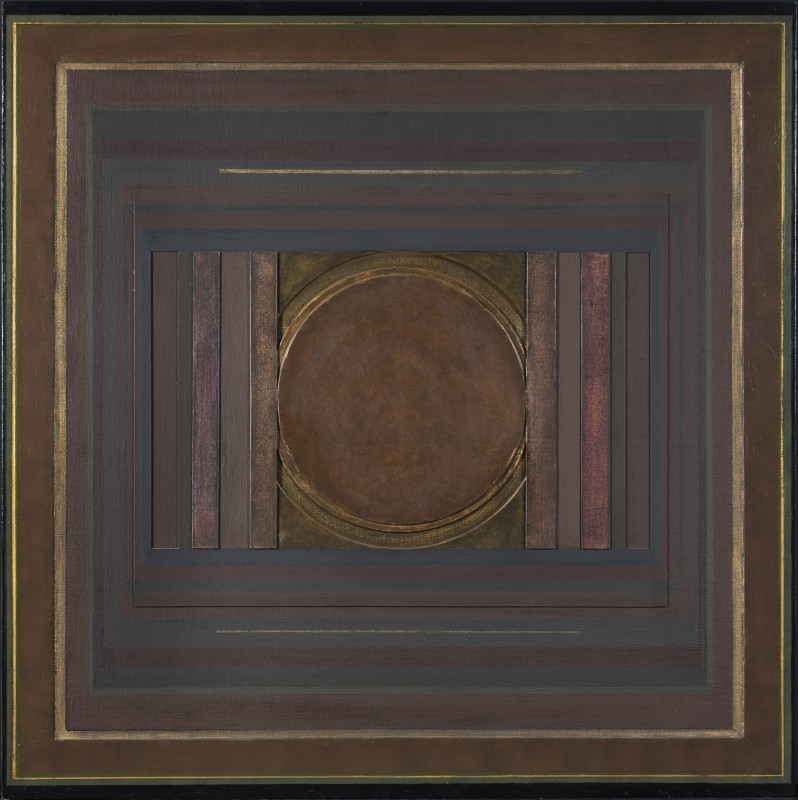 Paul FeilerJanicon C, 2005Oil, gold and silver leaf and gessoed board on canvas laid on wood102 x 102 cmSigned, dated and titled verso%3Cdiv%20class%3D%22artist%22%3E%3Cspan%20class%3D%22artist%22%3E%3Cstrong%3EPaul%20Feiler%3C/strong%3E%3C/span%3E%3C/div%3E%0D%3Cdiv%20class%3D%22title%22%3E%3Cem%3EJanicon%20C%3C/em%3E%2C%202005%3C/div%3E%0D%3Cdiv%20class%3D%22signed_and_dated%22%3ESigned%2C%20dated%20and%20titled%20verso%3C/div%3E%0D%3Cdiv%20class%3D%22medium%22%3EOil%2C%20gold%20and%20silver%20leaf%20and%20gessoed%20board%20on%20canvas%20laid%20on%20wood%3C/div%3E%0D%3Cdiv%20class%3D%22dimensions%22%3E102%20x%20102%20cm%3C/div%3E
Paul FeilerJanicon C, 2005Oil, gold and silver leaf and gessoed board on canvas laid on wood102 x 102 cmSigned, dated and titled verso%3Cdiv%20class%3D%22artist%22%3E%3Cspan%20class%3D%22artist%22%3E%3Cstrong%3EPaul%20Feiler%3C/strong%3E%3C/span%3E%3C/div%3E%0D%3Cdiv%20class%3D%22title%22%3E%3Cem%3EJanicon%20C%3C/em%3E%2C%202005%3C/div%3E%0D%3Cdiv%20class%3D%22signed_and_dated%22%3ESigned%2C%20dated%20and%20titled%20verso%3C/div%3E%0D%3Cdiv%20class%3D%22medium%22%3EOil%2C%20gold%20and%20silver%20leaf%20and%20gessoed%20board%20on%20canvas%20laid%20on%20wood%3C/div%3E%0D%3Cdiv%20class%3D%22dimensions%22%3E102%20x%20102%20cm%3C/div%3E -
 Paul FeilerJanicon XCVII, 2005Oil, silver and gold leaf, gessoed board on canvas laid on wood102 x 102 cmSigned, dated and titled verso%3Cdiv%20class%3D%22artist%22%3E%3Cspan%20class%3D%22artist%22%3E%3Cstrong%3EPaul%20Feiler%3C/strong%3E%3C/span%3E%3C/div%3E%0D%3Cdiv%20class%3D%22title%22%3E%3Cem%3EJanicon%20XCVII%3C/em%3E%2C%202005%3C/div%3E%0D%3Cdiv%20class%3D%22signed_and_dated%22%3ESigned%2C%20dated%20and%20titled%20verso%3C/div%3E%0D%3Cdiv%20class%3D%22medium%22%3EOil%2C%20silver%20and%20gold%20leaf%2C%20gessoed%20board%20on%20canvas%20laid%20on%20wood%3C/div%3E%0D%3Cdiv%20class%3D%22dimensions%22%3E102%20x%20102%20cm%3C/div%3E
Paul FeilerJanicon XCVII, 2005Oil, silver and gold leaf, gessoed board on canvas laid on wood102 x 102 cmSigned, dated and titled verso%3Cdiv%20class%3D%22artist%22%3E%3Cspan%20class%3D%22artist%22%3E%3Cstrong%3EPaul%20Feiler%3C/strong%3E%3C/span%3E%3C/div%3E%0D%3Cdiv%20class%3D%22title%22%3E%3Cem%3EJanicon%20XCVII%3C/em%3E%2C%202005%3C/div%3E%0D%3Cdiv%20class%3D%22signed_and_dated%22%3ESigned%2C%20dated%20and%20titled%20verso%3C/div%3E%0D%3Cdiv%20class%3D%22medium%22%3EOil%2C%20silver%20and%20gold%20leaf%2C%20gessoed%20board%20on%20canvas%20laid%20on%20wood%3C/div%3E%0D%3Cdiv%20class%3D%22dimensions%22%3E102%20x%20102%20cm%3C/div%3E -
 Paul FeilerJanicon LIX, 2002Oil, gold and silver leaf, and gessoed board on canvas laid on wood142 x 142 cmSigned, dated and titled verso%3Cdiv%20class%3D%22artist%22%3E%3Cspan%20class%3D%22artist%22%3E%3Cstrong%3EPaul%20Feiler%3C/strong%3E%3C/span%3E%3C/div%3E%0D%3Cdiv%20class%3D%22title%22%3E%3Cem%3EJanicon%20LIX%3C/em%3E%2C%202002%3C/div%3E%0D%3Cdiv%20class%3D%22signed_and_dated%22%3ESigned%2C%20dated%20and%20titled%20verso%3C/div%3E%0D%3Cdiv%20class%3D%22medium%22%3EOil%2C%20gold%20and%20silver%20leaf%2C%20and%20gessoed%20board%20on%20canvas%20laid%20on%20wood%3C/div%3E%0D%3Cdiv%20class%3D%22dimensions%22%3E142%20x%20142%20cm%3C/div%3E
Paul FeilerJanicon LIX, 2002Oil, gold and silver leaf, and gessoed board on canvas laid on wood142 x 142 cmSigned, dated and titled verso%3Cdiv%20class%3D%22artist%22%3E%3Cspan%20class%3D%22artist%22%3E%3Cstrong%3EPaul%20Feiler%3C/strong%3E%3C/span%3E%3C/div%3E%0D%3Cdiv%20class%3D%22title%22%3E%3Cem%3EJanicon%20LIX%3C/em%3E%2C%202002%3C/div%3E%0D%3Cdiv%20class%3D%22signed_and_dated%22%3ESigned%2C%20dated%20and%20titled%20verso%3C/div%3E%0D%3Cdiv%20class%3D%22medium%22%3EOil%2C%20gold%20and%20silver%20leaf%2C%20and%20gessoed%20board%20on%20canvas%20laid%20on%20wood%3C/div%3E%0D%3Cdiv%20class%3D%22dimensions%22%3E142%20x%20142%20cm%3C/div%3E -
 Paul FeilerJanicon XLII, 2001Oil, silver and gold leaf on canvas laid on wood92 x 92 cmSigned, dated and titled verso%3Cdiv%20class%3D%22artist%22%3E%3Cspan%20class%3D%22artist%22%3E%3Cstrong%3EPaul%20Feiler%3C/strong%3E%3C/span%3E%3C/div%3E%0D%3Cdiv%20class%3D%22title%22%3E%3Cem%3EJanicon%20XLII%3C/em%3E%2C%202001%3C/div%3E%0D%3Cdiv%20class%3D%22signed_and_dated%22%3ESigned%2C%20dated%20and%20titled%20verso%3C/div%3E%0D%3Cdiv%20class%3D%22medium%22%3EOil%2C%20silver%20and%20gold%20leaf%20on%20canvas%20laid%20on%20wood%3C/div%3E%0D%3Cdiv%20class%3D%22dimensions%22%3E92%20x%2092%20cm%3C/div%3E
Paul FeilerJanicon XLII, 2001Oil, silver and gold leaf on canvas laid on wood92 x 92 cmSigned, dated and titled verso%3Cdiv%20class%3D%22artist%22%3E%3Cspan%20class%3D%22artist%22%3E%3Cstrong%3EPaul%20Feiler%3C/strong%3E%3C/span%3E%3C/div%3E%0D%3Cdiv%20class%3D%22title%22%3E%3Cem%3EJanicon%20XLII%3C/em%3E%2C%202001%3C/div%3E%0D%3Cdiv%20class%3D%22signed_and_dated%22%3ESigned%2C%20dated%20and%20titled%20verso%3C/div%3E%0D%3Cdiv%20class%3D%22medium%22%3EOil%2C%20silver%20and%20gold%20leaf%20on%20canvas%20laid%20on%20wood%3C/div%3E%0D%3Cdiv%20class%3D%22dimensions%22%3E92%20x%2092%20cm%3C/div%3E -
 Paul FeilerJanus G XII, 1998Gouache on paper7 x 7 cm (image)Signed, dated and titled below image%3Cdiv%20class%3D%22artist%22%3E%3Cspan%20class%3D%22artist%22%3E%3Cstrong%3EPaul%20Feiler%3C/strong%3E%3C/span%3E%3C/div%3E%0D%3Cdiv%20class%3D%22title%22%3E%3Cem%3EJanus%20G%20XII%3C/em%3E%2C%201998%3C/div%3E%0D%3Cdiv%20class%3D%22signed_and_dated%22%3ESigned%2C%20dated%20and%20titled%20below%20image%3C/div%3E%0D%3Cdiv%20class%3D%22medium%22%3EGouache%20on%20paper%3C/div%3E%0D%3Cdiv%20class%3D%22dimensions%22%3E7%20x%207%20cm%20%28image%29%3C/div%3E
Paul FeilerJanus G XII, 1998Gouache on paper7 x 7 cm (image)Signed, dated and titled below image%3Cdiv%20class%3D%22artist%22%3E%3Cspan%20class%3D%22artist%22%3E%3Cstrong%3EPaul%20Feiler%3C/strong%3E%3C/span%3E%3C/div%3E%0D%3Cdiv%20class%3D%22title%22%3E%3Cem%3EJanus%20G%20XII%3C/em%3E%2C%201998%3C/div%3E%0D%3Cdiv%20class%3D%22signed_and_dated%22%3ESigned%2C%20dated%20and%20titled%20below%20image%3C/div%3E%0D%3Cdiv%20class%3D%22medium%22%3EGouache%20on%20paper%3C/div%3E%0D%3Cdiv%20class%3D%22dimensions%22%3E7%20x%207%20cm%20%28image%29%3C/div%3E -
 Paul FeilerSekos G LXXXVIII, 1992Gouache on paper28 x 28 cm (image)Signed, dated and titled below image%3Cdiv%20class%3D%22artist%22%3E%3Cspan%20class%3D%22artist%22%3E%3Cstrong%3EPaul%20Feiler%3C/strong%3E%3C/span%3E%3C/div%3E%0D%3Cdiv%20class%3D%22title%22%3E%3Cem%3ESekos%20G%20LXXXVIII%3C/em%3E%2C%201992%3C/div%3E%0D%3Cdiv%20class%3D%22signed_and_dated%22%3ESigned%2C%20dated%20and%20titled%20below%20image%3C/div%3E%0D%3Cdiv%20class%3D%22medium%22%3EGouache%20on%20paper%3C/div%3E%0D%3Cdiv%20class%3D%22dimensions%22%3E28%20x%2028%20cm%20%28image%29%3C/div%3E
Paul FeilerSekos G LXXXVIII, 1992Gouache on paper28 x 28 cm (image)Signed, dated and titled below image%3Cdiv%20class%3D%22artist%22%3E%3Cspan%20class%3D%22artist%22%3E%3Cstrong%3EPaul%20Feiler%3C/strong%3E%3C/span%3E%3C/div%3E%0D%3Cdiv%20class%3D%22title%22%3E%3Cem%3ESekos%20G%20LXXXVIII%3C/em%3E%2C%201992%3C/div%3E%0D%3Cdiv%20class%3D%22signed_and_dated%22%3ESigned%2C%20dated%20and%20titled%20below%20image%3C/div%3E%0D%3Cdiv%20class%3D%22medium%22%3EGouache%20on%20paper%3C/div%3E%0D%3Cdiv%20class%3D%22dimensions%22%3E28%20x%2028%20cm%20%28image%29%3C/div%3E -
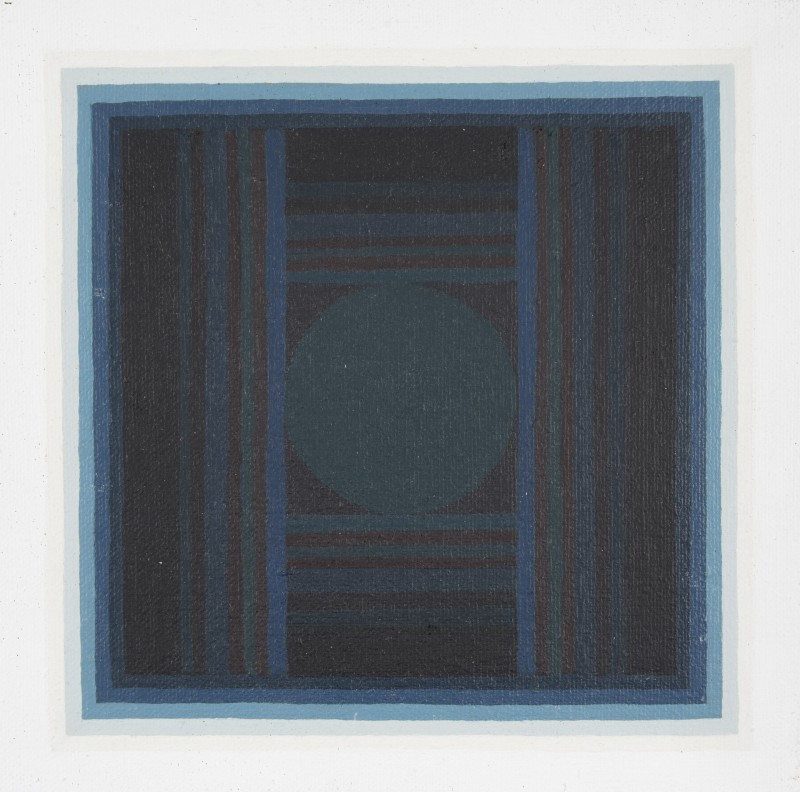 Paul FeilerAduton LVIII, 1991Oil on canvas laid on wood20 x 20 cmSigned, dated and titled verso%3Cdiv%20class%3D%22artist%22%3E%3Cspan%20class%3D%22artist%22%3E%3Cstrong%3EPaul%20Feiler%3C/strong%3E%3C/span%3E%3C/div%3E%0D%3Cdiv%20class%3D%22title%22%3E%3Cem%3EAduton%20LVIII%3C/em%3E%2C%201991%3C/div%3E%0D%3Cdiv%20class%3D%22signed_and_dated%22%3ESigned%2C%20dated%20and%20titled%20verso%3C/div%3E%0D%3Cdiv%20class%3D%22medium%22%3EOil%20on%20canvas%20laid%20on%20wood%3C/div%3E%0D%3Cdiv%20class%3D%22dimensions%22%3E20%20x%2020%20cm%3C/div%3E
Paul FeilerAduton LVIII, 1991Oil on canvas laid on wood20 x 20 cmSigned, dated and titled verso%3Cdiv%20class%3D%22artist%22%3E%3Cspan%20class%3D%22artist%22%3E%3Cstrong%3EPaul%20Feiler%3C/strong%3E%3C/span%3E%3C/div%3E%0D%3Cdiv%20class%3D%22title%22%3E%3Cem%3EAduton%20LVIII%3C/em%3E%2C%201991%3C/div%3E%0D%3Cdiv%20class%3D%22signed_and_dated%22%3ESigned%2C%20dated%20and%20titled%20verso%3C/div%3E%0D%3Cdiv%20class%3D%22medium%22%3EOil%20on%20canvas%20laid%20on%20wood%3C/div%3E%0D%3Cdiv%20class%3D%22dimensions%22%3E20%20x%2020%20cm%3C/div%3E -
 Paul FeilerAduton XXVI, 1989Oil on canvas laid on wood152 x 152 cmSigned, dated and titled verso%3Cdiv%20class%3D%22artist%22%3E%3Cspan%20class%3D%22artist%22%3E%3Cstrong%3EPaul%20Feiler%3C/strong%3E%3C/span%3E%3C/div%3E%0D%3Cdiv%20class%3D%22title%22%3E%3Cem%3EAduton%20XXVI%3C/em%3E%2C%201989%3C/div%3E%0D%3Cdiv%20class%3D%22signed_and_dated%22%3ESigned%2C%20dated%20and%20titled%20verso%3C/div%3E%0D%3Cdiv%20class%3D%22medium%22%3EOil%20on%20canvas%20laid%20on%20wood%3C/div%3E%0D%3Cdiv%20class%3D%22dimensions%22%3E152%20x%20152%20cm%3C/div%3E
Paul FeilerAduton XXVI, 1989Oil on canvas laid on wood152 x 152 cmSigned, dated and titled verso%3Cdiv%20class%3D%22artist%22%3E%3Cspan%20class%3D%22artist%22%3E%3Cstrong%3EPaul%20Feiler%3C/strong%3E%3C/span%3E%3C/div%3E%0D%3Cdiv%20class%3D%22title%22%3E%3Cem%3EAduton%20XXVI%3C/em%3E%2C%201989%3C/div%3E%0D%3Cdiv%20class%3D%22signed_and_dated%22%3ESigned%2C%20dated%20and%20titled%20verso%3C/div%3E%0D%3Cdiv%20class%3D%22medium%22%3EOil%20on%20canvas%20laid%20on%20wood%3C/div%3E%0D%3Cdiv%20class%3D%22dimensions%22%3E152%20x%20152%20cm%3C/div%3E -
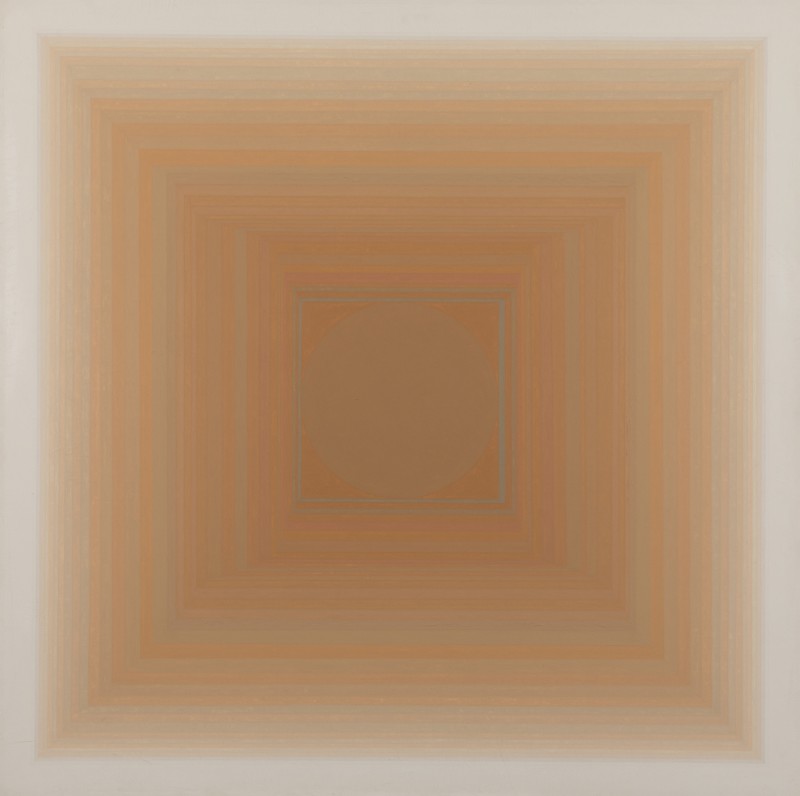 Paul FeilerAduton XXXII, 1980Oil on canvas laid on wood122 x 122 cmSigned, dated and titled verso%3Cdiv%20class%3D%22artist%22%3E%3Cspan%20class%3D%22artist%22%3E%3Cstrong%3EPaul%20Feiler%3C/strong%3E%3C/span%3E%3C/div%3E%0D%3Cdiv%20class%3D%22title%22%3E%3Cem%3EAduton%20XXXII%3C/em%3E%2C%201980%3C/div%3E%0D%3Cdiv%20class%3D%22signed_and_dated%22%3ESigned%2C%20dated%20and%20titled%20verso%3C/div%3E%0D%3Cdiv%20class%3D%22medium%22%3EOil%20on%20canvas%20laid%20on%20wood%3C/div%3E%0D%3Cdiv%20class%3D%22dimensions%22%3E122%20x%20122%20cm%3C/div%3E
Paul FeilerAduton XXXII, 1980Oil on canvas laid on wood122 x 122 cmSigned, dated and titled verso%3Cdiv%20class%3D%22artist%22%3E%3Cspan%20class%3D%22artist%22%3E%3Cstrong%3EPaul%20Feiler%3C/strong%3E%3C/span%3E%3C/div%3E%0D%3Cdiv%20class%3D%22title%22%3E%3Cem%3EAduton%20XXXII%3C/em%3E%2C%201980%3C/div%3E%0D%3Cdiv%20class%3D%22signed_and_dated%22%3ESigned%2C%20dated%20and%20titled%20verso%3C/div%3E%0D%3Cdiv%20class%3D%22medium%22%3EOil%20on%20canvas%20laid%20on%20wood%3C/div%3E%0D%3Cdiv%20class%3D%22dimensions%22%3E122%20x%20122%20cm%3C/div%3E -
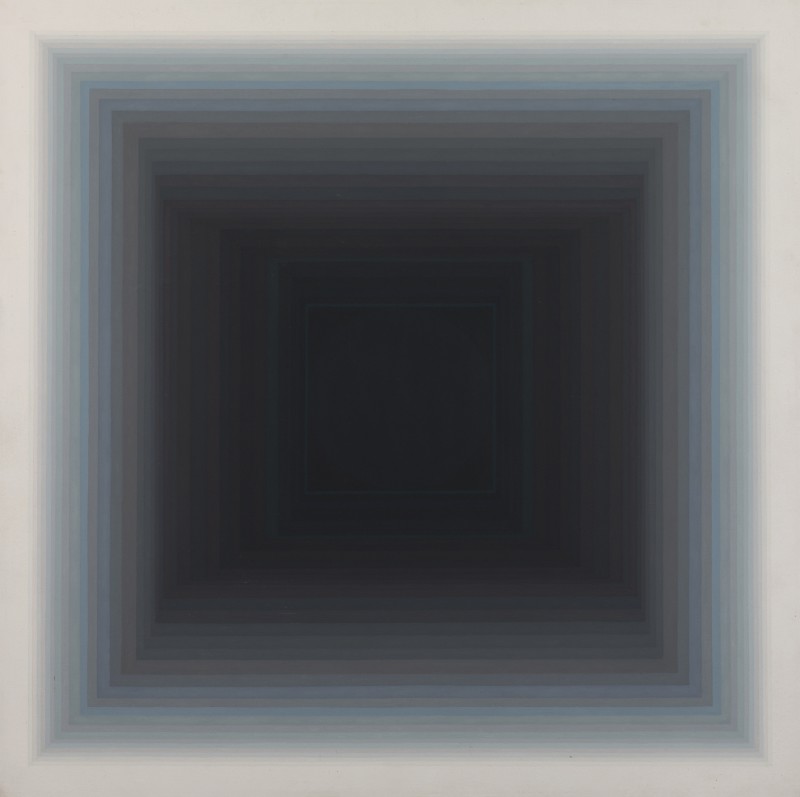 Paul FeilerAmbit XXXIII, 1980Oil on canvas laid on wood122 x 122 cmSigned, dated and titled verso%3Cdiv%20class%3D%22artist%22%3E%3Cspan%20class%3D%22artist%22%3E%3Cstrong%3EPaul%20Feiler%3C/strong%3E%3C/span%3E%3C/div%3E%0D%3Cdiv%20class%3D%22title%22%3E%3Cem%3EAmbit%20XXXIII%3C/em%3E%2C%201980%3C/div%3E%0D%3Cdiv%20class%3D%22signed_and_dated%22%3ESigned%2C%20dated%20and%20titled%20verso%3C/div%3E%0D%3Cdiv%20class%3D%22medium%22%3EOil%20on%20canvas%20laid%20on%20wood%3C/div%3E%0D%3Cdiv%20class%3D%22dimensions%22%3E122%20x%20122%20cm%3C/div%3E
Paul FeilerAmbit XXXIII, 1980Oil on canvas laid on wood122 x 122 cmSigned, dated and titled verso%3Cdiv%20class%3D%22artist%22%3E%3Cspan%20class%3D%22artist%22%3E%3Cstrong%3EPaul%20Feiler%3C/strong%3E%3C/span%3E%3C/div%3E%0D%3Cdiv%20class%3D%22title%22%3E%3Cem%3EAmbit%20XXXIII%3C/em%3E%2C%201980%3C/div%3E%0D%3Cdiv%20class%3D%22signed_and_dated%22%3ESigned%2C%20dated%20and%20titled%20verso%3C/div%3E%0D%3Cdiv%20class%3D%22medium%22%3EOil%20on%20canvas%20laid%20on%20wood%3C/div%3E%0D%3Cdiv%20class%3D%22dimensions%22%3E122%20x%20122%20cm%3C/div%3E -
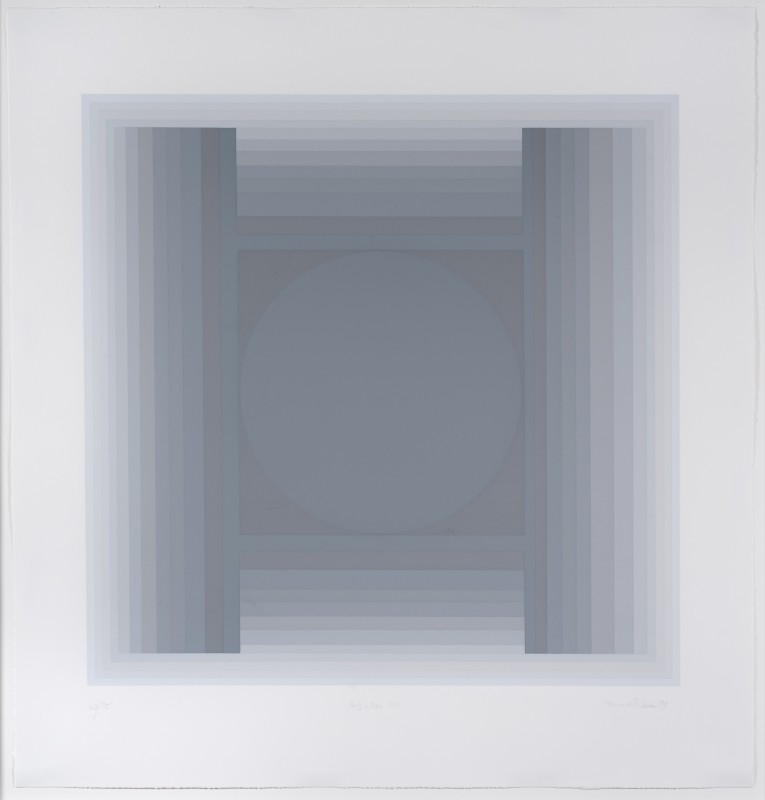 Paul FeilerAduton SIII, 1979Screenprint46 x 46 cm (image)From the edition of 75 impressionsSigned, dated, titled and numbered%3Cdiv%20class%3D%22artist%22%3E%3Cspan%20class%3D%22artist%22%3E%3Cstrong%3EPaul%20Feiler%3C/strong%3E%3C/span%3E%3C/div%3E%0D%3Cdiv%20class%3D%22title%22%3E%3Cem%3EAduton%20SIII%3C/em%3E%2C%201979%3C/div%3E%0D%3Cdiv%20class%3D%22signed_and_dated%22%3ESigned%2C%20dated%2C%20titled%20and%20numbered%3C/div%3E%0D%3Cdiv%20class%3D%22medium%22%3EScreenprint%3C/div%3E%0D%3Cdiv%20class%3D%22dimensions%22%3E46%20x%2046%20cm%20%28image%29%3C/div%3E%0D%3Cdiv%20class%3D%22edition_details%22%3EFrom%20the%20edition%20of%2075%20impressions%3C/div%3E
Paul FeilerAduton SIII, 1979Screenprint46 x 46 cm (image)From the edition of 75 impressionsSigned, dated, titled and numbered%3Cdiv%20class%3D%22artist%22%3E%3Cspan%20class%3D%22artist%22%3E%3Cstrong%3EPaul%20Feiler%3C/strong%3E%3C/span%3E%3C/div%3E%0D%3Cdiv%20class%3D%22title%22%3E%3Cem%3EAduton%20SIII%3C/em%3E%2C%201979%3C/div%3E%0D%3Cdiv%20class%3D%22signed_and_dated%22%3ESigned%2C%20dated%2C%20titled%20and%20numbered%3C/div%3E%0D%3Cdiv%20class%3D%22medium%22%3EScreenprint%3C/div%3E%0D%3Cdiv%20class%3D%22dimensions%22%3E46%20x%2046%20cm%20%28image%29%3C/div%3E%0D%3Cdiv%20class%3D%22edition_details%22%3EFrom%20the%20edition%20of%2075%20impressions%3C/div%3E -
 Paul FeilerAduton SIV, 1979Screenprint46 x 46 cm (image)From the edition of 75 impressionsSigned, dated, titled and numbered%3Cdiv%20class%3D%22artist%22%3E%3Cspan%20class%3D%22artist%22%3E%3Cstrong%3EPaul%20Feiler%3C/strong%3E%3C/span%3E%3C/div%3E%0D%3Cdiv%20class%3D%22title%22%3E%3Cem%3EAduton%20SIV%3C/em%3E%2C%201979%3C/div%3E%0D%3Cdiv%20class%3D%22signed_and_dated%22%3ESigned%2C%20dated%2C%20titled%20and%20numbered%3C/div%3E%0D%3Cdiv%20class%3D%22medium%22%3EScreenprint%3C/div%3E%0D%3Cdiv%20class%3D%22dimensions%22%3E46%20x%2046%20cm%20%28image%29%3C/div%3E%0D%3Cdiv%20class%3D%22edition_details%22%3EFrom%20the%20edition%20of%2075%20impressions%3C/div%3E
Paul FeilerAduton SIV, 1979Screenprint46 x 46 cm (image)From the edition of 75 impressionsSigned, dated, titled and numbered%3Cdiv%20class%3D%22artist%22%3E%3Cspan%20class%3D%22artist%22%3E%3Cstrong%3EPaul%20Feiler%3C/strong%3E%3C/span%3E%3C/div%3E%0D%3Cdiv%20class%3D%22title%22%3E%3Cem%3EAduton%20SIV%3C/em%3E%2C%201979%3C/div%3E%0D%3Cdiv%20class%3D%22signed_and_dated%22%3ESigned%2C%20dated%2C%20titled%20and%20numbered%3C/div%3E%0D%3Cdiv%20class%3D%22medium%22%3EScreenprint%3C/div%3E%0D%3Cdiv%20class%3D%22dimensions%22%3E46%20x%2046%20cm%20%28image%29%3C/div%3E%0D%3Cdiv%20class%3D%22edition_details%22%3EFrom%20the%20edition%20of%2075%20impressions%3C/div%3E -
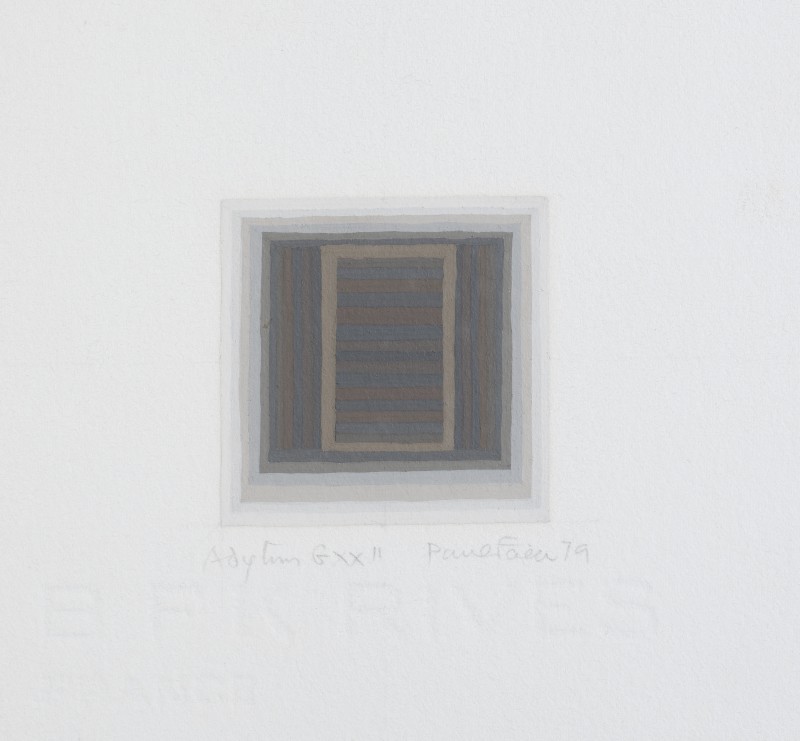 Paul FeilerAdytum G XXII, 1979Gouache on paper5 x 5 cm (image)signed, dated and titled below image%3Cdiv%20class%3D%22artist%22%3E%3Cspan%20class%3D%22artist%22%3E%3Cstrong%3EPaul%20Feiler%3C/strong%3E%3C/span%3E%3C/div%3E%0D%3Cdiv%20class%3D%22title%22%3E%3Cem%3EAdytum%20G%20XXII%3C/em%3E%2C%201979%3C/div%3E%0D%3Cdiv%20class%3D%22signed_and_dated%22%3Esigned%2C%20dated%20and%20titled%20below%20image%3C/div%3E%0D%3Cdiv%20class%3D%22medium%22%3EGouache%20on%20paper%3C/div%3E%0D%3Cdiv%20class%3D%22dimensions%22%3E5%20x%205%20cm%20%28image%29%3C/div%3E
Paul FeilerAdytum G XXII, 1979Gouache on paper5 x 5 cm (image)signed, dated and titled below image%3Cdiv%20class%3D%22artist%22%3E%3Cspan%20class%3D%22artist%22%3E%3Cstrong%3EPaul%20Feiler%3C/strong%3E%3C/span%3E%3C/div%3E%0D%3Cdiv%20class%3D%22title%22%3E%3Cem%3EAdytum%20G%20XXII%3C/em%3E%2C%201979%3C/div%3E%0D%3Cdiv%20class%3D%22signed_and_dated%22%3Esigned%2C%20dated%20and%20titled%20below%20image%3C/div%3E%0D%3Cdiv%20class%3D%22medium%22%3EGouache%20on%20paper%3C/div%3E%0D%3Cdiv%20class%3D%22dimensions%22%3E5%20x%205%20cm%20%28image%29%3C/div%3E -
 Paul FeilerSekos G XIX, 1979Gouache on paper6 x 6 cm (image)Signed, dated and titled below image%3Cdiv%20class%3D%22artist%22%3E%3Cspan%20class%3D%22artist%22%3E%3Cstrong%3EPaul%20Feiler%3C/strong%3E%3C/span%3E%3C/div%3E%0D%3Cdiv%20class%3D%22title%22%3E%3Cem%3ESekos%20G%20XIX%3C/em%3E%2C%201979%3C/div%3E%0D%3Cdiv%20class%3D%22signed_and_dated%22%3ESigned%2C%20dated%20and%20titled%20below%20image%3C/div%3E%0D%3Cdiv%20class%3D%22medium%22%3EGouache%20on%20paper%3C/div%3E%0D%3Cdiv%20class%3D%22dimensions%22%3E6%20x%206%20cm%20%28image%29%3C/div%3E
Paul FeilerSekos G XIX, 1979Gouache on paper6 x 6 cm (image)Signed, dated and titled below image%3Cdiv%20class%3D%22artist%22%3E%3Cspan%20class%3D%22artist%22%3E%3Cstrong%3EPaul%20Feiler%3C/strong%3E%3C/span%3E%3C/div%3E%0D%3Cdiv%20class%3D%22title%22%3E%3Cem%3ESekos%20G%20XIX%3C/em%3E%2C%201979%3C/div%3E%0D%3Cdiv%20class%3D%22signed_and_dated%22%3ESigned%2C%20dated%20and%20titled%20below%20image%3C/div%3E%0D%3Cdiv%20class%3D%22medium%22%3EGouache%20on%20paper%3C/div%3E%0D%3Cdiv%20class%3D%22dimensions%22%3E6%20x%206%20cm%20%28image%29%3C/div%3E -
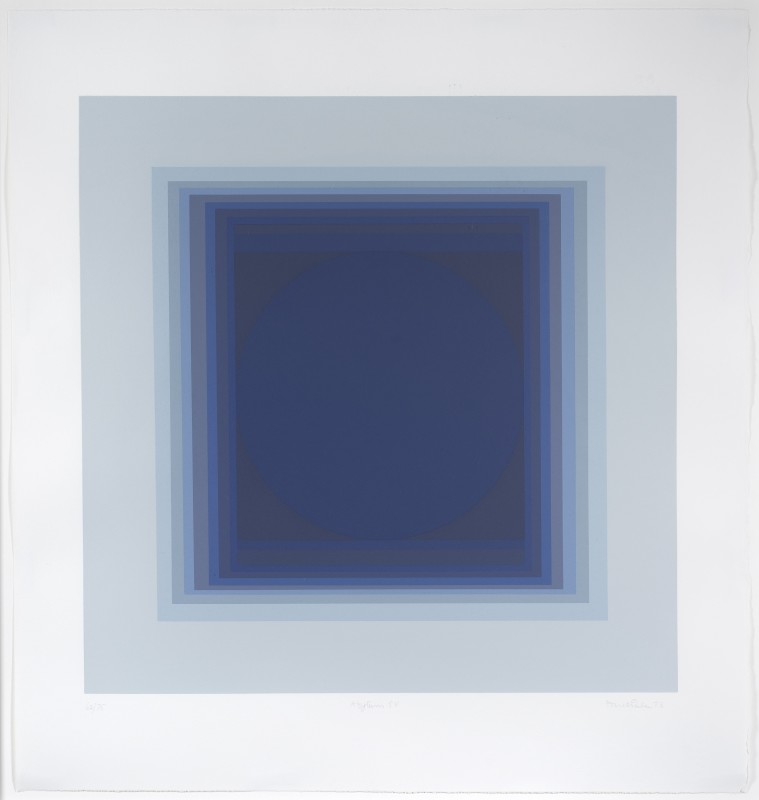 Paul FeilerAdytum SV, 1978Screenprint46 x 46 cm (image)From the edition of 75 impressionsSigned, dated, titled and numbered%3Cdiv%20class%3D%22artist%22%3E%3Cspan%20class%3D%22artist%22%3E%3Cstrong%3EPaul%20Feiler%3C/strong%3E%3C/span%3E%3C/div%3E%0D%3Cdiv%20class%3D%22title%22%3E%3Cem%3EAdytum%20SV%3C/em%3E%2C%201978%3C/div%3E%0D%3Cdiv%20class%3D%22signed_and_dated%22%3ESigned%2C%20dated%2C%20titled%20and%20numbered%3C/div%3E%0D%3Cdiv%20class%3D%22medium%22%3EScreenprint%3C/div%3E%0D%3Cdiv%20class%3D%22dimensions%22%3E46%20x%2046%20cm%20%28image%29%3C/div%3E%0D%3Cdiv%20class%3D%22edition_details%22%3EFrom%20the%20edition%20of%2075%20impressions%3C/div%3E
Paul FeilerAdytum SV, 1978Screenprint46 x 46 cm (image)From the edition of 75 impressionsSigned, dated, titled and numbered%3Cdiv%20class%3D%22artist%22%3E%3Cspan%20class%3D%22artist%22%3E%3Cstrong%3EPaul%20Feiler%3C/strong%3E%3C/span%3E%3C/div%3E%0D%3Cdiv%20class%3D%22title%22%3E%3Cem%3EAdytum%20SV%3C/em%3E%2C%201978%3C/div%3E%0D%3Cdiv%20class%3D%22signed_and_dated%22%3ESigned%2C%20dated%2C%20titled%20and%20numbered%3C/div%3E%0D%3Cdiv%20class%3D%22medium%22%3EScreenprint%3C/div%3E%0D%3Cdiv%20class%3D%22dimensions%22%3E46%20x%2046%20cm%20%28image%29%3C/div%3E%0D%3Cdiv%20class%3D%22edition_details%22%3EFrom%20the%20edition%20of%2075%20impressions%3C/div%3E -
 Paul FeilerAdytum SVI, 1978Screenprint46 x 46 cm (image)From the edition of 75 impressionsSigned, dated, titled and numbered%3Cdiv%20class%3D%22artist%22%3E%3Cspan%20class%3D%22artist%22%3E%3Cstrong%3EPaul%20Feiler%3C/strong%3E%3C/span%3E%3C/div%3E%0D%3Cdiv%20class%3D%22title%22%3E%3Cem%3EAdytum%20SVI%3C/em%3E%2C%201978%3C/div%3E%0D%3Cdiv%20class%3D%22signed_and_dated%22%3ESigned%2C%20dated%2C%20titled%20and%20numbered%3C/div%3E%0D%3Cdiv%20class%3D%22medium%22%3EScreenprint%3C/div%3E%0D%3Cdiv%20class%3D%22dimensions%22%3E46%20x%2046%20cm%20%28image%29%3C/div%3E%0D%3Cdiv%20class%3D%22edition_details%22%3EFrom%20the%20edition%20of%2075%20impressions%3C/div%3E
Paul FeilerAdytum SVI, 1978Screenprint46 x 46 cm (image)From the edition of 75 impressionsSigned, dated, titled and numbered%3Cdiv%20class%3D%22artist%22%3E%3Cspan%20class%3D%22artist%22%3E%3Cstrong%3EPaul%20Feiler%3C/strong%3E%3C/span%3E%3C/div%3E%0D%3Cdiv%20class%3D%22title%22%3E%3Cem%3EAdytum%20SVI%3C/em%3E%2C%201978%3C/div%3E%0D%3Cdiv%20class%3D%22signed_and_dated%22%3ESigned%2C%20dated%2C%20titled%20and%20numbered%3C/div%3E%0D%3Cdiv%20class%3D%22medium%22%3EScreenprint%3C/div%3E%0D%3Cdiv%20class%3D%22dimensions%22%3E46%20x%2046%20cm%20%28image%29%3C/div%3E%0D%3Cdiv%20class%3D%22edition_details%22%3EFrom%20the%20edition%20of%2075%20impressions%3C/div%3E -
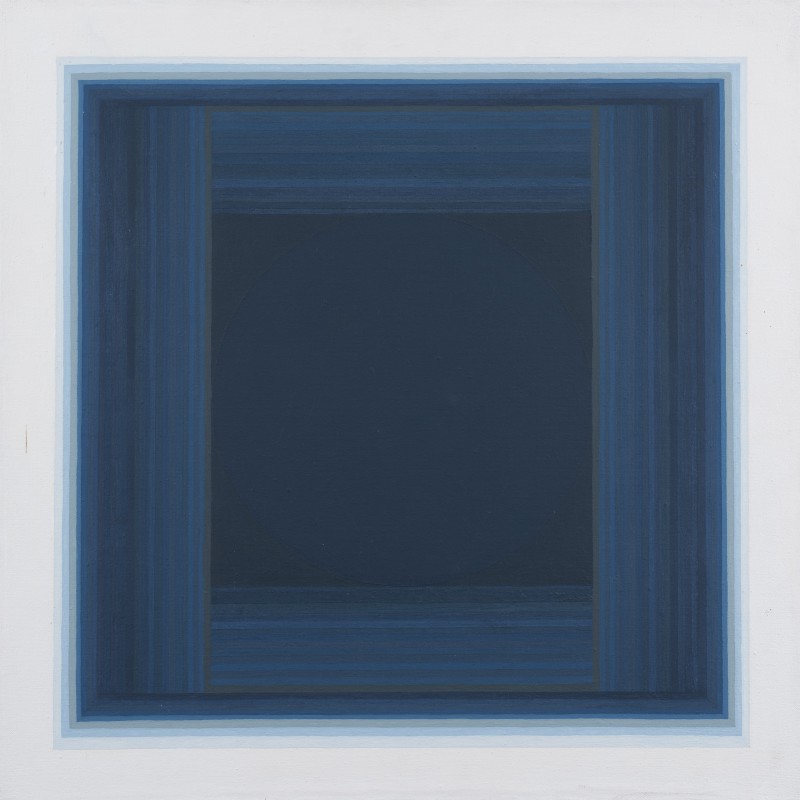 Paul FeilerAduton XXIV, 1977Oil on canvas laid on wood51 x 51 cmSigned, dated and titled verso%3Cdiv%20class%3D%22artist%22%3E%3Cspan%20class%3D%22artist%22%3E%3Cstrong%3EPaul%20Feiler%3C/strong%3E%3C/span%3E%3C/div%3E%0D%3Cdiv%20class%3D%22title%22%3E%3Cem%3EAduton%20XXIV%3C/em%3E%2C%201977%3C/div%3E%0D%3Cdiv%20class%3D%22signed_and_dated%22%3ESigned%2C%20dated%20and%20titled%20verso%3C/div%3E%0D%3Cdiv%20class%3D%22medium%22%3EOil%20on%20canvas%20laid%20on%20wood%3C/div%3E%0D%3Cdiv%20class%3D%22dimensions%22%3E51%20x%2051%20cm%3C/div%3E
Paul FeilerAduton XXIV, 1977Oil on canvas laid on wood51 x 51 cmSigned, dated and titled verso%3Cdiv%20class%3D%22artist%22%3E%3Cspan%20class%3D%22artist%22%3E%3Cstrong%3EPaul%20Feiler%3C/strong%3E%3C/span%3E%3C/div%3E%0D%3Cdiv%20class%3D%22title%22%3E%3Cem%3EAduton%20XXIV%3C/em%3E%2C%201977%3C/div%3E%0D%3Cdiv%20class%3D%22signed_and_dated%22%3ESigned%2C%20dated%20and%20titled%20verso%3C/div%3E%0D%3Cdiv%20class%3D%22medium%22%3EOil%20on%20canvas%20laid%20on%20wood%3C/div%3E%0D%3Cdiv%20class%3D%22dimensions%22%3E51%20x%2051%20cm%3C/div%3E -
 Paul FeilerAmbit G VIII, 1976Gouache on card28 x 28 cm (image)Signed, dated and titled below image%3Cdiv%20class%3D%22artist%22%3E%3Cspan%20class%3D%22artist%22%3E%3Cstrong%3EPaul%20Feiler%3C/strong%3E%3C/span%3E%3C/div%3E%0D%3Cdiv%20class%3D%22title%22%3E%3Cem%3EAmbit%20G%20VIII%3C/em%3E%2C%201976%3C/div%3E%0D%3Cdiv%20class%3D%22signed_and_dated%22%3ESigned%2C%20dated%20and%20titled%20below%20image%3C/div%3E%0D%3Cdiv%20class%3D%22medium%22%3EGouache%20on%20card%3C/div%3E%0D%3Cdiv%20class%3D%22dimensions%22%3E28%20x%2028%20cm%20%28image%29%3C/div%3E
Paul FeilerAmbit G VIII, 1976Gouache on card28 x 28 cm (image)Signed, dated and titled below image%3Cdiv%20class%3D%22artist%22%3E%3Cspan%20class%3D%22artist%22%3E%3Cstrong%3EPaul%20Feiler%3C/strong%3E%3C/span%3E%3C/div%3E%0D%3Cdiv%20class%3D%22title%22%3E%3Cem%3EAmbit%20G%20VIII%3C/em%3E%2C%201976%3C/div%3E%0D%3Cdiv%20class%3D%22signed_and_dated%22%3ESigned%2C%20dated%20and%20titled%20below%20image%3C/div%3E%0D%3Cdiv%20class%3D%22medium%22%3EGouache%20on%20card%3C/div%3E%0D%3Cdiv%20class%3D%22dimensions%22%3E28%20x%2028%20cm%20%28image%29%3C/div%3E -
 Paul FeilerAdytum SIII, 1974Screenprint46 x 46 cm (image)From the edition of 75 impressionsSigned, dated, titled and numbered%3Cdiv%20class%3D%22artist%22%3E%3Cspan%20class%3D%22artist%22%3E%3Cstrong%3EPaul%20Feiler%3C/strong%3E%3C/span%3E%3C/div%3E%0D%3Cdiv%20class%3D%22title%22%3E%3Cem%3EAdytum%20SIII%3C/em%3E%2C%201974%3C/div%3E%0D%3Cdiv%20class%3D%22signed_and_dated%22%3ESigned%2C%20dated%2C%20titled%20and%20numbered%3C/div%3E%0D%3Cdiv%20class%3D%22medium%22%3EScreenprint%3C/div%3E%0D%3Cdiv%20class%3D%22dimensions%22%3E46%20x%2046%20cm%20%28image%29%3C/div%3E%0D%3Cdiv%20class%3D%22edition_details%22%3EFrom%20the%20edition%20of%2075%20impressions%3C/div%3E
Paul FeilerAdytum SIII, 1974Screenprint46 x 46 cm (image)From the edition of 75 impressionsSigned, dated, titled and numbered%3Cdiv%20class%3D%22artist%22%3E%3Cspan%20class%3D%22artist%22%3E%3Cstrong%3EPaul%20Feiler%3C/strong%3E%3C/span%3E%3C/div%3E%0D%3Cdiv%20class%3D%22title%22%3E%3Cem%3EAdytum%20SIII%3C/em%3E%2C%201974%3C/div%3E%0D%3Cdiv%20class%3D%22signed_and_dated%22%3ESigned%2C%20dated%2C%20titled%20and%20numbered%3C/div%3E%0D%3Cdiv%20class%3D%22medium%22%3EScreenprint%3C/div%3E%0D%3Cdiv%20class%3D%22dimensions%22%3E46%20x%2046%20cm%20%28image%29%3C/div%3E%0D%3Cdiv%20class%3D%22edition_details%22%3EFrom%20the%20edition%20of%2075%20impressions%3C/div%3E -
 Paul FeilerAduton SII, 1973Screenprint46 x 46 cm (image)From the edition of 75 impressionsSigned, dated, titled and numbered%3Cdiv%20class%3D%22artist%22%3E%3Cspan%20class%3D%22artist%22%3E%3Cstrong%3EPaul%20Feiler%3C/strong%3E%3C/span%3E%3C/div%3E%0D%3Cdiv%20class%3D%22title%22%3E%3Cem%3EAduton%20SII%3C/em%3E%2C%201973%3C/div%3E%0D%3Cdiv%20class%3D%22signed_and_dated%22%3ESigned%2C%20dated%2C%20titled%20and%20numbered%3C/div%3E%0D%3Cdiv%20class%3D%22medium%22%3EScreenprint%3C/div%3E%0D%3Cdiv%20class%3D%22dimensions%22%3E46%20x%2046%20cm%20%28image%29%3C/div%3E%0D%3Cdiv%20class%3D%22edition_details%22%3EFrom%20the%20edition%20of%2075%20impressions%3C/div%3E
Paul FeilerAduton SII, 1973Screenprint46 x 46 cm (image)From the edition of 75 impressionsSigned, dated, titled and numbered%3Cdiv%20class%3D%22artist%22%3E%3Cspan%20class%3D%22artist%22%3E%3Cstrong%3EPaul%20Feiler%3C/strong%3E%3C/span%3E%3C/div%3E%0D%3Cdiv%20class%3D%22title%22%3E%3Cem%3EAduton%20SII%3C/em%3E%2C%201973%3C/div%3E%0D%3Cdiv%20class%3D%22signed_and_dated%22%3ESigned%2C%20dated%2C%20titled%20and%20numbered%3C/div%3E%0D%3Cdiv%20class%3D%22medium%22%3EScreenprint%3C/div%3E%0D%3Cdiv%20class%3D%22dimensions%22%3E46%20x%2046%20cm%20%28image%29%3C/div%3E%0D%3Cdiv%20class%3D%22edition_details%22%3EFrom%20the%20edition%20of%2075%20impressions%3C/div%3E -
 Paul FeilerAdytum SII, 1973Screenprint46 x 46 (image)From the edition of 75 impressionsSigned, dated, titled and numbered%3Cdiv%20class%3D%22artist%22%3E%3Cspan%20class%3D%22artist%22%3E%3Cstrong%3EPaul%20Feiler%3C/strong%3E%3C/span%3E%3C/div%3E%0D%3Cdiv%20class%3D%22title%22%3E%3Cem%3EAdytum%20SII%3C/em%3E%2C%201973%3C/div%3E%0D%3Cdiv%20class%3D%22signed_and_dated%22%3ESigned%2C%20dated%2C%20titled%20and%20numbered%3C/div%3E%0D%3Cdiv%20class%3D%22medium%22%3EScreenprint%3C/div%3E%0D%3Cdiv%20class%3D%22dimensions%22%3E46%20x%2046%20%28image%29%3C/div%3E%0D%3Cdiv%20class%3D%22edition_details%22%3EFrom%20the%20edition%20of%2075%20impressions%3C/div%3E
Paul FeilerAdytum SII, 1973Screenprint46 x 46 (image)From the edition of 75 impressionsSigned, dated, titled and numbered%3Cdiv%20class%3D%22artist%22%3E%3Cspan%20class%3D%22artist%22%3E%3Cstrong%3EPaul%20Feiler%3C/strong%3E%3C/span%3E%3C/div%3E%0D%3Cdiv%20class%3D%22title%22%3E%3Cem%3EAdytum%20SII%3C/em%3E%2C%201973%3C/div%3E%0D%3Cdiv%20class%3D%22signed_and_dated%22%3ESigned%2C%20dated%2C%20titled%20and%20numbered%3C/div%3E%0D%3Cdiv%20class%3D%22medium%22%3EScreenprint%3C/div%3E%0D%3Cdiv%20class%3D%22dimensions%22%3E46%20x%2046%20%28image%29%3C/div%3E%0D%3Cdiv%20class%3D%22edition_details%22%3EFrom%20the%20edition%20of%2075%20impressions%3C/div%3E -
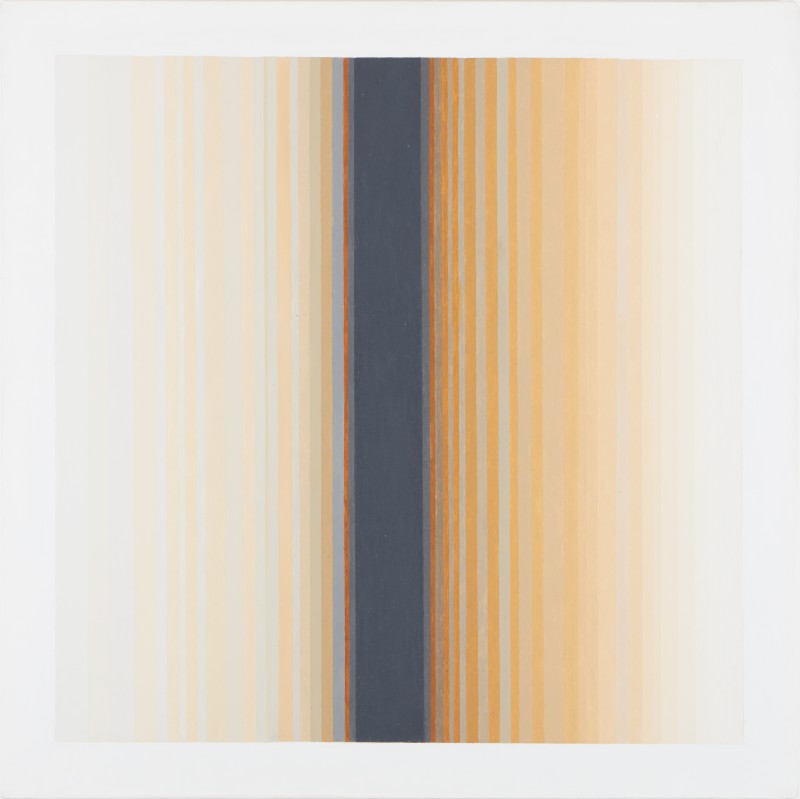 Paul FeilerAdytum II, 1970Oil on canvas laid on wood92 x 92 cmSigned, dated and titled verso%3Cdiv%20class%3D%22artist%22%3E%3Cspan%20class%3D%22artist%22%3E%3Cstrong%3EPaul%20Feiler%3C/strong%3E%3C/span%3E%3C/div%3E%0D%3Cdiv%20class%3D%22title%22%3E%3Cem%3EAdytum%20II%3C/em%3E%2C%201970%3C/div%3E%0D%3Cdiv%20class%3D%22signed_and_dated%22%3ESigned%2C%20dated%20and%20titled%20verso%3C/div%3E%0D%3Cdiv%20class%3D%22medium%22%3EOil%20on%20canvas%20laid%20on%20wood%3C/div%3E%0D%3Cdiv%20class%3D%22dimensions%22%3E92%20x%2092%20cm%3C/div%3E
Paul FeilerAdytum II, 1970Oil on canvas laid on wood92 x 92 cmSigned, dated and titled verso%3Cdiv%20class%3D%22artist%22%3E%3Cspan%20class%3D%22artist%22%3E%3Cstrong%3EPaul%20Feiler%3C/strong%3E%3C/span%3E%3C/div%3E%0D%3Cdiv%20class%3D%22title%22%3E%3Cem%3EAdytum%20II%3C/em%3E%2C%201970%3C/div%3E%0D%3Cdiv%20class%3D%22signed_and_dated%22%3ESigned%2C%20dated%20and%20titled%20verso%3C/div%3E%0D%3Cdiv%20class%3D%22medium%22%3EOil%20on%20canvas%20laid%20on%20wood%3C/div%3E%0D%3Cdiv%20class%3D%22dimensions%22%3E92%20x%2092%20cm%3C/div%3E -
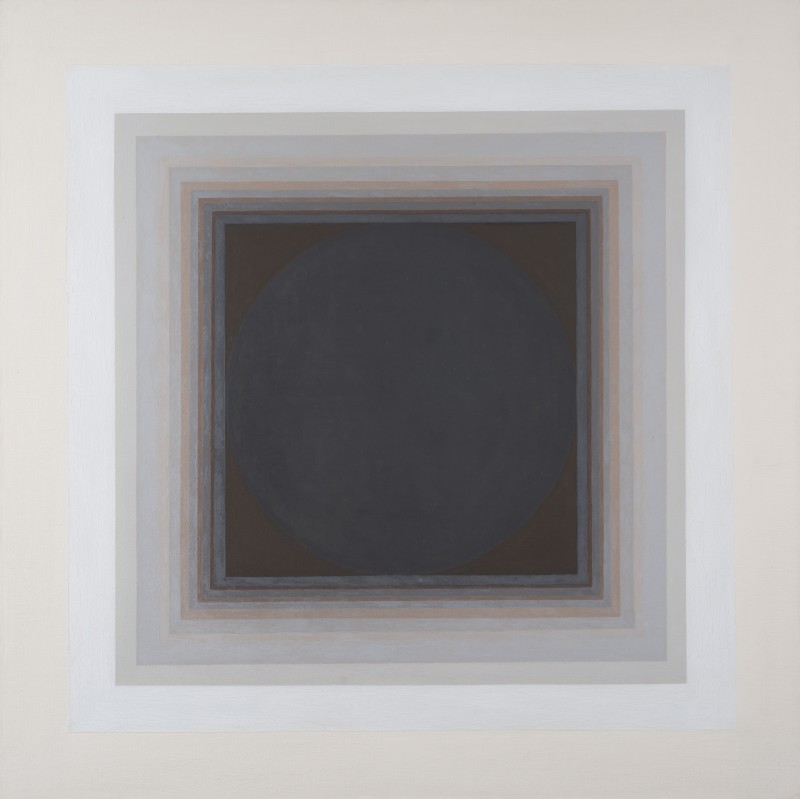 Paul FeilerAmbit X, 1970Oil on canvas laid on wood91 x 91 cmSigned, dated and titled verso%3Cdiv%20class%3D%22artist%22%3E%3Cspan%20class%3D%22artist%22%3E%3Cstrong%3EPaul%20Feiler%3C/strong%3E%3C/span%3E%3C/div%3E%0D%3Cdiv%20class%3D%22title%22%3E%3Cem%3EAmbit%20X%3C/em%3E%2C%201970%3C/div%3E%0D%3Cdiv%20class%3D%22signed_and_dated%22%3ESigned%2C%20dated%20and%20titled%20verso%3C/div%3E%0D%3Cdiv%20class%3D%22medium%22%3EOil%20on%20canvas%20laid%20on%20wood%3C/div%3E%0D%3Cdiv%20class%3D%22dimensions%22%3E91%20x%2091%20cm%3C/div%3E
Paul FeilerAmbit X, 1970Oil on canvas laid on wood91 x 91 cmSigned, dated and titled verso%3Cdiv%20class%3D%22artist%22%3E%3Cspan%20class%3D%22artist%22%3E%3Cstrong%3EPaul%20Feiler%3C/strong%3E%3C/span%3E%3C/div%3E%0D%3Cdiv%20class%3D%22title%22%3E%3Cem%3EAmbit%20X%3C/em%3E%2C%201970%3C/div%3E%0D%3Cdiv%20class%3D%22signed_and_dated%22%3ESigned%2C%20dated%20and%20titled%20verso%3C/div%3E%0D%3Cdiv%20class%3D%22medium%22%3EOil%20on%20canvas%20laid%20on%20wood%3C/div%3E%0D%3Cdiv%20class%3D%22dimensions%22%3E91%20x%2091%20cm%3C/div%3E -
 Paul FeilerOrbis LI, 1970Oil on canvas25 x 25 cmSigned, dated and titled verso%3Cdiv%20class%3D%22artist%22%3E%3Cspan%20class%3D%22artist%22%3E%3Cstrong%3EPaul%20Feiler%3C/strong%3E%3C/span%3E%3C/div%3E%0D%3Cdiv%20class%3D%22title%22%3E%3Cem%3EOrbis%20LI%3C/em%3E%2C%201970%3C/div%3E%0D%3Cdiv%20class%3D%22signed_and_dated%22%3ESigned%2C%20dated%20and%20titled%20verso%3C/div%3E%0D%3Cdiv%20class%3D%22medium%22%3EOil%20on%20canvas%3C/div%3E%0D%3Cdiv%20class%3D%22dimensions%22%3E25%20x%2025%20cm%3C/div%3E
Paul FeilerOrbis LI, 1970Oil on canvas25 x 25 cmSigned, dated and titled verso%3Cdiv%20class%3D%22artist%22%3E%3Cspan%20class%3D%22artist%22%3E%3Cstrong%3EPaul%20Feiler%3C/strong%3E%3C/span%3E%3C/div%3E%0D%3Cdiv%20class%3D%22title%22%3E%3Cem%3EOrbis%20LI%3C/em%3E%2C%201970%3C/div%3E%0D%3Cdiv%20class%3D%22signed_and_dated%22%3ESigned%2C%20dated%20and%20titled%20verso%3C/div%3E%0D%3Cdiv%20class%3D%22medium%22%3EOil%20on%20canvas%3C/div%3E%0D%3Cdiv%20class%3D%22dimensions%22%3E25%20x%2025%20cm%3C/div%3E -
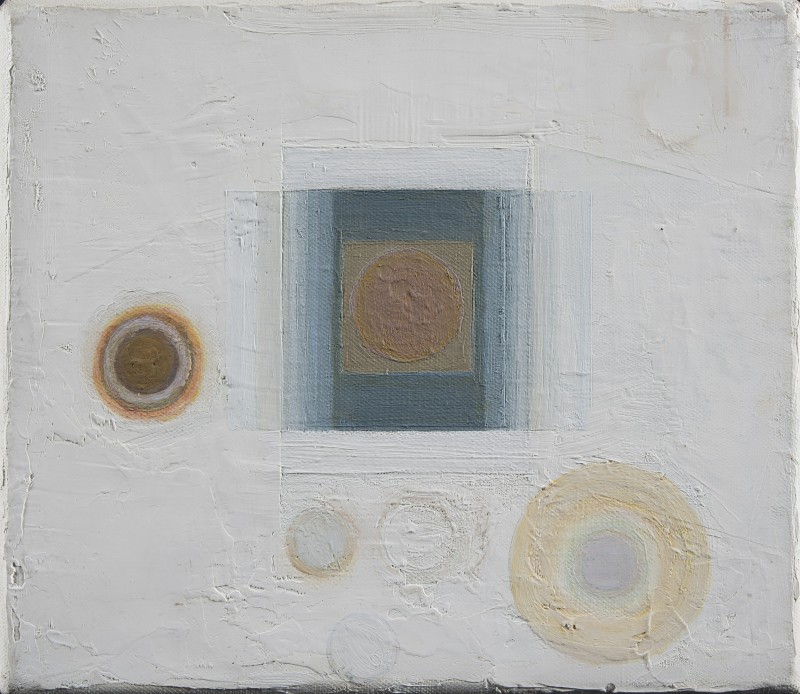 Paul FeilerOrbis LIII, 1970Oil on canvas15 x 18 cmSigned, dated and titled verso%3Cdiv%20class%3D%22artist%22%3E%3Cspan%20class%3D%22artist%22%3E%3Cstrong%3EPaul%20Feiler%3C/strong%3E%3C/span%3E%3C/div%3E%0D%3Cdiv%20class%3D%22title%22%3E%3Cem%3EOrbis%20LIII%3C/em%3E%2C%201970%3C/div%3E%0D%3Cdiv%20class%3D%22signed_and_dated%22%3ESigned%2C%20dated%20and%20titled%20verso%3C/div%3E%0D%3Cdiv%20class%3D%22medium%22%3EOil%20on%20canvas%3C/div%3E%0D%3Cdiv%20class%3D%22dimensions%22%3E15%20x%2018%20cm%3C/div%3E
Paul FeilerOrbis LIII, 1970Oil on canvas15 x 18 cmSigned, dated and titled verso%3Cdiv%20class%3D%22artist%22%3E%3Cspan%20class%3D%22artist%22%3E%3Cstrong%3EPaul%20Feiler%3C/strong%3E%3C/span%3E%3C/div%3E%0D%3Cdiv%20class%3D%22title%22%3E%3Cem%3EOrbis%20LIII%3C/em%3E%2C%201970%3C/div%3E%0D%3Cdiv%20class%3D%22signed_and_dated%22%3ESigned%2C%20dated%20and%20titled%20verso%3C/div%3E%0D%3Cdiv%20class%3D%22medium%22%3EOil%20on%20canvas%3C/div%3E%0D%3Cdiv%20class%3D%22dimensions%22%3E15%20x%2018%20cm%3C/div%3E -
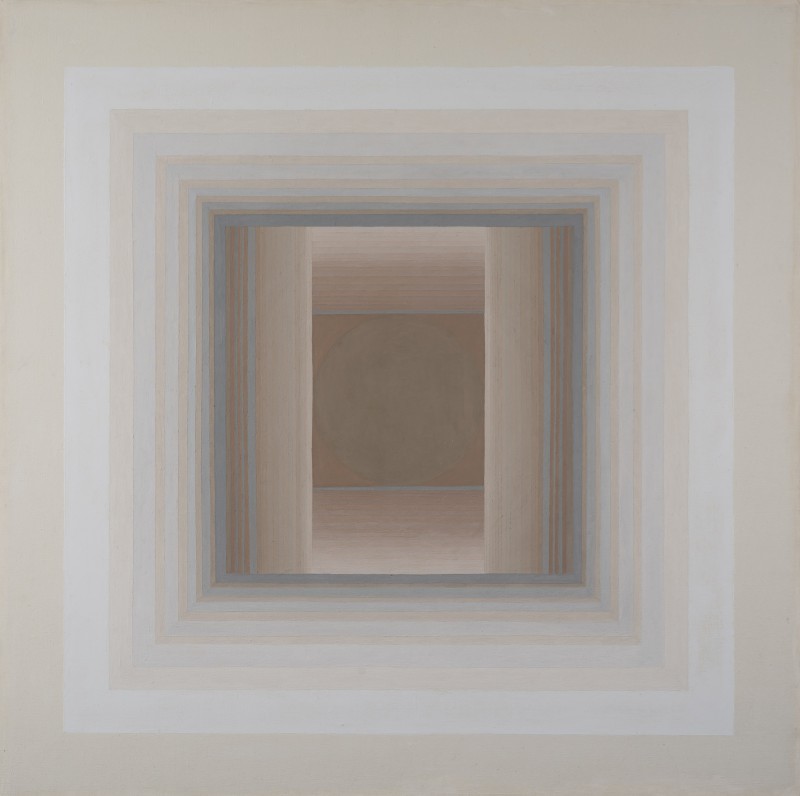 Paul FeilerAmbit VII, 1969Oil on canvas laid on wood91 x 91 cmSigned, dated and titled verso%3Cdiv%20class%3D%22artist%22%3E%3Cspan%20class%3D%22artist%22%3E%3Cstrong%3EPaul%20Feiler%3C/strong%3E%3C/span%3E%3C/div%3E%0D%3Cdiv%20class%3D%22title%22%3E%3Cem%3EAmbit%20VII%3C/em%3E%2C%201969%3C/div%3E%0D%3Cdiv%20class%3D%22signed_and_dated%22%3ESigned%2C%20dated%20and%20titled%20verso%3C/div%3E%0D%3Cdiv%20class%3D%22medium%22%3EOil%20on%20canvas%20laid%20on%20wood%3C/div%3E%0D%3Cdiv%20class%3D%22dimensions%22%3E91%20x%2091%20cm%3C/div%3E
Paul FeilerAmbit VII, 1969Oil on canvas laid on wood91 x 91 cmSigned, dated and titled verso%3Cdiv%20class%3D%22artist%22%3E%3Cspan%20class%3D%22artist%22%3E%3Cstrong%3EPaul%20Feiler%3C/strong%3E%3C/span%3E%3C/div%3E%0D%3Cdiv%20class%3D%22title%22%3E%3Cem%3EAmbit%20VII%3C/em%3E%2C%201969%3C/div%3E%0D%3Cdiv%20class%3D%22signed_and_dated%22%3ESigned%2C%20dated%20and%20titled%20verso%3C/div%3E%0D%3Cdiv%20class%3D%22medium%22%3EOil%20on%20canvas%20laid%20on%20wood%3C/div%3E%0D%3Cdiv%20class%3D%22dimensions%22%3E91%20x%2091%20cm%3C/div%3E -
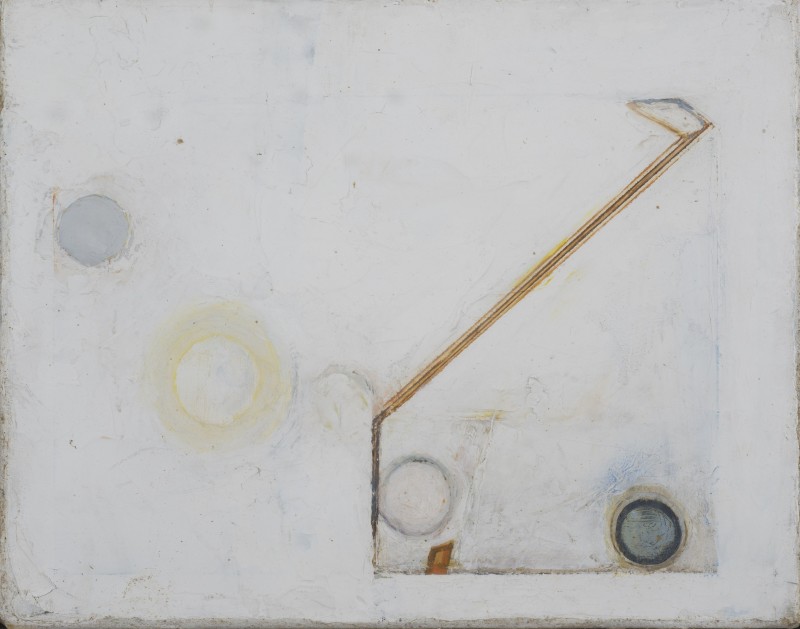 Paul FeilerOrbis XL, 1969Oil on canvas20 x 25 cmSigned, dated and titled verso%3Cdiv%20class%3D%22artist%22%3E%3Cspan%20class%3D%22artist%22%3E%3Cstrong%3EPaul%20Feiler%3C/strong%3E%3C/span%3E%3C/div%3E%0D%3Cdiv%20class%3D%22title%22%3E%3Cem%3EOrbis%20XL%3C/em%3E%2C%201969%3C/div%3E%0D%3Cdiv%20class%3D%22signed_and_dated%22%3ESigned%2C%20dated%20and%20titled%20verso%3C/div%3E%0D%3Cdiv%20class%3D%22medium%22%3EOil%20on%20canvas%3C/div%3E%0D%3Cdiv%20class%3D%22dimensions%22%3E20%20x%2025%20cm%3C/div%3E
Paul FeilerOrbis XL, 1969Oil on canvas20 x 25 cmSigned, dated and titled verso%3Cdiv%20class%3D%22artist%22%3E%3Cspan%20class%3D%22artist%22%3E%3Cstrong%3EPaul%20Feiler%3C/strong%3E%3C/span%3E%3C/div%3E%0D%3Cdiv%20class%3D%22title%22%3E%3Cem%3EOrbis%20XL%3C/em%3E%2C%201969%3C/div%3E%0D%3Cdiv%20class%3D%22signed_and_dated%22%3ESigned%2C%20dated%20and%20titled%20verso%3C/div%3E%0D%3Cdiv%20class%3D%22medium%22%3EOil%20on%20canvas%3C/div%3E%0D%3Cdiv%20class%3D%22dimensions%22%3E20%20x%2025%20cm%3C/div%3E -
 Paul FeilerOrbis XLI, 1969Oil on canvas20 x 15 cmSigned, dated and titled verso%3Cdiv%20class%3D%22artist%22%3E%3Cspan%20class%3D%22artist%22%3E%3Cstrong%3EPaul%20Feiler%3C/strong%3E%3C/span%3E%3C/div%3E%0D%3Cdiv%20class%3D%22title%22%3E%3Cem%3EOrbis%20XLI%3C/em%3E%2C%201969%3C/div%3E%0D%3Cdiv%20class%3D%22signed_and_dated%22%3ESigned%2C%20dated%20and%20titled%20verso%3C/div%3E%0D%3Cdiv%20class%3D%22medium%22%3EOil%20on%20canvas%3C/div%3E%0D%3Cdiv%20class%3D%22dimensions%22%3E20%20x%2015%20cm%3C/div%3E
Paul FeilerOrbis XLI, 1969Oil on canvas20 x 15 cmSigned, dated and titled verso%3Cdiv%20class%3D%22artist%22%3E%3Cspan%20class%3D%22artist%22%3E%3Cstrong%3EPaul%20Feiler%3C/strong%3E%3C/span%3E%3C/div%3E%0D%3Cdiv%20class%3D%22title%22%3E%3Cem%3EOrbis%20XLI%3C/em%3E%2C%201969%3C/div%3E%0D%3Cdiv%20class%3D%22signed_and_dated%22%3ESigned%2C%20dated%20and%20titled%20verso%3C/div%3E%0D%3Cdiv%20class%3D%22medium%22%3EOil%20on%20canvas%3C/div%3E%0D%3Cdiv%20class%3D%22dimensions%22%3E20%20x%2015%20cm%3C/div%3E -
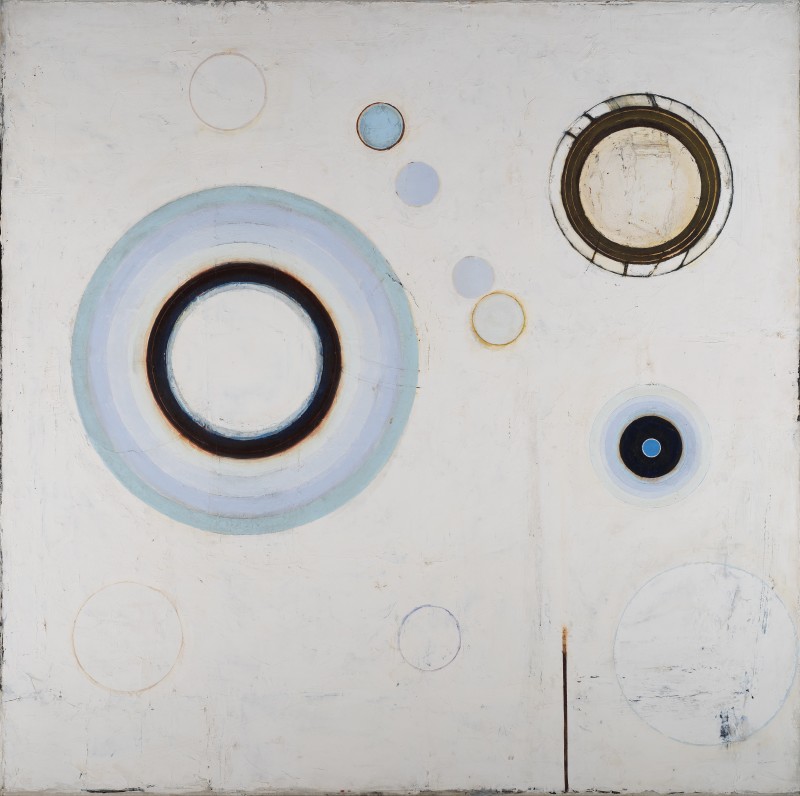 Paul FeilerOrbis XIII, 1968Oil on canvas laid on wood122 x 122 cmSigned, dated and titled verso%3Cdiv%20class%3D%22artist%22%3E%3Cspan%20class%3D%22artist%22%3E%3Cstrong%3EPaul%20Feiler%3C/strong%3E%3C/span%3E%3C/div%3E%0D%3Cdiv%20class%3D%22title%22%3E%3Cem%3EOrbis%20XIII%3C/em%3E%2C%201968%3C/div%3E%0D%3Cdiv%20class%3D%22signed_and_dated%22%3ESigned%2C%20dated%20and%20titled%20verso%3C/div%3E%0D%3Cdiv%20class%3D%22medium%22%3EOil%20on%20canvas%20laid%20on%20wood%3C/div%3E%0D%3Cdiv%20class%3D%22dimensions%22%3E122%20x%20122%20cm%3C/div%3E
Paul FeilerOrbis XIII, 1968Oil on canvas laid on wood122 x 122 cmSigned, dated and titled verso%3Cdiv%20class%3D%22artist%22%3E%3Cspan%20class%3D%22artist%22%3E%3Cstrong%3EPaul%20Feiler%3C/strong%3E%3C/span%3E%3C/div%3E%0D%3Cdiv%20class%3D%22title%22%3E%3Cem%3EOrbis%20XIII%3C/em%3E%2C%201968%3C/div%3E%0D%3Cdiv%20class%3D%22signed_and_dated%22%3ESigned%2C%20dated%20and%20titled%20verso%3C/div%3E%0D%3Cdiv%20class%3D%22medium%22%3EOil%20on%20canvas%20laid%20on%20wood%3C/div%3E%0D%3Cdiv%20class%3D%22dimensions%22%3E122%20x%20122%20cm%3C/div%3E -
 Paul FeilerIntersecting Forms, Grey, 1966Oil on canvas laid on wood102 x 132 cmSigned, dated and titled verso%3Cdiv%20class%3D%22artist%22%3E%3Cspan%20class%3D%22artist%22%3E%3Cstrong%3EPaul%20Feiler%3C/strong%3E%3C/span%3E%3C/div%3E%0D%3Cdiv%20class%3D%22title%22%3E%3Cem%3EIntersecting%20Forms%2C%20Grey%3C/em%3E%2C%201966%3C/div%3E%0D%3Cdiv%20class%3D%22signed_and_dated%22%3ESigned%2C%20dated%20and%20titled%20verso%3C/div%3E%0D%3Cdiv%20class%3D%22medium%22%3EOil%20on%20canvas%20laid%20on%20wood%3C/div%3E%0D%3Cdiv%20class%3D%22dimensions%22%3E102%20x%20132%20cm%3C/div%3E
Paul FeilerIntersecting Forms, Grey, 1966Oil on canvas laid on wood102 x 132 cmSigned, dated and titled verso%3Cdiv%20class%3D%22artist%22%3E%3Cspan%20class%3D%22artist%22%3E%3Cstrong%3EPaul%20Feiler%3C/strong%3E%3C/span%3E%3C/div%3E%0D%3Cdiv%20class%3D%22title%22%3E%3Cem%3EIntersecting%20Forms%2C%20Grey%3C/em%3E%2C%201966%3C/div%3E%0D%3Cdiv%20class%3D%22signed_and_dated%22%3ESigned%2C%20dated%20and%20titled%20verso%3C/div%3E%0D%3Cdiv%20class%3D%22medium%22%3EOil%20on%20canvas%20laid%20on%20wood%3C/div%3E%0D%3Cdiv%20class%3D%22dimensions%22%3E102%20x%20132%20cm%3C/div%3E -
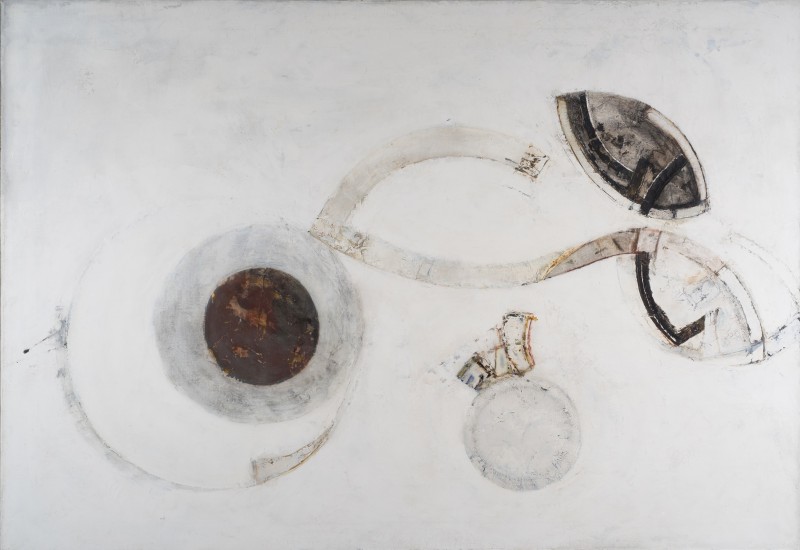 Paul FeilerRevolving Forms, 1966Oil on canvas92 x 132 cm%3Cdiv%20class%3D%22artist%22%3E%3Cspan%20class%3D%22artist%22%3E%3Cstrong%3EPaul%20Feiler%3C/strong%3E%3C/span%3E%3C/div%3E%0D%3Cdiv%20class%3D%22title%22%3E%3Cem%3ERevolving%20Forms%3C/em%3E%2C%201966%3C/div%3E%0D%3Cdiv%20class%3D%22medium%22%3EOil%20on%20canvas%3C/div%3E%0D%3Cdiv%20class%3D%22dimensions%22%3E92%20x%20132%20cm%3C/div%3E
Paul FeilerRevolving Forms, 1966Oil on canvas92 x 132 cm%3Cdiv%20class%3D%22artist%22%3E%3Cspan%20class%3D%22artist%22%3E%3Cstrong%3EPaul%20Feiler%3C/strong%3E%3C/span%3E%3C/div%3E%0D%3Cdiv%20class%3D%22title%22%3E%3Cem%3ERevolving%20Forms%3C/em%3E%2C%201966%3C/div%3E%0D%3Cdiv%20class%3D%22medium%22%3EOil%20on%20canvas%3C/div%3E%0D%3Cdiv%20class%3D%22dimensions%22%3E92%20x%20132%20cm%3C/div%3E -
 Paul FeilerCircles, Brown and Grey, 1965Cut paper35 x 38 cmSigned and dated lower right%3Cdiv%20class%3D%22artist%22%3E%3Cspan%20class%3D%22artist%22%3E%3Cstrong%3EPaul%20Feiler%3C/strong%3E%3C/span%3E%3C/div%3E%0D%3Cdiv%20class%3D%22title%22%3E%3Cem%3ECircles%2C%20Brown%20and%20Grey%3C/em%3E%2C%201965%3C/div%3E%0D%3Cdiv%20class%3D%22signed_and_dated%22%3ESigned%20and%20dated%20lower%20right%3C/div%3E%0D%3Cdiv%20class%3D%22medium%22%3ECut%20paper%3C/div%3E%0D%3Cdiv%20class%3D%22dimensions%22%3E35%20x%2038%20cm%3C/div%3E
Paul FeilerCircles, Brown and Grey, 1965Cut paper35 x 38 cmSigned and dated lower right%3Cdiv%20class%3D%22artist%22%3E%3Cspan%20class%3D%22artist%22%3E%3Cstrong%3EPaul%20Feiler%3C/strong%3E%3C/span%3E%3C/div%3E%0D%3Cdiv%20class%3D%22title%22%3E%3Cem%3ECircles%2C%20Brown%20and%20Grey%3C/em%3E%2C%201965%3C/div%3E%0D%3Cdiv%20class%3D%22signed_and_dated%22%3ESigned%20and%20dated%20lower%20right%3C/div%3E%0D%3Cdiv%20class%3D%22medium%22%3ECut%20paper%3C/div%3E%0D%3Cdiv%20class%3D%22dimensions%22%3E35%20x%2038%20cm%3C/div%3E -
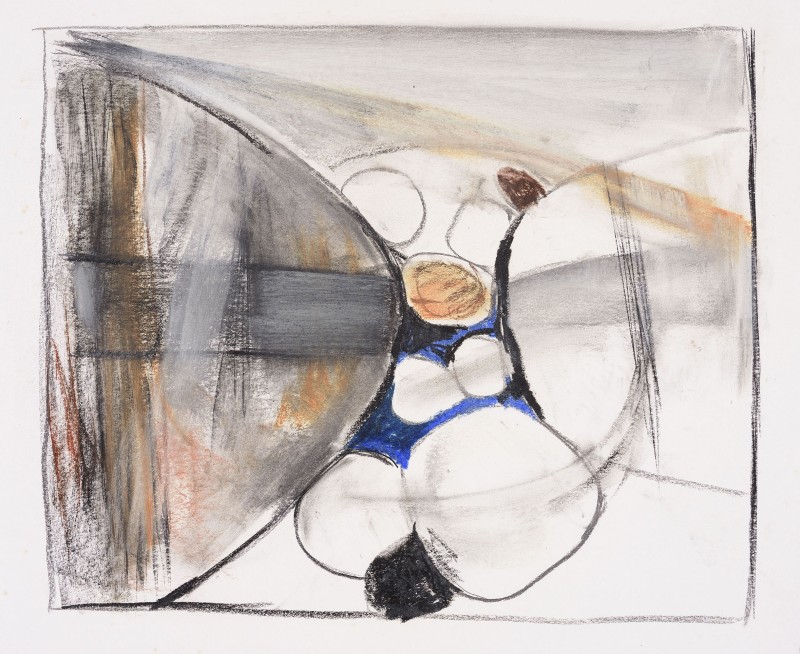 Paul FeilerConnecting Forms, 1964Conté on paper31 x 37 cm%3Cdiv%20class%3D%22artist%22%3E%3Cspan%20class%3D%22artist%22%3E%3Cstrong%3EPaul%20Feiler%3C%2Fstrong%3E%3C%2Fspan%3E%3C%2Fdiv%3E%0D%3Cdiv%20class%3D%22title%22%3E%3Cem%3EConnecting%20Forms%3C%2Fem%3E%2C%201964%3C%2Fdiv%3E%0D%3Cdiv%20class%3D%22medium%22%3ECont%C3%A9%20on%20paper%3C%2Fdiv%3E%0D%3Cdiv%20class%3D%22dimensions%22%3E31%20x%2037%20cm%3C%2Fdiv%3E
Paul FeilerConnecting Forms, 1964Conté on paper31 x 37 cm%3Cdiv%20class%3D%22artist%22%3E%3Cspan%20class%3D%22artist%22%3E%3Cstrong%3EPaul%20Feiler%3C%2Fstrong%3E%3C%2Fspan%3E%3C%2Fdiv%3E%0D%3Cdiv%20class%3D%22title%22%3E%3Cem%3EConnecting%20Forms%3C%2Fem%3E%2C%201964%3C%2Fdiv%3E%0D%3Cdiv%20class%3D%22medium%22%3ECont%C3%A9%20on%20paper%3C%2Fdiv%3E%0D%3Cdiv%20class%3D%22dimensions%22%3E31%20x%2037%20cm%3C%2Fdiv%3E -
 Paul FeilerGrey Receding, 1964Oil on canvas laid on wood152 x 183 cmSigned, dated and titled on verso%3Cdiv%20class%3D%22artist%22%3E%3Cspan%20class%3D%22artist%22%3E%3Cstrong%3EPaul%20Feiler%3C/strong%3E%3C/span%3E%3C/div%3E%0D%3Cdiv%20class%3D%22title%22%3E%3Cem%3EGrey%20Receding%3C/em%3E%2C%201964%3C/div%3E%0D%3Cdiv%20class%3D%22signed_and_dated%22%3ESigned%2C%20dated%20and%20titled%20on%20verso%3C/div%3E%0D%3Cdiv%20class%3D%22medium%22%3EOil%20on%20canvas%20laid%20on%20wood%3C/div%3E%0D%3Cdiv%20class%3D%22dimensions%22%3E152%20x%20183%20cm%3C/div%3E
Paul FeilerGrey Receding, 1964Oil on canvas laid on wood152 x 183 cmSigned, dated and titled on verso%3Cdiv%20class%3D%22artist%22%3E%3Cspan%20class%3D%22artist%22%3E%3Cstrong%3EPaul%20Feiler%3C/strong%3E%3C/span%3E%3C/div%3E%0D%3Cdiv%20class%3D%22title%22%3E%3Cem%3EGrey%20Receding%3C/em%3E%2C%201964%3C/div%3E%0D%3Cdiv%20class%3D%22signed_and_dated%22%3ESigned%2C%20dated%20and%20titled%20on%20verso%3C/div%3E%0D%3Cdiv%20class%3D%22medium%22%3EOil%20on%20canvas%20laid%20on%20wood%3C/div%3E%0D%3Cdiv%20class%3D%22dimensions%22%3E152%20x%20183%20cm%3C/div%3E -
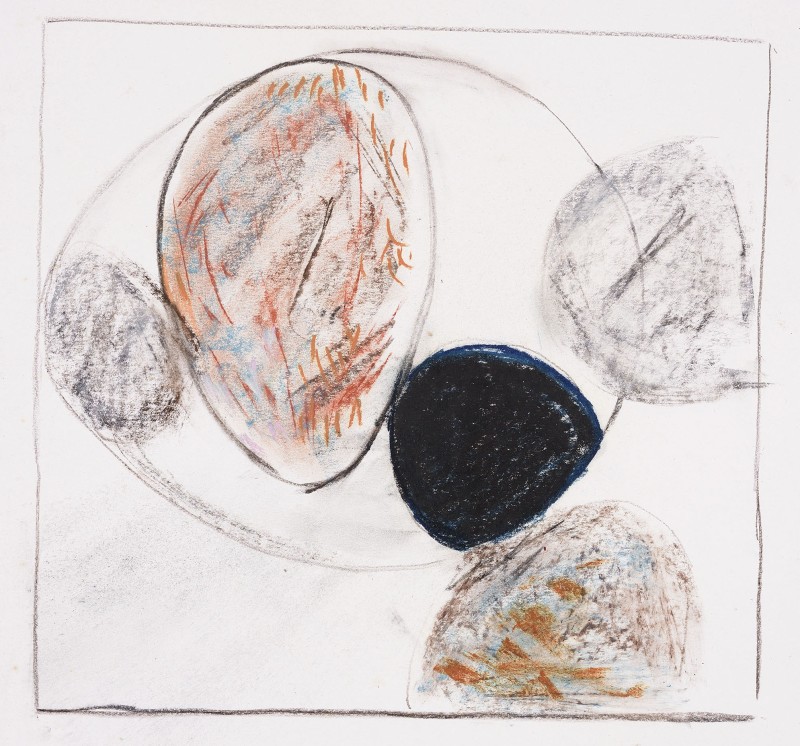 Paul FeilerConnecting Forms, 1963Conté on paper30 x 31 cm%3Cdiv%20class%3D%22artist%22%3E%3Cspan%20class%3D%22artist%22%3E%3Cstrong%3EPaul%20Feiler%3C%2Fstrong%3E%3C%2Fspan%3E%3C%2Fdiv%3E%0D%3Cdiv%20class%3D%22title%22%3E%3Cem%3EConnecting%20Forms%3C%2Fem%3E%2C%201963%3C%2Fdiv%3E%0D%3Cdiv%20class%3D%22medium%22%3ECont%C3%A9%20on%20paper%3C%2Fdiv%3E%0D%3Cdiv%20class%3D%22dimensions%22%3E30%20x%2031%20cm%3C%2Fdiv%3E
Paul FeilerConnecting Forms, 1963Conté on paper30 x 31 cm%3Cdiv%20class%3D%22artist%22%3E%3Cspan%20class%3D%22artist%22%3E%3Cstrong%3EPaul%20Feiler%3C%2Fstrong%3E%3C%2Fspan%3E%3C%2Fdiv%3E%0D%3Cdiv%20class%3D%22title%22%3E%3Cem%3EConnecting%20Forms%3C%2Fem%3E%2C%201963%3C%2Fdiv%3E%0D%3Cdiv%20class%3D%22medium%22%3ECont%C3%A9%20on%20paper%3C%2Fdiv%3E%0D%3Cdiv%20class%3D%22dimensions%22%3E30%20x%2031%20cm%3C%2Fdiv%3E -
 Paul FeilerPorthledden III, 1960Oil on canvas laid on wood102 x 152 cmSigned, dated and titled verso%3Cdiv%20class%3D%22artist%22%3E%3Cspan%20class%3D%22artist%22%3E%3Cstrong%3EPaul%20Feiler%3C/strong%3E%3C/span%3E%3C/div%3E%0D%3Cdiv%20class%3D%22title%22%3E%3Cem%3EPorthledden%20III%3C/em%3E%2C%201960%3C/div%3E%0D%3Cdiv%20class%3D%22signed_and_dated%22%3ESigned%2C%20dated%20and%20titled%20verso%3C/div%3E%0D%3Cdiv%20class%3D%22medium%22%3EOil%20on%20canvas%20laid%20on%20wood%3C/div%3E%0D%3Cdiv%20class%3D%22dimensions%22%3E102%20x%20152%20cm%3C/div%3E
Paul FeilerPorthledden III, 1960Oil on canvas laid on wood102 x 152 cmSigned, dated and titled verso%3Cdiv%20class%3D%22artist%22%3E%3Cspan%20class%3D%22artist%22%3E%3Cstrong%3EPaul%20Feiler%3C/strong%3E%3C/span%3E%3C/div%3E%0D%3Cdiv%20class%3D%22title%22%3E%3Cem%3EPorthledden%20III%3C/em%3E%2C%201960%3C/div%3E%0D%3Cdiv%20class%3D%22signed_and_dated%22%3ESigned%2C%20dated%20and%20titled%20verso%3C/div%3E%0D%3Cdiv%20class%3D%22medium%22%3EOil%20on%20canvas%20laid%20on%20wood%3C/div%3E%0D%3Cdiv%20class%3D%22dimensions%22%3E102%20x%20152%20cm%3C/div%3E -
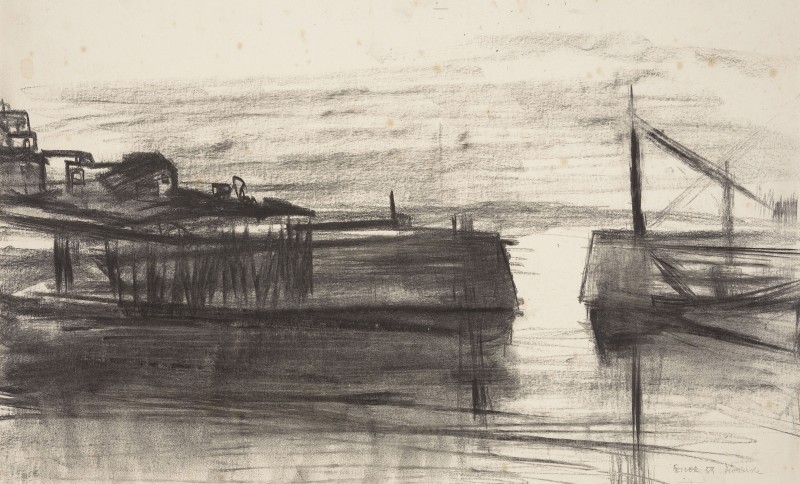 Paul FeilerMousehole, 1959Conté on paper30 x 48 cmSigned, dated and titled lower right%3Cdiv%20class%3D%22artist%22%3E%3Cspan%20class%3D%22artist%22%3E%3Cstrong%3EPaul%20Feiler%3C%2Fstrong%3E%3C%2Fspan%3E%3C%2Fdiv%3E%0D%3Cdiv%20class%3D%22title%22%3E%3Cem%3EMousehole%3C%2Fem%3E%2C%201959%3C%2Fdiv%3E%0D%3Cdiv%20class%3D%22signed_and_dated%22%3ESigned%2C%20dated%20and%20titled%20lower%20right%3C%2Fdiv%3E%0D%3Cdiv%20class%3D%22medium%22%3ECont%C3%A9%20on%20paper%3C%2Fdiv%3E%0D%3Cdiv%20class%3D%22dimensions%22%3E30%20x%2048%20cm%3C%2Fdiv%3E
Paul FeilerMousehole, 1959Conté on paper30 x 48 cmSigned, dated and titled lower right%3Cdiv%20class%3D%22artist%22%3E%3Cspan%20class%3D%22artist%22%3E%3Cstrong%3EPaul%20Feiler%3C%2Fstrong%3E%3C%2Fspan%3E%3C%2Fdiv%3E%0D%3Cdiv%20class%3D%22title%22%3E%3Cem%3EMousehole%3C%2Fem%3E%2C%201959%3C%2Fdiv%3E%0D%3Cdiv%20class%3D%22signed_and_dated%22%3ESigned%2C%20dated%20and%20titled%20lower%20right%3C%2Fdiv%3E%0D%3Cdiv%20class%3D%22medium%22%3ECont%C3%A9%20on%20paper%3C%2Fdiv%3E%0D%3Cdiv%20class%3D%22dimensions%22%3E30%20x%2048%20cm%3C%2Fdiv%3E -
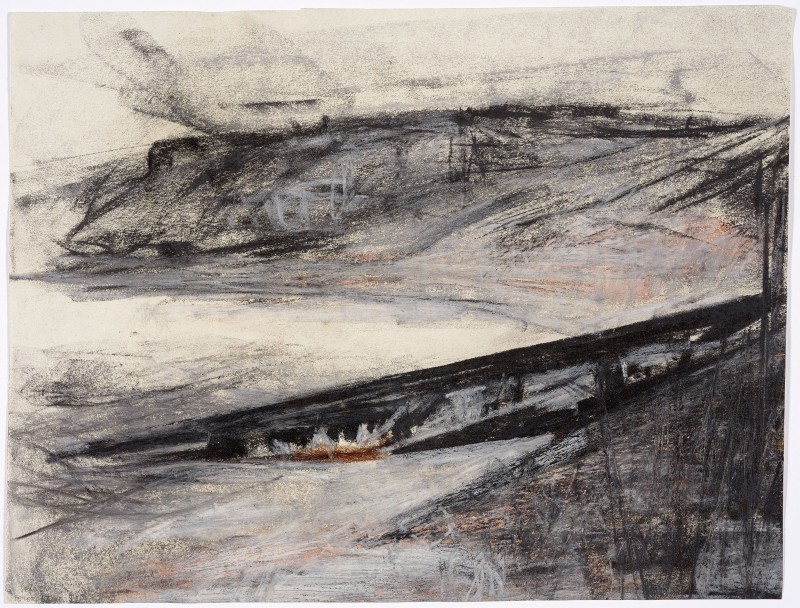 Paul FeilerSennen, 1959Conté and chalk on paper33 x 43 cmSigned, dated and titled lower left%3Cdiv%20class%3D%22artist%22%3E%3Cspan%20class%3D%22artist%22%3E%3Cstrong%3EPaul%20Feiler%3C%2Fstrong%3E%3C%2Fspan%3E%3C%2Fdiv%3E%0D%3Cdiv%20class%3D%22title%22%3E%3Cem%3ESennen%3C%2Fem%3E%2C%201959%3C%2Fdiv%3E%0D%3Cdiv%20class%3D%22signed_and_dated%22%3ESigned%2C%20dated%20and%20titled%20lower%20left%3C%2Fdiv%3E%0D%3Cdiv%20class%3D%22medium%22%3ECont%C3%A9%20and%20chalk%20on%20paper%3C%2Fdiv%3E%0D%3Cdiv%20class%3D%22dimensions%22%3E33%20x%2043%20cm%3C%2Fdiv%3E
Paul FeilerSennen, 1959Conté and chalk on paper33 x 43 cmSigned, dated and titled lower left%3Cdiv%20class%3D%22artist%22%3E%3Cspan%20class%3D%22artist%22%3E%3Cstrong%3EPaul%20Feiler%3C%2Fstrong%3E%3C%2Fspan%3E%3C%2Fdiv%3E%0D%3Cdiv%20class%3D%22title%22%3E%3Cem%3ESennen%3C%2Fem%3E%2C%201959%3C%2Fdiv%3E%0D%3Cdiv%20class%3D%22signed_and_dated%22%3ESigned%2C%20dated%20and%20titled%20lower%20left%3C%2Fdiv%3E%0D%3Cdiv%20class%3D%22medium%22%3ECont%C3%A9%20and%20chalk%20on%20paper%3C%2Fdiv%3E%0D%3Cdiv%20class%3D%22dimensions%22%3E33%20x%2043%20cm%3C%2Fdiv%3E -
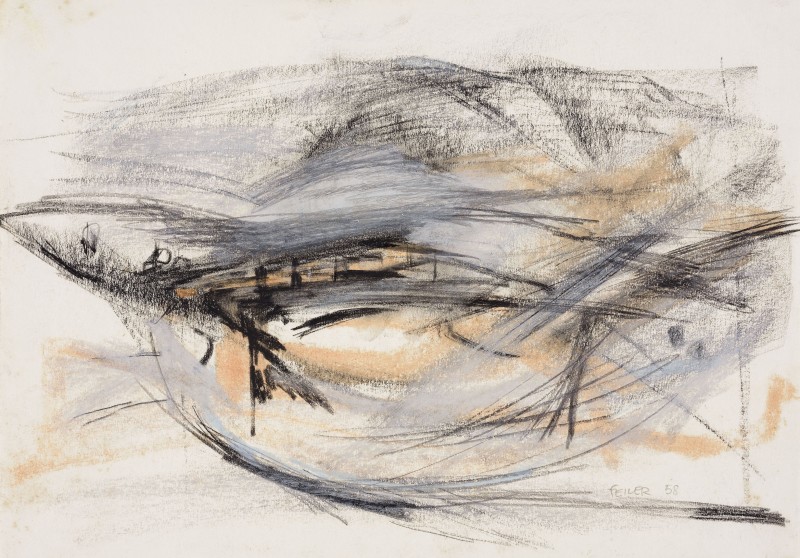 Paul FeilerHarbour, 1958Conté and chalk on paper25 x 36 cmSigned and dated lower right%3Cdiv%20class%3D%22artist%22%3E%3Cspan%20class%3D%22artist%22%3E%3Cstrong%3EPaul%20Feiler%3C%2Fstrong%3E%3C%2Fspan%3E%3C%2Fdiv%3E%0D%3Cdiv%20class%3D%22title%22%3E%3Cem%3EHarbour%3C%2Fem%3E%2C%201958%3C%2Fdiv%3E%0D%3Cdiv%20class%3D%22signed_and_dated%22%3ESigned%20and%20dated%20lower%20right%3C%2Fdiv%3E%0D%3Cdiv%20class%3D%22medium%22%3ECont%C3%A9%20and%20chalk%20on%20paper%3C%2Fdiv%3E%0D%3Cdiv%20class%3D%22dimensions%22%3E25%20x%2036%20cm%3C%2Fdiv%3E
Paul FeilerHarbour, 1958Conté and chalk on paper25 x 36 cmSigned and dated lower right%3Cdiv%20class%3D%22artist%22%3E%3Cspan%20class%3D%22artist%22%3E%3Cstrong%3EPaul%20Feiler%3C%2Fstrong%3E%3C%2Fspan%3E%3C%2Fdiv%3E%0D%3Cdiv%20class%3D%22title%22%3E%3Cem%3EHarbour%3C%2Fem%3E%2C%201958%3C%2Fdiv%3E%0D%3Cdiv%20class%3D%22signed_and_dated%22%3ESigned%20and%20dated%20lower%20right%3C%2Fdiv%3E%0D%3Cdiv%20class%3D%22medium%22%3ECont%C3%A9%20and%20chalk%20on%20paper%3C%2Fdiv%3E%0D%3Cdiv%20class%3D%22dimensions%22%3E25%20x%2036%20cm%3C%2Fdiv%3E -
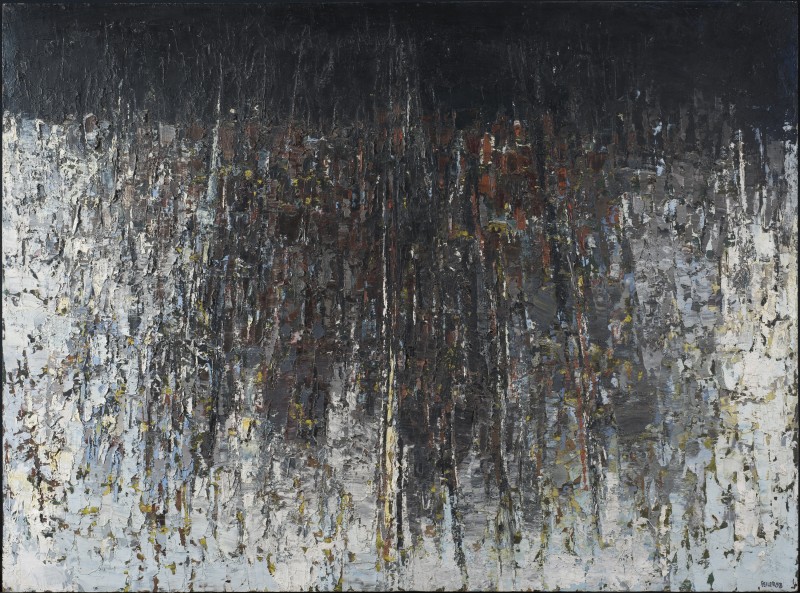 Paul FeilerLandscape, Red and Black, 1958Oil on board92 x 122 cmSigned and dated lower right; titled verso%3Cdiv%20class%3D%22artist%22%3E%3Cspan%20class%3D%22artist%22%3E%3Cstrong%3EPaul%20Feiler%3C/strong%3E%3C/span%3E%3C/div%3E%0D%3Cdiv%20class%3D%22title%22%3E%3Cem%3ELandscape%2C%20Red%20and%20Black%3C/em%3E%2C%201958%3C/div%3E%0D%3Cdiv%20class%3D%22signed_and_dated%22%3ESigned%20and%20dated%20lower%20right%3B%20titled%20verso%3C/div%3E%0D%3Cdiv%20class%3D%22medium%22%3EOil%20on%20board%3C/div%3E%0D%3Cdiv%20class%3D%22dimensions%22%3E92%20x%20122%20cm%3C/div%3E
Paul FeilerLandscape, Red and Black, 1958Oil on board92 x 122 cmSigned and dated lower right; titled verso%3Cdiv%20class%3D%22artist%22%3E%3Cspan%20class%3D%22artist%22%3E%3Cstrong%3EPaul%20Feiler%3C/strong%3E%3C/span%3E%3C/div%3E%0D%3Cdiv%20class%3D%22title%22%3E%3Cem%3ELandscape%2C%20Red%20and%20Black%3C/em%3E%2C%201958%3C/div%3E%0D%3Cdiv%20class%3D%22signed_and_dated%22%3ESigned%20and%20dated%20lower%20right%3B%20titled%20verso%3C/div%3E%0D%3Cdiv%20class%3D%22medium%22%3EOil%20on%20board%3C/div%3E%0D%3Cdiv%20class%3D%22dimensions%22%3E92%20x%20122%20cm%3C/div%3E -
 Paul FeilerStill Life, 1958Oil over lithograph21 x 31 cmSigned and dated lower centre%3Cdiv%20class%3D%22artist%22%3E%3Cspan%20class%3D%22artist%22%3E%3Cstrong%3EPaul%20Feiler%3C/strong%3E%3C/span%3E%3C/div%3E%0D%3Cdiv%20class%3D%22title%22%3E%3Cem%3EStill%20Life%3C/em%3E%2C%201958%3C/div%3E%0D%3Cdiv%20class%3D%22signed_and_dated%22%3ESigned%20and%20dated%20lower%20centre%3C/div%3E%0D%3Cdiv%20class%3D%22medium%22%3EOil%20over%20lithograph%3C/div%3E%0D%3Cdiv%20class%3D%22dimensions%22%3E21%20x%2031%20cm%3C/div%3E
Paul FeilerStill Life, 1958Oil over lithograph21 x 31 cmSigned and dated lower centre%3Cdiv%20class%3D%22artist%22%3E%3Cspan%20class%3D%22artist%22%3E%3Cstrong%3EPaul%20Feiler%3C/strong%3E%3C/span%3E%3C/div%3E%0D%3Cdiv%20class%3D%22title%22%3E%3Cem%3EStill%20Life%3C/em%3E%2C%201958%3C/div%3E%0D%3Cdiv%20class%3D%22signed_and_dated%22%3ESigned%20and%20dated%20lower%20centre%3C/div%3E%0D%3Cdiv%20class%3D%22medium%22%3EOil%20over%20lithograph%3C/div%3E%0D%3Cdiv%20class%3D%22dimensions%22%3E21%20x%2031%20cm%3C/div%3E -
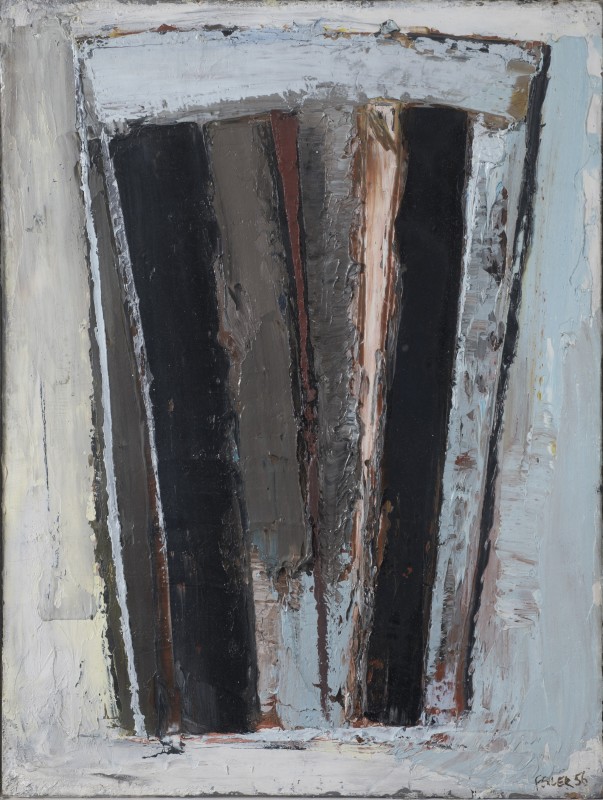 Paul FeilerGandria, Grey and Black, 1956Oil on board40 x 30 cmSigned and dated lower right; titled verso%3Cdiv%20class%3D%22artist%22%3E%3Cspan%20class%3D%22artist%22%3E%3Cstrong%3EPaul%20Feiler%3C/strong%3E%3C/span%3E%3C/div%3E%0D%3Cdiv%20class%3D%22title%22%3E%3Cem%3EGandria%2C%20Grey%20and%20Black%3C/em%3E%2C%201956%3C/div%3E%0D%3Cdiv%20class%3D%22signed_and_dated%22%3ESigned%20and%20dated%20lower%20right%3B%20titled%20verso%3C/div%3E%0D%3Cdiv%20class%3D%22medium%22%3EOil%20on%20board%3C/div%3E%0D%3Cdiv%20class%3D%22dimensions%22%3E40%20x%2030%20cm%3C/div%3E
Paul FeilerGandria, Grey and Black, 1956Oil on board40 x 30 cmSigned and dated lower right; titled verso%3Cdiv%20class%3D%22artist%22%3E%3Cspan%20class%3D%22artist%22%3E%3Cstrong%3EPaul%20Feiler%3C/strong%3E%3C/span%3E%3C/div%3E%0D%3Cdiv%20class%3D%22title%22%3E%3Cem%3EGandria%2C%20Grey%20and%20Black%3C/em%3E%2C%201956%3C/div%3E%0D%3Cdiv%20class%3D%22signed_and_dated%22%3ESigned%20and%20dated%20lower%20right%3B%20titled%20verso%3C/div%3E%0D%3Cdiv%20class%3D%22medium%22%3EOil%20on%20board%3C/div%3E%0D%3Cdiv%20class%3D%22dimensions%22%3E40%20x%2030%20cm%3C/div%3E -
 Paul FeilerLamorna, 1956Conté and chalk on paper38 x 53 cmSigned, dated and titled lower centre%3Cdiv%20class%3D%22artist%22%3E%3Cspan%20class%3D%22artist%22%3E%3Cstrong%3EPaul%20Feiler%3C%2Fstrong%3E%3C%2Fspan%3E%3C%2Fdiv%3E%0D%3Cdiv%20class%3D%22title%22%3E%3Cem%3ELamorna%3C%2Fem%3E%2C%201956%3C%2Fdiv%3E%0D%3Cdiv%20class%3D%22signed_and_dated%22%3ESigned%2C%20dated%20and%20titled%20lower%20centre%3C%2Fdiv%3E%0D%3Cdiv%20class%3D%22medium%22%3ECont%C3%A9%20and%20chalk%20on%20paper%3C%2Fdiv%3E%0D%3Cdiv%20class%3D%22dimensions%22%3E38%20x%2053%20cm%3C%2Fdiv%3E
Paul FeilerLamorna, 1956Conté and chalk on paper38 x 53 cmSigned, dated and titled lower centre%3Cdiv%20class%3D%22artist%22%3E%3Cspan%20class%3D%22artist%22%3E%3Cstrong%3EPaul%20Feiler%3C%2Fstrong%3E%3C%2Fspan%3E%3C%2Fdiv%3E%0D%3Cdiv%20class%3D%22title%22%3E%3Cem%3ELamorna%3C%2Fem%3E%2C%201956%3C%2Fdiv%3E%0D%3Cdiv%20class%3D%22signed_and_dated%22%3ESigned%2C%20dated%20and%20titled%20lower%20centre%3C%2Fdiv%3E%0D%3Cdiv%20class%3D%22medium%22%3ECont%C3%A9%20and%20chalk%20on%20paper%3C%2Fdiv%3E%0D%3Cdiv%20class%3D%22dimensions%22%3E38%20x%2053%20cm%3C%2Fdiv%3E -
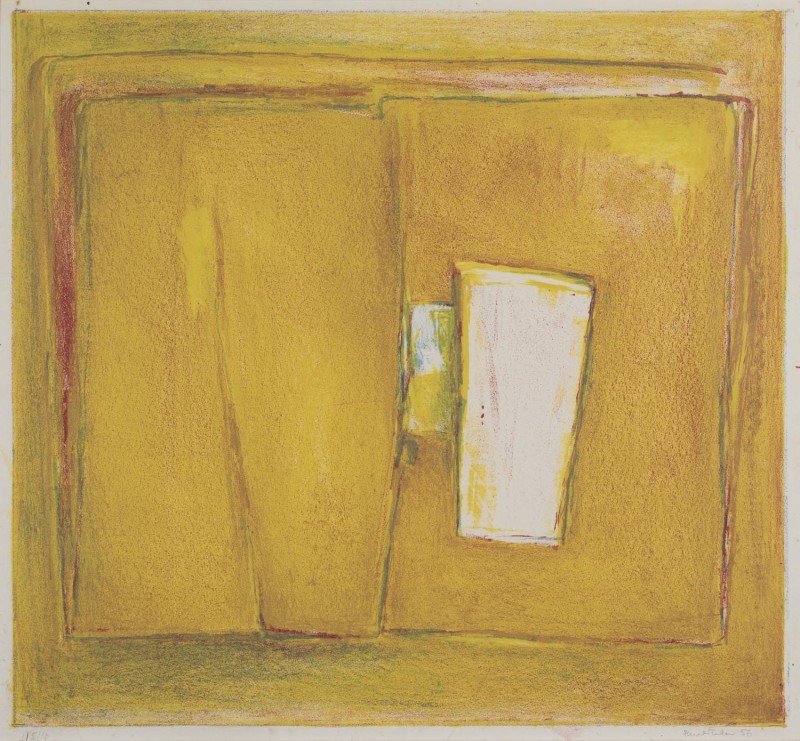 Paul FeilerYellow Forms IV, 1956Lithograph36 x 38 cmFrom the edition of 10 impressionsSigned, dated and numbered%3Cdiv%20class%3D%22artist%22%3E%3Cspan%20class%3D%22artist%22%3E%3Cstrong%3EPaul%20Feiler%3C/strong%3E%3C/span%3E%3C/div%3E%0D%3Cdiv%20class%3D%22title%22%3E%3Cem%3EYellow%20Forms%20IV%3C/em%3E%2C%201956%3C/div%3E%0D%3Cdiv%20class%3D%22signed_and_dated%22%3ESigned%2C%20dated%20and%20numbered%3C/div%3E%0D%3Cdiv%20class%3D%22medium%22%3ELithograph%3C/div%3E%0D%3Cdiv%20class%3D%22dimensions%22%3E36%20x%2038%20cm%3C/div%3E%0D%3Cdiv%20class%3D%22edition_details%22%3EFrom%20the%20edition%20of%2010%20impressions%3C/div%3E
Paul FeilerYellow Forms IV, 1956Lithograph36 x 38 cmFrom the edition of 10 impressionsSigned, dated and numbered%3Cdiv%20class%3D%22artist%22%3E%3Cspan%20class%3D%22artist%22%3E%3Cstrong%3EPaul%20Feiler%3C/strong%3E%3C/span%3E%3C/div%3E%0D%3Cdiv%20class%3D%22title%22%3E%3Cem%3EYellow%20Forms%20IV%3C/em%3E%2C%201956%3C/div%3E%0D%3Cdiv%20class%3D%22signed_and_dated%22%3ESigned%2C%20dated%20and%20numbered%3C/div%3E%0D%3Cdiv%20class%3D%22medium%22%3ELithograph%3C/div%3E%0D%3Cdiv%20class%3D%22dimensions%22%3E36%20x%2038%20cm%3C/div%3E%0D%3Cdiv%20class%3D%22edition_details%22%3EFrom%20the%20edition%20of%2010%20impressions%3C/div%3E -
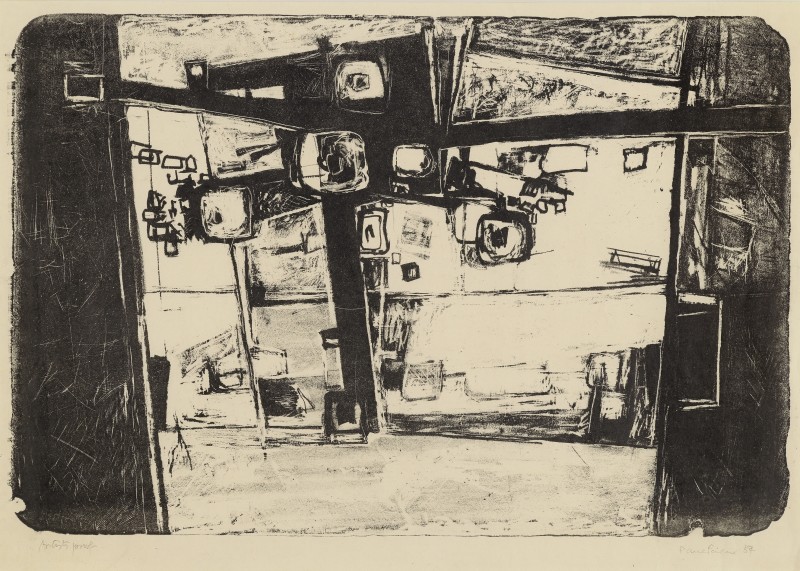 Paul FeilerBalcony with Beach, 1954Lithograph31 x 46 cm (image)An AP, aside from the edition of 25 impressionsSigned, dated and inscribed 'Artist's Proof'%3Cdiv%20class%3D%22artist%22%3E%3Cspan%20class%3D%22artist%22%3E%3Cstrong%3EPaul%20Feiler%3C/strong%3E%3C/span%3E%3C/div%3E%0D%3Cdiv%20class%3D%22title%22%3E%3Cem%3EBalcony%20with%20Beach%3C/em%3E%2C%201954%3C/div%3E%0D%3Cdiv%20class%3D%22signed_and_dated%22%3ESigned%2C%20dated%20and%20inscribed%20%27Artist%27s%20Proof%27%3C/div%3E%0D%3Cdiv%20class%3D%22medium%22%3ELithograph%3C/div%3E%0D%3Cdiv%20class%3D%22dimensions%22%3E31%20x%2046%20cm%20%28image%29%3C/div%3E%0D%3Cdiv%20class%3D%22edition_details%22%3EAn%20AP%2C%20aside%20from%20the%20edition%20of%2025%20impressions%20%3C/div%3E
Paul FeilerBalcony with Beach, 1954Lithograph31 x 46 cm (image)An AP, aside from the edition of 25 impressionsSigned, dated and inscribed 'Artist's Proof'%3Cdiv%20class%3D%22artist%22%3E%3Cspan%20class%3D%22artist%22%3E%3Cstrong%3EPaul%20Feiler%3C/strong%3E%3C/span%3E%3C/div%3E%0D%3Cdiv%20class%3D%22title%22%3E%3Cem%3EBalcony%20with%20Beach%3C/em%3E%2C%201954%3C/div%3E%0D%3Cdiv%20class%3D%22signed_and_dated%22%3ESigned%2C%20dated%20and%20inscribed%20%27Artist%27s%20Proof%27%3C/div%3E%0D%3Cdiv%20class%3D%22medium%22%3ELithograph%3C/div%3E%0D%3Cdiv%20class%3D%22dimensions%22%3E31%20x%2046%20cm%20%28image%29%3C/div%3E%0D%3Cdiv%20class%3D%22edition_details%22%3EAn%20AP%2C%20aside%20from%20the%20edition%20of%2025%20impressions%20%3C/div%3E -
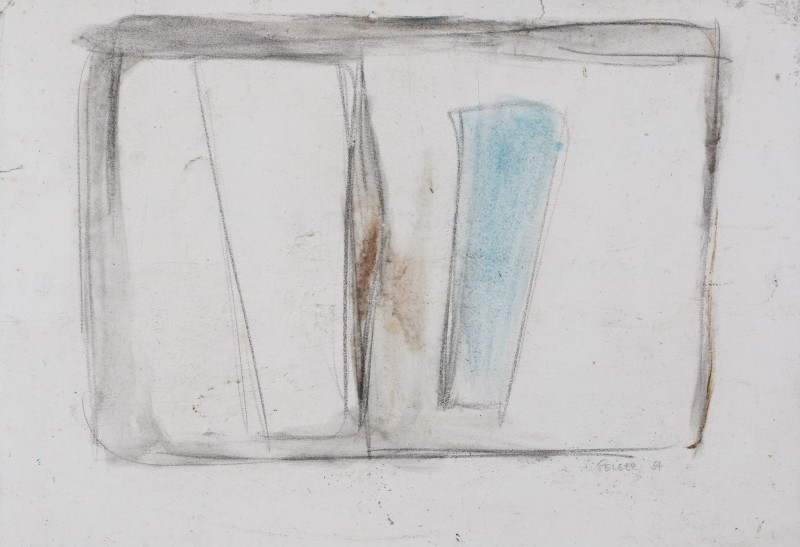 Paul FeilerUntitled, 1954Conté and ink on paper21 x 30 cmSigned and dated lower right%3Cdiv%20class%3D%22artist%22%3E%3Cspan%20class%3D%22artist%22%3E%3Cstrong%3EPaul%20Feiler%3C%2Fstrong%3E%3C%2Fspan%3E%3C%2Fdiv%3E%0D%3Cdiv%20class%3D%22title%22%3E%3Cem%3EUntitled%3C%2Fem%3E%2C%201954%3C%2Fdiv%3E%0D%3Cdiv%20class%3D%22signed_and_dated%22%3ESigned%20and%20dated%20lower%20right%3C%2Fdiv%3E%0D%3Cdiv%20class%3D%22medium%22%3ECont%C3%A9%20and%20ink%20on%20paper%3C%2Fdiv%3E%0D%3Cdiv%20class%3D%22dimensions%22%3E21%20x%2030%20cm%3C%2Fdiv%3E
Paul FeilerUntitled, 1954Conté and ink on paper21 x 30 cmSigned and dated lower right%3Cdiv%20class%3D%22artist%22%3E%3Cspan%20class%3D%22artist%22%3E%3Cstrong%3EPaul%20Feiler%3C%2Fstrong%3E%3C%2Fspan%3E%3C%2Fdiv%3E%0D%3Cdiv%20class%3D%22title%22%3E%3Cem%3EUntitled%3C%2Fem%3E%2C%201954%3C%2Fdiv%3E%0D%3Cdiv%20class%3D%22signed_and_dated%22%3ESigned%20and%20dated%20lower%20right%3C%2Fdiv%3E%0D%3Cdiv%20class%3D%22medium%22%3ECont%C3%A9%20and%20ink%20on%20paper%3C%2Fdiv%3E%0D%3Cdiv%20class%3D%22dimensions%22%3E21%20x%2030%20cm%3C%2Fdiv%3E -
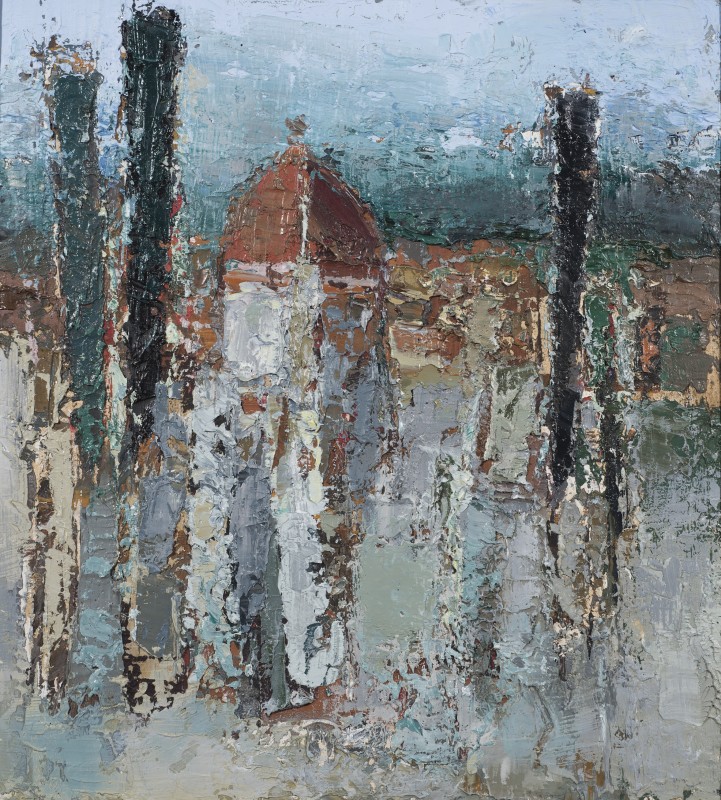 Paul FeilerView of Florence, 1954Oil on board39 x 36 cmSigned, dated and titled verso%3Cdiv%20class%3D%22artist%22%3E%3Cspan%20class%3D%22artist%22%3E%3Cstrong%3EPaul%20Feiler%3C/strong%3E%3C/span%3E%3C/div%3E%0D%3Cdiv%20class%3D%22title%22%3E%3Cem%3EView%20of%20Florence%3C/em%3E%2C%201954%3C/div%3E%0D%3Cdiv%20class%3D%22signed_and_dated%22%3ESigned%2C%20dated%20and%20titled%20verso%3C/div%3E%0D%3Cdiv%20class%3D%22medium%22%3EOil%20on%20board%3C/div%3E%0D%3Cdiv%20class%3D%22dimensions%22%3E39%20x%2036%20cm%3C/div%3E
Paul FeilerView of Florence, 1954Oil on board39 x 36 cmSigned, dated and titled verso%3Cdiv%20class%3D%22artist%22%3E%3Cspan%20class%3D%22artist%22%3E%3Cstrong%3EPaul%20Feiler%3C/strong%3E%3C/span%3E%3C/div%3E%0D%3Cdiv%20class%3D%22title%22%3E%3Cem%3EView%20of%20Florence%3C/em%3E%2C%201954%3C/div%3E%0D%3Cdiv%20class%3D%22signed_and_dated%22%3ESigned%2C%20dated%20and%20titled%20verso%3C/div%3E%0D%3Cdiv%20class%3D%22medium%22%3EOil%20on%20board%3C/div%3E%0D%3Cdiv%20class%3D%22dimensions%22%3E39%20x%2036%20cm%3C/div%3E -
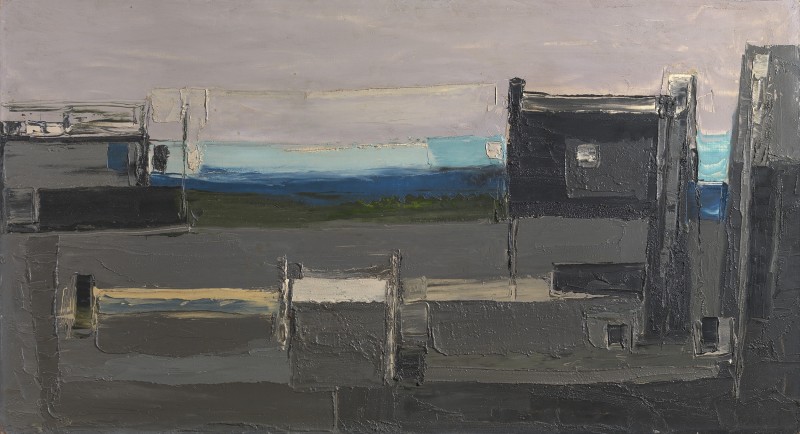 Paul FeilerEvening Harbour, Low Tide, 1953Oil on board50 x 92 cmSigned and dated lower right; titled verso%3Cdiv%20class%3D%22artist%22%3E%3Cspan%20class%3D%22artist%22%3E%3Cstrong%3EPaul%20Feiler%3C/strong%3E%3C/span%3E%3C/div%3E%0D%3Cdiv%20class%3D%22title%22%3E%3Cem%3EEvening%20Harbour%2C%20Low%20Tide%3C/em%3E%2C%201953%3C/div%3E%0D%3Cdiv%20class%3D%22signed_and_dated%22%3ESigned%20and%20dated%20lower%20right%3B%20titled%20verso%3C/div%3E%0D%3Cdiv%20class%3D%22medium%22%3EOil%20on%20board%3C/div%3E%0D%3Cdiv%20class%3D%22dimensions%22%3E50%20x%2092%20cm%3C/div%3E
Paul FeilerEvening Harbour, Low Tide, 1953Oil on board50 x 92 cmSigned and dated lower right; titled verso%3Cdiv%20class%3D%22artist%22%3E%3Cspan%20class%3D%22artist%22%3E%3Cstrong%3EPaul%20Feiler%3C/strong%3E%3C/span%3E%3C/div%3E%0D%3Cdiv%20class%3D%22title%22%3E%3Cem%3EEvening%20Harbour%2C%20Low%20Tide%3C/em%3E%2C%201953%3C/div%3E%0D%3Cdiv%20class%3D%22signed_and_dated%22%3ESigned%20and%20dated%20lower%20right%3B%20titled%20verso%3C/div%3E%0D%3Cdiv%20class%3D%22medium%22%3EOil%20on%20board%3C/div%3E%0D%3Cdiv%20class%3D%22dimensions%22%3E50%20x%2092%20cm%3C/div%3E -
 Paul FeilerAtlantic Island, 1952Oil on board53 x 75 cmSigned and dated lower right; titled verso%3Cdiv%20class%3D%22artist%22%3E%3Cspan%20class%3D%22artist%22%3E%3Cstrong%3EPaul%20Feiler%3C/strong%3E%3C/span%3E%3C/div%3E%0D%3Cdiv%20class%3D%22title%22%3E%3Cem%3EAtlantic%20Island%3C/em%3E%2C%201952%3C/div%3E%0D%3Cdiv%20class%3D%22signed_and_dated%22%3ESigned%20and%20dated%20lower%20right%3B%20titled%20verso%3C/div%3E%0D%3Cdiv%20class%3D%22medium%22%3EOil%20on%20board%3C/div%3E%0D%3Cdiv%20class%3D%22dimensions%22%3E53%20x%2075%20cm%3C/div%3E
Paul FeilerAtlantic Island, 1952Oil on board53 x 75 cmSigned and dated lower right; titled verso%3Cdiv%20class%3D%22artist%22%3E%3Cspan%20class%3D%22artist%22%3E%3Cstrong%3EPaul%20Feiler%3C/strong%3E%3C/span%3E%3C/div%3E%0D%3Cdiv%20class%3D%22title%22%3E%3Cem%3EAtlantic%20Island%3C/em%3E%2C%201952%3C/div%3E%0D%3Cdiv%20class%3D%22signed_and_dated%22%3ESigned%20and%20dated%20lower%20right%3B%20titled%20verso%3C/div%3E%0D%3Cdiv%20class%3D%22medium%22%3EOil%20on%20board%3C/div%3E%0D%3Cdiv%20class%3D%22dimensions%22%3E53%20x%2075%20cm%3C/div%3E -
 Paul FeilerDrawing for the 1952 oil painting 'Falmouth Window', 1952Flowmaster on paper25 x 28 cmSigned, dated and titled below image%3Cdiv%20class%3D%22artist%22%3E%3Cspan%20class%3D%22artist%22%3E%3Cstrong%3EPaul%20Feiler%3C/strong%3E%3C/span%3E%3C/div%3E%0D%3Cdiv%20class%3D%22title%22%3E%3Cem%3EDrawing%20for%20the%201952%20oil%20painting%20%27Falmouth%20Window%27%3C/em%3E%2C%201952%3C/div%3E%0D%3Cdiv%20class%3D%22signed_and_dated%22%3ESigned%2C%20dated%20and%20titled%20below%20image%3C/div%3E%0D%3Cdiv%20class%3D%22medium%22%3EFlowmaster%20on%20paper%3C/div%3E%0D%3Cdiv%20class%3D%22dimensions%22%3E25%20x%2028%20cm%3C/div%3E
Paul FeilerDrawing for the 1952 oil painting 'Falmouth Window', 1952Flowmaster on paper25 x 28 cmSigned, dated and titled below image%3Cdiv%20class%3D%22artist%22%3E%3Cspan%20class%3D%22artist%22%3E%3Cstrong%3EPaul%20Feiler%3C/strong%3E%3C/span%3E%3C/div%3E%0D%3Cdiv%20class%3D%22title%22%3E%3Cem%3EDrawing%20for%20the%201952%20oil%20painting%20%27Falmouth%20Window%27%3C/em%3E%2C%201952%3C/div%3E%0D%3Cdiv%20class%3D%22signed_and_dated%22%3ESigned%2C%20dated%20and%20titled%20below%20image%3C/div%3E%0D%3Cdiv%20class%3D%22medium%22%3EFlowmaster%20on%20paper%3C/div%3E%0D%3Cdiv%20class%3D%22dimensions%22%3E25%20x%2028%20cm%3C/div%3E -
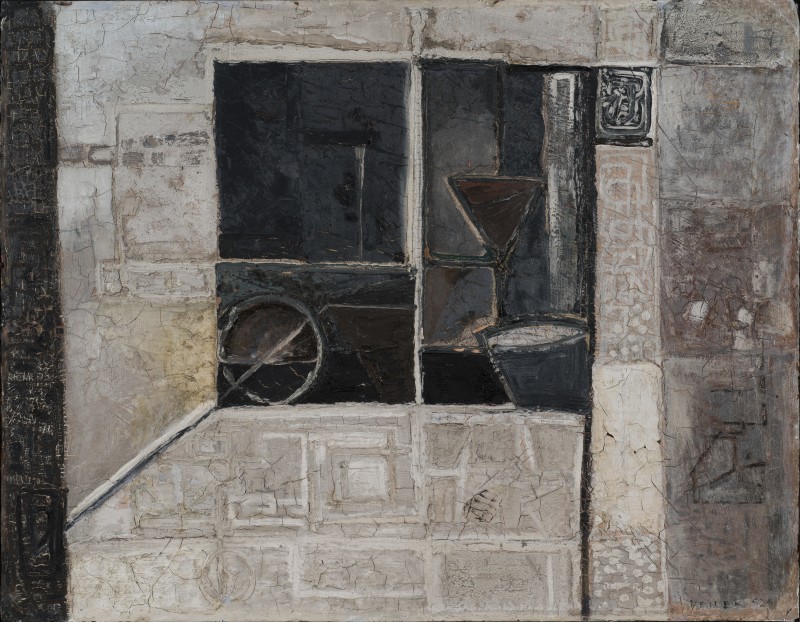 Paul FeilerFalmouth Window, 1952Oil on board71 x 91 cmSigned and dated lower right; titled verso%3Cdiv%20class%3D%22artist%22%3E%3Cspan%20class%3D%22artist%22%3E%3Cstrong%3EPaul%20Feiler%3C/strong%3E%3C/span%3E%3C/div%3E%0D%3Cdiv%20class%3D%22title%22%3E%3Cem%3EFalmouth%20Window%3C/em%3E%2C%201952%3C/div%3E%0D%3Cdiv%20class%3D%22signed_and_dated%22%3ESigned%20and%20dated%20lower%20right%3B%20titled%20verso%3C/div%3E%0D%3Cdiv%20class%3D%22medium%22%3EOil%20on%20board%3C/div%3E%0D%3Cdiv%20class%3D%22dimensions%22%3E71%20x%2091%20cm%3C/div%3E
Paul FeilerFalmouth Window, 1952Oil on board71 x 91 cmSigned and dated lower right; titled verso%3Cdiv%20class%3D%22artist%22%3E%3Cspan%20class%3D%22artist%22%3E%3Cstrong%3EPaul%20Feiler%3C/strong%3E%3C/span%3E%3C/div%3E%0D%3Cdiv%20class%3D%22title%22%3E%3Cem%3EFalmouth%20Window%3C/em%3E%2C%201952%3C/div%3E%0D%3Cdiv%20class%3D%22signed_and_dated%22%3ESigned%20and%20dated%20lower%20right%3B%20titled%20verso%3C/div%3E%0D%3Cdiv%20class%3D%22medium%22%3EOil%20on%20board%3C/div%3E%0D%3Cdiv%20class%3D%22dimensions%22%3E71%20x%2091%20cm%3C/div%3E -
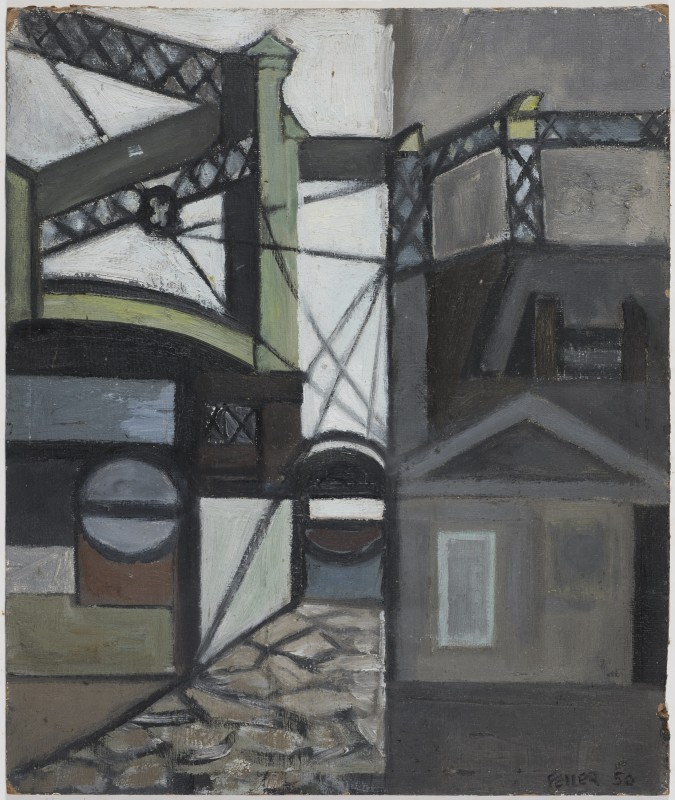 Paul FeilerGasworks, Bristol Harbour, 1950Oil on board33 x 28 cmSigned, dated and titled verso%3Cdiv%20class%3D%22artist%22%3E%3Cspan%20class%3D%22artist%22%3E%3Cstrong%3EPaul%20Feiler%3C/strong%3E%3C/span%3E%3C/div%3E%0D%3Cdiv%20class%3D%22title%22%3E%3Cem%3EGasworks%2C%20Bristol%20Harbour%3C/em%3E%2C%201950%3C/div%3E%0D%3Cdiv%20class%3D%22signed_and_dated%22%3ESigned%2C%20dated%20and%20titled%20verso%3C/div%3E%0D%3Cdiv%20class%3D%22medium%22%3EOil%20on%20board%3C/div%3E%0D%3Cdiv%20class%3D%22dimensions%22%3E33%20x%2028%20cm%3C/div%3E
Paul FeilerGasworks, Bristol Harbour, 1950Oil on board33 x 28 cmSigned, dated and titled verso%3Cdiv%20class%3D%22artist%22%3E%3Cspan%20class%3D%22artist%22%3E%3Cstrong%3EPaul%20Feiler%3C/strong%3E%3C/span%3E%3C/div%3E%0D%3Cdiv%20class%3D%22title%22%3E%3Cem%3EGasworks%2C%20Bristol%20Harbour%3C/em%3E%2C%201950%3C/div%3E%0D%3Cdiv%20class%3D%22signed_and_dated%22%3ESigned%2C%20dated%20and%20titled%20verso%3C/div%3E%0D%3Cdiv%20class%3D%22medium%22%3EOil%20on%20board%3C/div%3E%0D%3Cdiv%20class%3D%22dimensions%22%3E33%20x%2028%20cm%3C/div%3E -
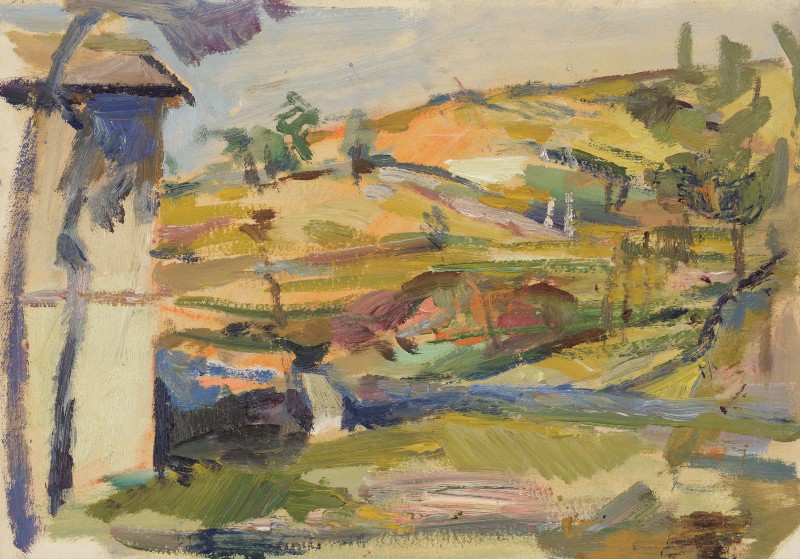 Paul FeilerLandscape near Assisi, 1950Oil on paper18 x 25 cmSigned, dated and titled verso%3Cdiv%20class%3D%22artist%22%3E%3Cspan%20class%3D%22artist%22%3E%3Cstrong%3EPaul%20Feiler%3C/strong%3E%3C/span%3E%3C/div%3E%0D%3Cdiv%20class%3D%22title%22%3E%3Cem%3ELandscape%20near%20Assisi%3C/em%3E%2C%201950%3C/div%3E%0D%3Cdiv%20class%3D%22signed_and_dated%22%3ESigned%2C%20dated%20and%20titled%20verso%3C/div%3E%0D%3Cdiv%20class%3D%22medium%22%3EOil%20on%20paper%3C/div%3E%0D%3Cdiv%20class%3D%22dimensions%22%3E18%20x%2025%20cm%3C/div%3E
Paul FeilerLandscape near Assisi, 1950Oil on paper18 x 25 cmSigned, dated and titled verso%3Cdiv%20class%3D%22artist%22%3E%3Cspan%20class%3D%22artist%22%3E%3Cstrong%3EPaul%20Feiler%3C/strong%3E%3C/span%3E%3C/div%3E%0D%3Cdiv%20class%3D%22title%22%3E%3Cem%3ELandscape%20near%20Assisi%3C/em%3E%2C%201950%3C/div%3E%0D%3Cdiv%20class%3D%22signed_and_dated%22%3ESigned%2C%20dated%20and%20titled%20verso%3C/div%3E%0D%3Cdiv%20class%3D%22medium%22%3EOil%20on%20paper%3C/div%3E%0D%3Cdiv%20class%3D%22dimensions%22%3E18%20x%2025%20cm%3C/div%3E -
Paul FeilerThe Line, 1950Oil on canvas76 x 94 cmSigned, dated and titled verso%3Cdiv%20class%3D%22artist%22%3E%3Cspan%20class%3D%22artist%22%3E%3Cstrong%3EPaul%20Feiler%3C/strong%3E%3C/span%3E%3C/div%3E%0D%3Cdiv%20class%3D%22title%22%3E%3Cem%3EThe%20Line%3C/em%3E%2C%201950%3C/div%3E%0D%3Cdiv%20class%3D%22signed_and_dated%22%3ESigned%2C%20dated%20and%20titled%20verso%3C/div%3E%0D%3Cdiv%20class%3D%22medium%22%3EOil%20on%20canvas%3C/div%3E%0D%3Cdiv%20class%3D%22dimensions%22%3E76%20x%2094%20cm%3C/div%3E
-
 Paul FeilerThe Line, 1950Oil on canvas76 x 94 cmSigned, dated and titled verso%3Cdiv%20class%3D%22artist%22%3E%3Cspan%20class%3D%22artist%22%3E%3Cstrong%3EPaul%20Feiler%3C/strong%3E%3C/span%3E%3C/div%3E%0D%3Cdiv%20class%3D%22title%22%3E%3Cem%3EThe%20Line%3C/em%3E%2C%201950%3C/div%3E%0D%3Cdiv%20class%3D%22signed_and_dated%22%3ESigned%2C%20dated%20and%20titled%20verso%3C/div%3E%0D%3Cdiv%20class%3D%22medium%22%3EOil%20on%20canvas%3C/div%3E%0D%3Cdiv%20class%3D%22dimensions%22%3E76%20x%2094%20cm%3C/div%3E
Paul FeilerThe Line, 1950Oil on canvas76 x 94 cmSigned, dated and titled verso%3Cdiv%20class%3D%22artist%22%3E%3Cspan%20class%3D%22artist%22%3E%3Cstrong%3EPaul%20Feiler%3C/strong%3E%3C/span%3E%3C/div%3E%0D%3Cdiv%20class%3D%22title%22%3E%3Cem%3EThe%20Line%3C/em%3E%2C%201950%3C/div%3E%0D%3Cdiv%20class%3D%22signed_and_dated%22%3ESigned%2C%20dated%20and%20titled%20verso%3C/div%3E%0D%3Cdiv%20class%3D%22medium%22%3EOil%20on%20canvas%3C/div%3E%0D%3Cdiv%20class%3D%22dimensions%22%3E76%20x%2094%20cm%3C/div%3E -
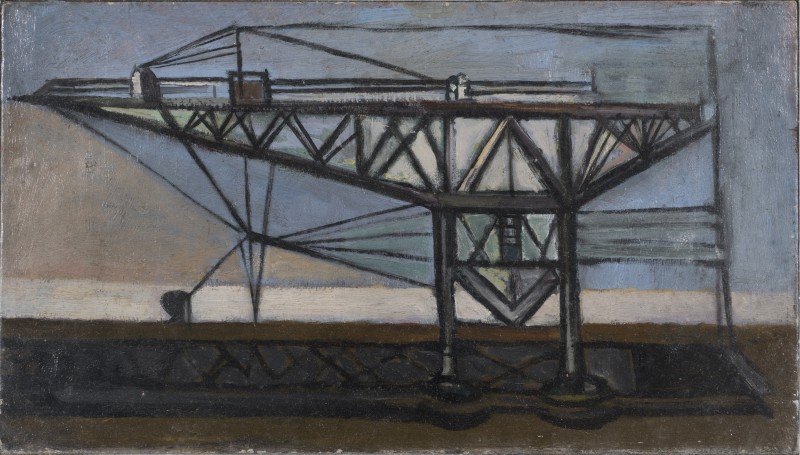 Paul FeilerCrane II (Bristol Docks), 1949Oil on canvas20 x 30 cmSigned, dated and titled verso%3Cdiv%20class%3D%22artist%22%3E%3Cspan%20class%3D%22artist%22%3E%3Cstrong%3EPaul%20Feiler%3C/strong%3E%3C/span%3E%3C/div%3E%0D%3Cdiv%20class%3D%22title%22%3E%3Cem%3ECrane%20II%20%28Bristol%20Docks%29%3C/em%3E%2C%201949%3C/div%3E%0D%3Cdiv%20class%3D%22signed_and_dated%22%3ESigned%2C%20dated%20and%20titled%20verso%3C/div%3E%0D%3Cdiv%20class%3D%22medium%22%3EOil%20on%20canvas%3C/div%3E%0D%3Cdiv%20class%3D%22dimensions%22%3E20%20x%2030%20cm%3C/div%3E
Paul FeilerCrane II (Bristol Docks), 1949Oil on canvas20 x 30 cmSigned, dated and titled verso%3Cdiv%20class%3D%22artist%22%3E%3Cspan%20class%3D%22artist%22%3E%3Cstrong%3EPaul%20Feiler%3C/strong%3E%3C/span%3E%3C/div%3E%0D%3Cdiv%20class%3D%22title%22%3E%3Cem%3ECrane%20II%20%28Bristol%20Docks%29%3C/em%3E%2C%201949%3C/div%3E%0D%3Cdiv%20class%3D%22signed_and_dated%22%3ESigned%2C%20dated%20and%20titled%20verso%3C/div%3E%0D%3Cdiv%20class%3D%22medium%22%3EOil%20on%20canvas%3C/div%3E%0D%3Cdiv%20class%3D%22dimensions%22%3E20%20x%2030%20cm%3C/div%3E -
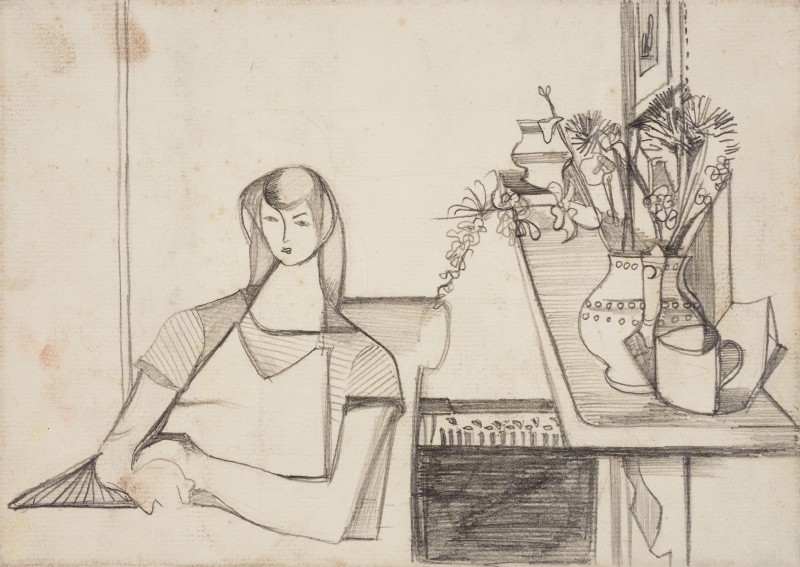 Paul FeilerOld Man's Beard, 1949Pencil on paper15 x 22 cmSigned verso%3Cdiv%20class%3D%22artist%22%3E%3Cspan%20class%3D%22artist%22%3E%3Cstrong%3EPaul%20Feiler%3C/strong%3E%3C/span%3E%3C/div%3E%0D%3Cdiv%20class%3D%22title%22%3E%3Cem%3EOld%20Man%27s%20Beard%3C/em%3E%2C%201949%3C/div%3E%0D%3Cdiv%20class%3D%22signed_and_dated%22%3ESigned%20verso%3C/div%3E%0D%3Cdiv%20class%3D%22medium%22%3EPencil%20on%20paper%3C/div%3E%0D%3Cdiv%20class%3D%22dimensions%22%3E15%20x%2022%20cm%3C/div%3E
Paul FeilerOld Man's Beard, 1949Pencil on paper15 x 22 cmSigned verso%3Cdiv%20class%3D%22artist%22%3E%3Cspan%20class%3D%22artist%22%3E%3Cstrong%3EPaul%20Feiler%3C/strong%3E%3C/span%3E%3C/div%3E%0D%3Cdiv%20class%3D%22title%22%3E%3Cem%3EOld%20Man%27s%20Beard%3C/em%3E%2C%201949%3C/div%3E%0D%3Cdiv%20class%3D%22signed_and_dated%22%3ESigned%20verso%3C/div%3E%0D%3Cdiv%20class%3D%22medium%22%3EPencil%20on%20paper%3C/div%3E%0D%3Cdiv%20class%3D%22dimensions%22%3E15%20x%2022%20cm%3C/div%3E -
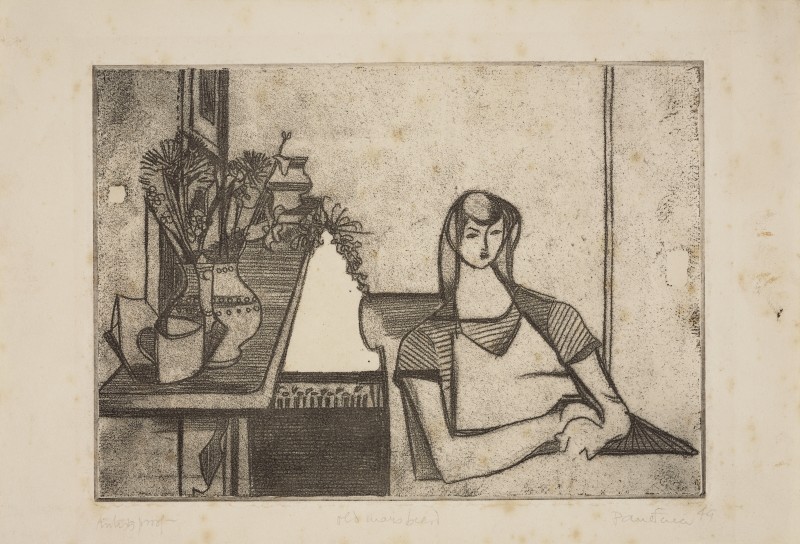 Paul FeilerOld Man's Beard, 1949Etching15 x 21 cm (image)A proof - not known if this plate was ever publishedSigned, dated, titled and inscribed%3Cdiv%20class%3D%22artist%22%3E%3Cspan%20class%3D%22artist%22%3E%3Cstrong%3EPaul%20Feiler%3C/strong%3E%3C/span%3E%3C/div%3E%0D%3Cdiv%20class%3D%22title%22%3E%3Cem%3EOld%20Man%27s%20Beard%3C/em%3E%2C%201949%3C/div%3E%0D%3Cdiv%20class%3D%22signed_and_dated%22%3ESigned%2C%20dated%2C%20titled%20and%20inscribed%3C/div%3E%0D%3Cdiv%20class%3D%22medium%22%3EEtching%3C/div%3E%0D%3Cdiv%20class%3D%22dimensions%22%3E15%20x%2021%20cm%20%28image%29%3C/div%3E%0D%3Cdiv%20class%3D%22edition_details%22%3EA%20proof%20-%20not%20known%20if%20this%20plate%20was%20ever%20published%20%3C/div%3E
Paul FeilerOld Man's Beard, 1949Etching15 x 21 cm (image)A proof - not known if this plate was ever publishedSigned, dated, titled and inscribed%3Cdiv%20class%3D%22artist%22%3E%3Cspan%20class%3D%22artist%22%3E%3Cstrong%3EPaul%20Feiler%3C/strong%3E%3C/span%3E%3C/div%3E%0D%3Cdiv%20class%3D%22title%22%3E%3Cem%3EOld%20Man%27s%20Beard%3C/em%3E%2C%201949%3C/div%3E%0D%3Cdiv%20class%3D%22signed_and_dated%22%3ESigned%2C%20dated%2C%20titled%20and%20inscribed%3C/div%3E%0D%3Cdiv%20class%3D%22medium%22%3EEtching%3C/div%3E%0D%3Cdiv%20class%3D%22dimensions%22%3E15%20x%2021%20cm%20%28image%29%3C/div%3E%0D%3Cdiv%20class%3D%22edition_details%22%3EA%20proof%20-%20not%20known%20if%20this%20plate%20was%20ever%20published%20%3C/div%3E -
 Paul FeilerThe Pier, 1949Etching12 x 22 cm (image)A proof - not known if this plate was ever publishedSigned, dated, titled and inscribed%3Cdiv%20class%3D%22artist%22%3E%3Cspan%20class%3D%22artist%22%3E%3Cstrong%3EPaul%20Feiler%3C/strong%3E%3C/span%3E%3C/div%3E%0D%3Cdiv%20class%3D%22title%22%3E%3Cem%3EThe%20Pier%3C/em%3E%2C%201949%3C/div%3E%0D%3Cdiv%20class%3D%22signed_and_dated%22%3ESigned%2C%20dated%2C%20titled%20and%20inscribed%3C/div%3E%0D%3Cdiv%20class%3D%22medium%22%3EEtching%3C/div%3E%0D%3Cdiv%20class%3D%22dimensions%22%3E12%20x%2022%20cm%20%28image%29%3C/div%3E%0D%3Cdiv%20class%3D%22edition_details%22%3EA%20proof%20-%20not%20known%20if%20this%20plate%20was%20ever%20published%3C/div%3E
Paul FeilerThe Pier, 1949Etching12 x 22 cm (image)A proof - not known if this plate was ever publishedSigned, dated, titled and inscribed%3Cdiv%20class%3D%22artist%22%3E%3Cspan%20class%3D%22artist%22%3E%3Cstrong%3EPaul%20Feiler%3C/strong%3E%3C/span%3E%3C/div%3E%0D%3Cdiv%20class%3D%22title%22%3E%3Cem%3EThe%20Pier%3C/em%3E%2C%201949%3C/div%3E%0D%3Cdiv%20class%3D%22signed_and_dated%22%3ESigned%2C%20dated%2C%20titled%20and%20inscribed%3C/div%3E%0D%3Cdiv%20class%3D%22medium%22%3EEtching%3C/div%3E%0D%3Cdiv%20class%3D%22dimensions%22%3E12%20x%2022%20cm%20%28image%29%3C/div%3E%0D%3Cdiv%20class%3D%22edition_details%22%3EA%20proof%20-%20not%20known%20if%20this%20plate%20was%20ever%20published%3C/div%3E -
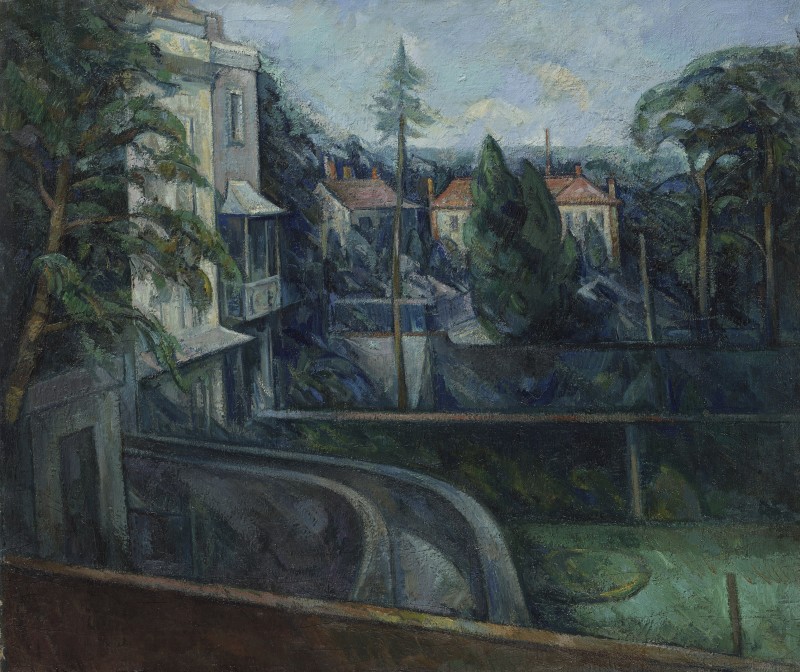 Paul FeilerOver the Garden Wall, 1948-49Oil on canvas56 x 66 cmSigned, dated and titled verso%3Cdiv%20class%3D%22artist%22%3E%3Cspan%20class%3D%22artist%22%3E%3Cstrong%3EPaul%20Feiler%3C/strong%3E%3C/span%3E%3C/div%3E%0D%3Cdiv%20class%3D%22title%22%3E%3Cem%3EOver%20the%20Garden%20Wall%3C/em%3E%2C%201948-49%3C/div%3E%0D%3Cdiv%20class%3D%22signed_and_dated%22%3ESigned%2C%20dated%20and%20titled%20verso%3C/div%3E%0D%3Cdiv%20class%3D%22medium%22%3EOil%20on%20canvas%3C/div%3E%0D%3Cdiv%20class%3D%22dimensions%22%3E56%20x%2066%20cm%3C/div%3E
Paul FeilerOver the Garden Wall, 1948-49Oil on canvas56 x 66 cmSigned, dated and titled verso%3Cdiv%20class%3D%22artist%22%3E%3Cspan%20class%3D%22artist%22%3E%3Cstrong%3EPaul%20Feiler%3C/strong%3E%3C/span%3E%3C/div%3E%0D%3Cdiv%20class%3D%22title%22%3E%3Cem%3EOver%20the%20Garden%20Wall%3C/em%3E%2C%201948-49%3C/div%3E%0D%3Cdiv%20class%3D%22signed_and_dated%22%3ESigned%2C%20dated%20and%20titled%20verso%3C/div%3E%0D%3Cdiv%20class%3D%22medium%22%3EOil%20on%20canvas%3C/div%3E%0D%3Cdiv%20class%3D%22dimensions%22%3E56%20x%2066%20cm%3C/div%3E -
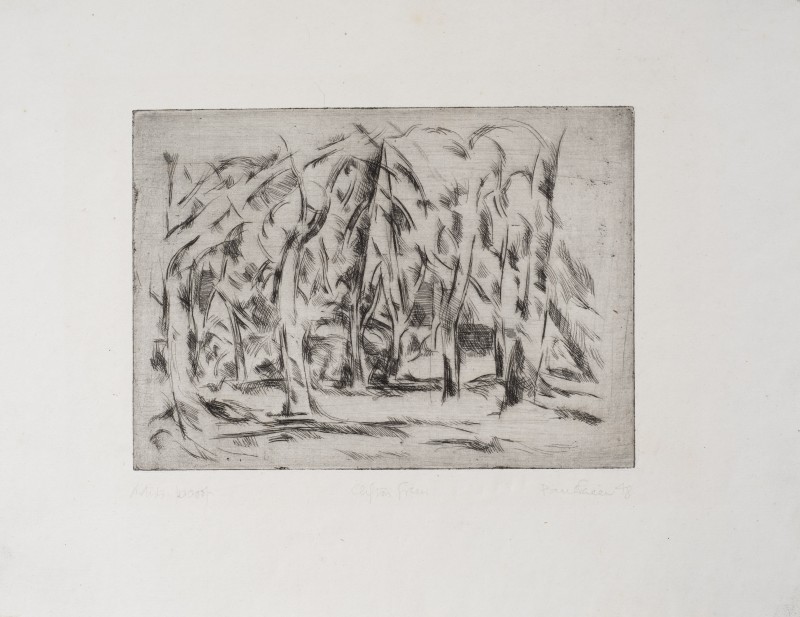 Paul FeilerClifton Trees, 1948Etching12 x 17 cm (image)A proof - not known if this plate was ever publishedSigned, dated, titled and inscribed%3Cdiv%20class%3D%22artist%22%3E%3Cspan%20class%3D%22artist%22%3E%3Cstrong%3EPaul%20Feiler%3C/strong%3E%3C/span%3E%3C/div%3E%0D%3Cdiv%20class%3D%22title%22%3E%3Cem%3EClifton%20Trees%3C/em%3E%2C%201948%3C/div%3E%0D%3Cdiv%20class%3D%22signed_and_dated%22%3ESigned%2C%20dated%2C%20titled%20and%20inscribed%3C/div%3E%0D%3Cdiv%20class%3D%22medium%22%3EEtching%3C/div%3E%0D%3Cdiv%20class%3D%22dimensions%22%3E12%20x%2017%20cm%20%28image%29%3C/div%3E%0D%3Cdiv%20class%3D%22edition_details%22%3EA%20proof%20-%20not%20known%20if%20this%20plate%20was%20ever%20published%3C/div%3E
Paul FeilerClifton Trees, 1948Etching12 x 17 cm (image)A proof - not known if this plate was ever publishedSigned, dated, titled and inscribed%3Cdiv%20class%3D%22artist%22%3E%3Cspan%20class%3D%22artist%22%3E%3Cstrong%3EPaul%20Feiler%3C/strong%3E%3C/span%3E%3C/div%3E%0D%3Cdiv%20class%3D%22title%22%3E%3Cem%3EClifton%20Trees%3C/em%3E%2C%201948%3C/div%3E%0D%3Cdiv%20class%3D%22signed_and_dated%22%3ESigned%2C%20dated%2C%20titled%20and%20inscribed%3C/div%3E%0D%3Cdiv%20class%3D%22medium%22%3EEtching%3C/div%3E%0D%3Cdiv%20class%3D%22dimensions%22%3E12%20x%2017%20cm%20%28image%29%3C/div%3E%0D%3Cdiv%20class%3D%22edition_details%22%3EA%20proof%20-%20not%20known%20if%20this%20plate%20was%20ever%20published%3C/div%3E -
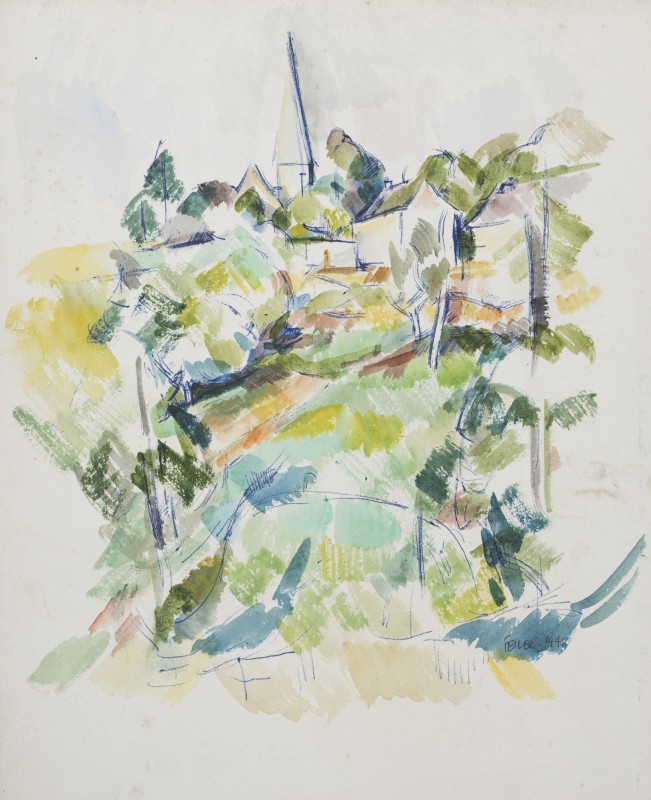 Paul FeilerFailand Church, 1948Watercolour on paper28 x 23 cmSigned and dated lower right%3Cdiv%20class%3D%22artist%22%3E%3Cspan%20class%3D%22artist%22%3E%3Cstrong%3EPaul%20Feiler%3C/strong%3E%3C/span%3E%3C/div%3E%0D%3Cdiv%20class%3D%22title%22%3E%3Cem%3EFailand%20Church%3C/em%3E%2C%201948%3C/div%3E%0D%3Cdiv%20class%3D%22signed_and_dated%22%3ESigned%20and%20dated%20lower%20right%3C/div%3E%0D%3Cdiv%20class%3D%22medium%22%3EWatercolour%20on%20paper%3C/div%3E%0D%3Cdiv%20class%3D%22dimensions%22%3E28%20x%2023%20cm%3C/div%3E
Paul FeilerFailand Church, 1948Watercolour on paper28 x 23 cmSigned and dated lower right%3Cdiv%20class%3D%22artist%22%3E%3Cspan%20class%3D%22artist%22%3E%3Cstrong%3EPaul%20Feiler%3C/strong%3E%3C/span%3E%3C/div%3E%0D%3Cdiv%20class%3D%22title%22%3E%3Cem%3EFailand%20Church%3C/em%3E%2C%201948%3C/div%3E%0D%3Cdiv%20class%3D%22signed_and_dated%22%3ESigned%20and%20dated%20lower%20right%3C/div%3E%0D%3Cdiv%20class%3D%22medium%22%3EWatercolour%20on%20paper%3C/div%3E%0D%3Cdiv%20class%3D%22dimensions%22%3E28%20x%2023%20cm%3C/div%3E
